









New Zealand’s best stories often start local and grow onto the world stage. This year’s Local to Global edition of SupermarketNews reflects exactly that: a local view with a global focus.
Our food and fibre sectors continue to stand tall internationally, driving both value and reputation. Dairy remains the backbone of our export story, underpinning the strength of our economy and reminding us that quality and consistency will always find demand abroad. Wine, meanwhile, has carved out a position of prestige. New Zealand bottles carry with them the weight of regional
identity and sustainability, ensuring they command recognition and respect across competitive global markets.
Red meat producers are navigating changing demand with agility, strengthening ties with traditional partners while exploring new opportunities. It is this adaptability that secures New Zealand’s place as a trusted source of premium protein, even as global conditions shift. Honey, particularly mānuka, shows another side of our export capability: winning not on volume, but on uniqueness and story. Each jar carries a sense of place and authenticity that continues to resonate strongly with international consumers.
Beyond these established giants, smaller players are also seizing global opportunities.
Fix & Fogg’s growth in the United States and Forty Thieves’ expansion into Asia show that innovation, branding, and determination can take even a niche category like nut butters far beyond our shores. These businesses embody the
entrepreneurial spirit that keeps New Zealand’s food and beverage sector dynamic and forward-looking.
Local to Global is more than just a theme; it is a mindset. It is about recognising that our small domestic market should never be seen as a limitation, but rather as a launch pad. With the right blend of innovation, resilience, and authenticity, New Zealand brands are proving that they can compete, and win, on the world stage.
This edition celebrates those businesses: from the household names continuing to define excellence, to the challengers creating new space for New Zealand in international aisles. Together, they tell a powerful story of a country whose products carry quality, character, and confidence wherever they go. n

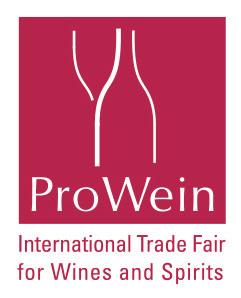














The Food and Grocery Council is an industry association for grocery suppliers providing members networking, events, industry information and strong advocacy. Contact us for information on the benefits of membership: raewyn.bleakley@fgc.org.nz
• Networking • Industry Updates
• Conference and Events
• Education and Training
• Advocacy and Law Reform






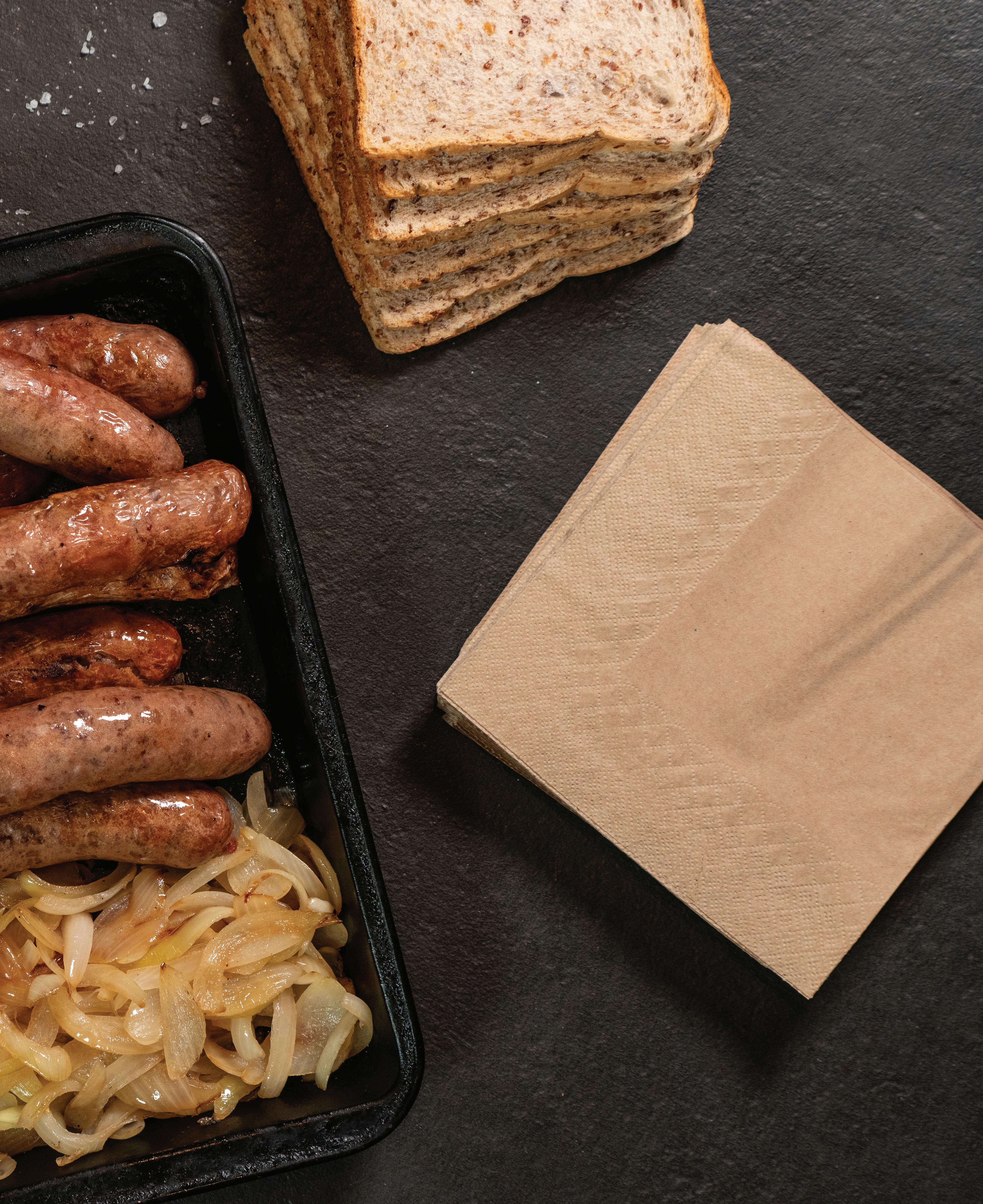


The second Annual Grocery Report has shown progress in the sector, but identified key issues that continue to stifle competition improvement.

In a first for New Zealand’s horticulture sector, the country’s avocado exporters have joined forces to secure a collective FernMark Licence

Complex and outdated labelling regulations cause unnecessary costs and frustrations throughout the economy.

While major strides have been made to elevate and invest in women’s sport in New Zealand, one basic barrier continues to sideline emerging stars - access to period products.

FreshChoice has announced the opening of its brand new store in Tinwald, located at 124 McMurdo Street.
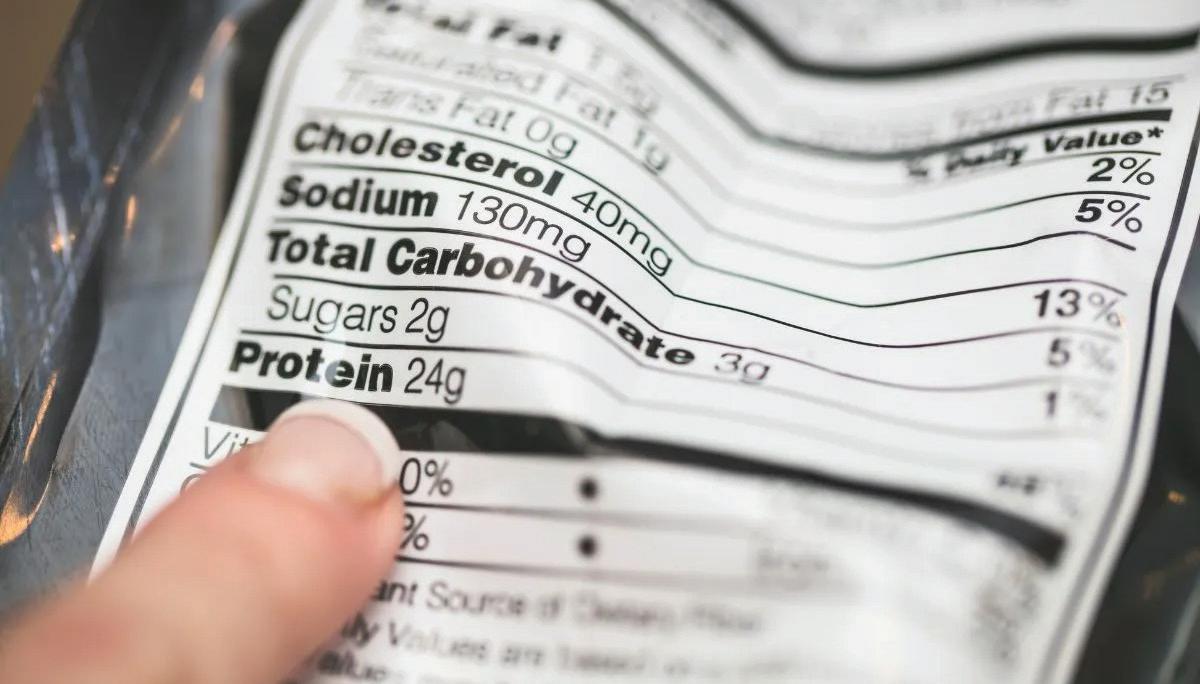
The government's move to review New Zealand's product labelling system has been a welcome move for BusinessNZ.





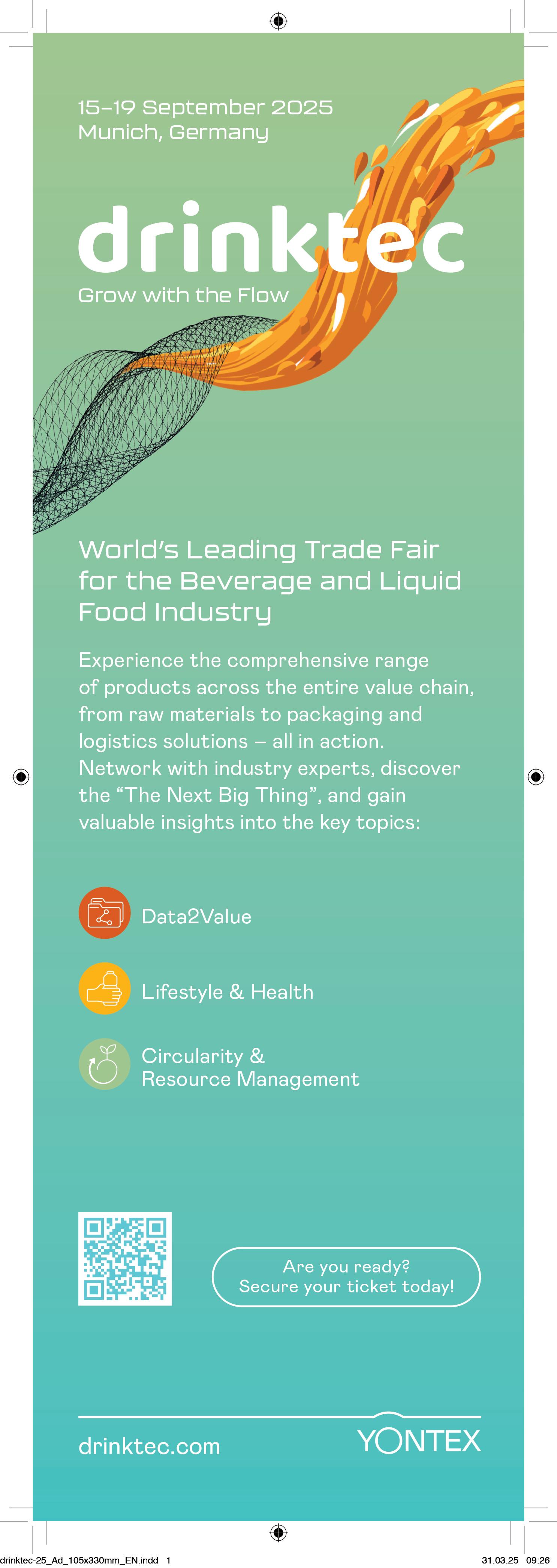

A new chilled and frozen distribution centre in Mangere will futureproof supply chain demands for Foodstuffs North Island.

Yili Group-owned dairy companies operating in New Zealand are on track for strong revenue growth in 2025 after recording significant year-on-year growth for the first half of the year.
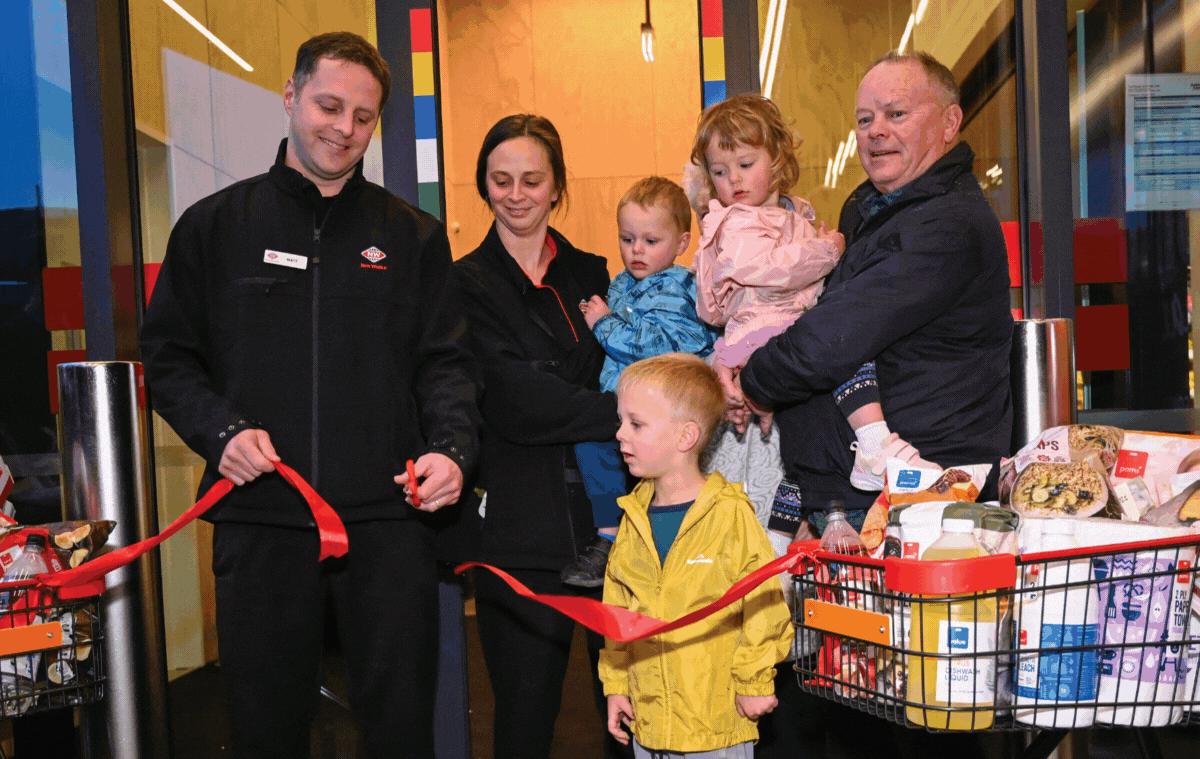
Foodstuffs North Island has officially opened the doors to New World Point Chevalier, adding more shopping choices for locals and creating 120 new jobs in the Auckland suburb.

New Zealand’s economic turnaround continues, slowly but surely.





Pic’s Peanut Butter, the country’s best-selling peanut butter brand, has sold a majority stake to Australian food ingredient supplier Scalzo Foods in a multimillion-dollar deal. The move signals a new chapter for the Nelson-founded business, which has grown from a humble market stall into an international brand recognised for its natural, no-nonsense spreads.
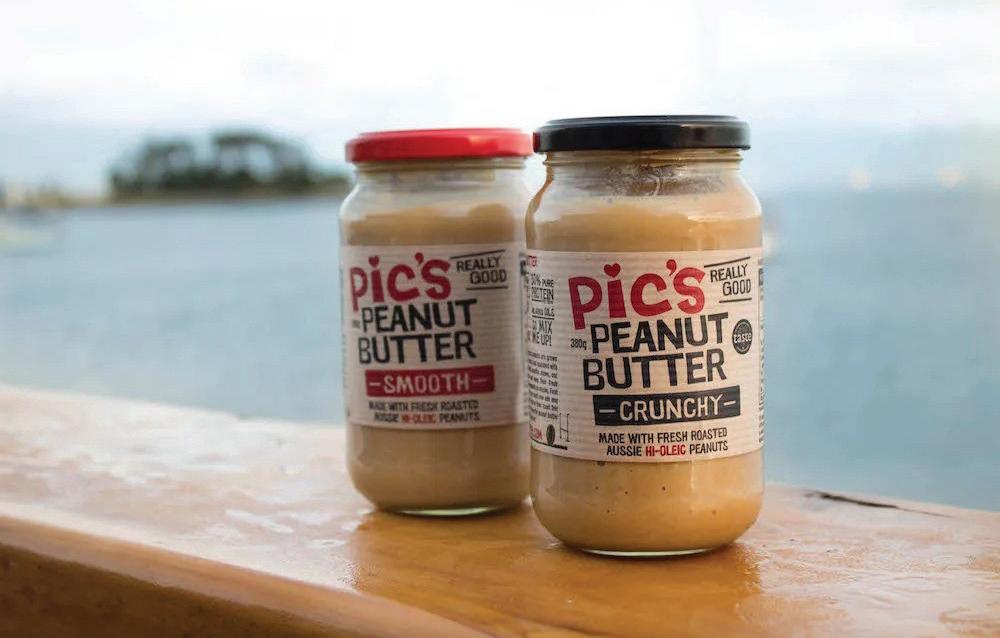
Aimee McCammon, Chief Executive Officer of Pic’s, said Pic’s would still be in control following the deal, and she would stay on to lead the company.
Scalzo Foods will own 51 percent of the Pic’s brand, from which it will provide investment in the brand’s business plan and five-year growth plan.
“Scalzo won’t be taking full ownership of Pic’s at this stage. However, we can’t wait to benefit from their market expertise and growing plan for the company,” said McCammon.
She added that it has been tricky to find the right business partner; however, there were strong similarities between Pic’s and Scalzo.
McCammon, a second-generation member of the Pic’s team, said it was fitting that Scalzo is also a family-owned company.
“Through this partnership, we are able to share our connections are elevate the Pic’s brand. We have previously worked with Scalzo for our peanut supply, and they have the ability to find the best ingredients we need.”
The story of Pic’s began in 2007 when founder Bruce ‘Pic’ Picot bought a jar of supermarket peanut butter and was dismayed to find it packed with sugar. Armed with a few kilos of peanuts, he set about making his own. The homemade spread quickly won fans at the Nelson Market, and word-of-mouth demand turned it into a household name.
“Kiwis have always supported our product, but most importantly, have been connected to our company’s story from the beginning,” added McCammon.
Growth led to a second Nelson site and then the opening of Pic’s Peanut Butter World, which now anchors operations, employs around 50 staff and draws thousands of visitors each year. Tours reinforce transparency around roasting and grinding, and help the brand function as a Nelson Tasman food destination as well as a pantry staple.
Early international recognition helped Pic's to expand offshore. Great Taste Awards in the UK boosted credibility, and distribution followed, including placement in hundreds of Tesco stores and at Partridges

of Kensington. The brand has also moved from online to bricks-and-mortar in China. These steps built the platform for broader Asia, UK and US sales.
Innovation has stayed close to the core: classic smooth and crunchy, with or without salt, plus nut butters and peanut oil. Convenience formats like the single-serve Slug brought new use occasions. Pic’s has also sparked conversation with launches such as KidsCan-supporting “Smunchy” that blended smooth and crunchy, glow-in-the-dark Space Explorer labels, limited runs like Peanut & Chocolate Butter with Whittaker’s, and seasonal plays with New World’s hot cross buns kept the brand relevant to New Zealand consumers.
Pic’s often ties launches to community or waste-reduction stories. A 2022 collaboration with Cathedral Cove Naturals upcycled surplus boysenberries after a local processor closed, preventing hundreds of kilograms of fruit from going to waste. The company has also explored trials with Northland growers to evaluate a homegrown peanut industry, signalling long-term interest in local supply resilience.
Today, Pic’s is firmly established as New Zealand’s leading peanut butter. Its range includes crunchy and smooth peanut butters, with or without salt, as well as almond and cashew butters, peanut oil, and the convenient single-serve “Slug” packs. All products are gluten-free, carry a five-star Health Star rating, and are made using premium peanuts from Kingaroy, Queensland.
Expansion has been a consistent part
of the business journey. A second Nelson factory was opened to meet increasing demand, doubling production capacity and providing more local jobs. Limited-edition products, such as commemorative drinking glass jars, have added to the brand’s appeal.
“Following this deal, we hope Pic’s will be a better-funded and more accelerated brand. It will allow us to welcome more members to our team, and introduce new equipment to our factory,” said McCammon.
She added that innovation within this space was essential to staying on top.
Pic’s products are stocked in supermarkets
throughout New Zealand and Australia, as well as in markets across Asia, the UK, and the US, with mail-order customers worldwide. It has been on Australian shelves for 13 years and looks to expand its foothold on the Australian market through its partnership with Scalzo.
Picot has long described his vision as creating a world-recognised premium peanut butter brand. The new partnership with Scalzo Foods is expected to strengthen Pic’s growth trajectory and support its ambition to take New Zealand’s favourite peanut butter to even more global shelves. n





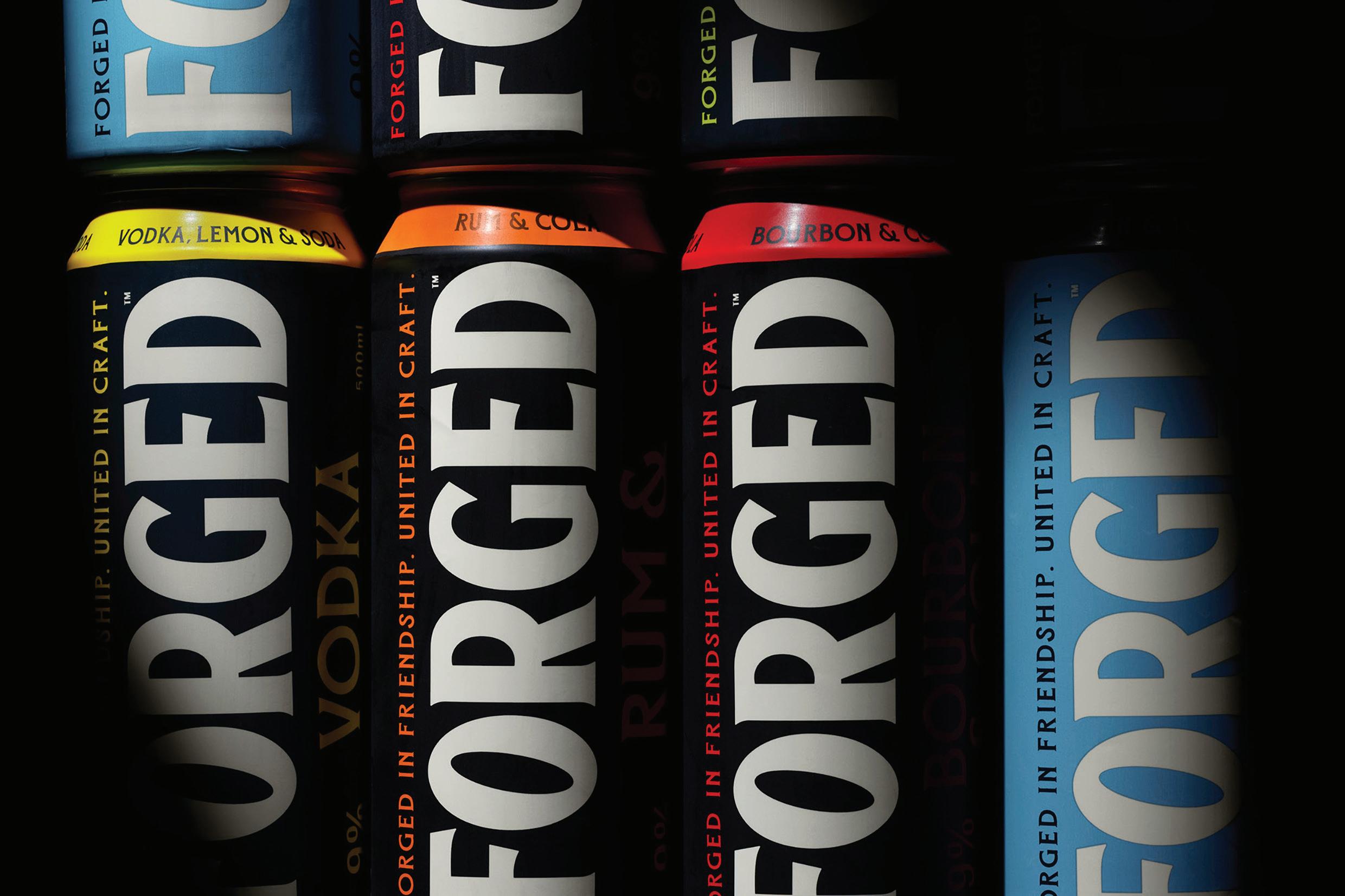
As a heavily tourist-based economy, Fiji is skewed towards international liquor brands in resorts, hospitality, and retail stores.
Pacific Island Beverages saw an opportunity for something new and better. The brainchild of two colleagues who, having previously worked together, set out to develop a locally made and locally owned product.
Establishing the business from scratch is not for the faint-hearted. Enlisting Onfire Design to help guide the development, the project started to take shape. Naming, identity design and marketing were completed in tandem with the physical build of the premises in Nadi. The owners recognised that the first brand and range of products from the fledgling business needed to establish a presence in local retail. With a
list of NPD planned out, the first one to hit the market was a range of RTD beverages.
The range consists of dark and light cocktails formulated with a distinct Fijian flair. In large 500ml cans, perfect for sharing, the classic mixes called out for a strong identity. Inspired by the new business’s founding partners, friends first – and Fiji’s deep-rooted culture of kinship – the name FORGED was given the go-ahead.
Onfire Creative Director, Matt Grantham, recalled, “The name also speaks to strength, loyalty, and something made to last. The oversized cans selected were the result of an investigation into how these drinks are consumed and shared among
friends and family, where one can might be enjoyed by a group.”
While a forge is best known as somewhere a blacksmith works, the parallels with packaging design aren’t lost on Grantham.
“Getting the best result not only requires a degree of skill, but also extreme focussometimes combined with a bit of blood, sweat and tears. And you have to come up with the goods when the heat is on.”
Visually, the brand uses dark colour palettes and craft cues but adds a modern twist with oversized typography and strong use of pop colours. The FORGED wordmark is bold, heavy, and proud with soft serifs that nod to knowledge and craft. Retail boxes amplify this language, using typography size and colour contrast to maximise impact.
Launched with four bold flavours, FORGED has rapidly carved out a place in Fiji’s competitive RTD market. In just a short time, it’s secured distribution in all major supermarkets nationwide and 80 percent of liquor outlets, offering
consumers a proud local alternative to the global heavyweights. With strong retail momentum, the brand is now turning its attention to making inroads into the hospitality sector.
"Working with Onfire Design has been an exceptional journey. Their creativity, strategic vision, and design expertise have been pivotal in shaping FORGED into the success story it is today,” added Pacific Island Beverages.
To forge ahead with Onfire Design, visit weareonfire.co.nz or contact its Founder, Sam Allan, on 09 480 2036.

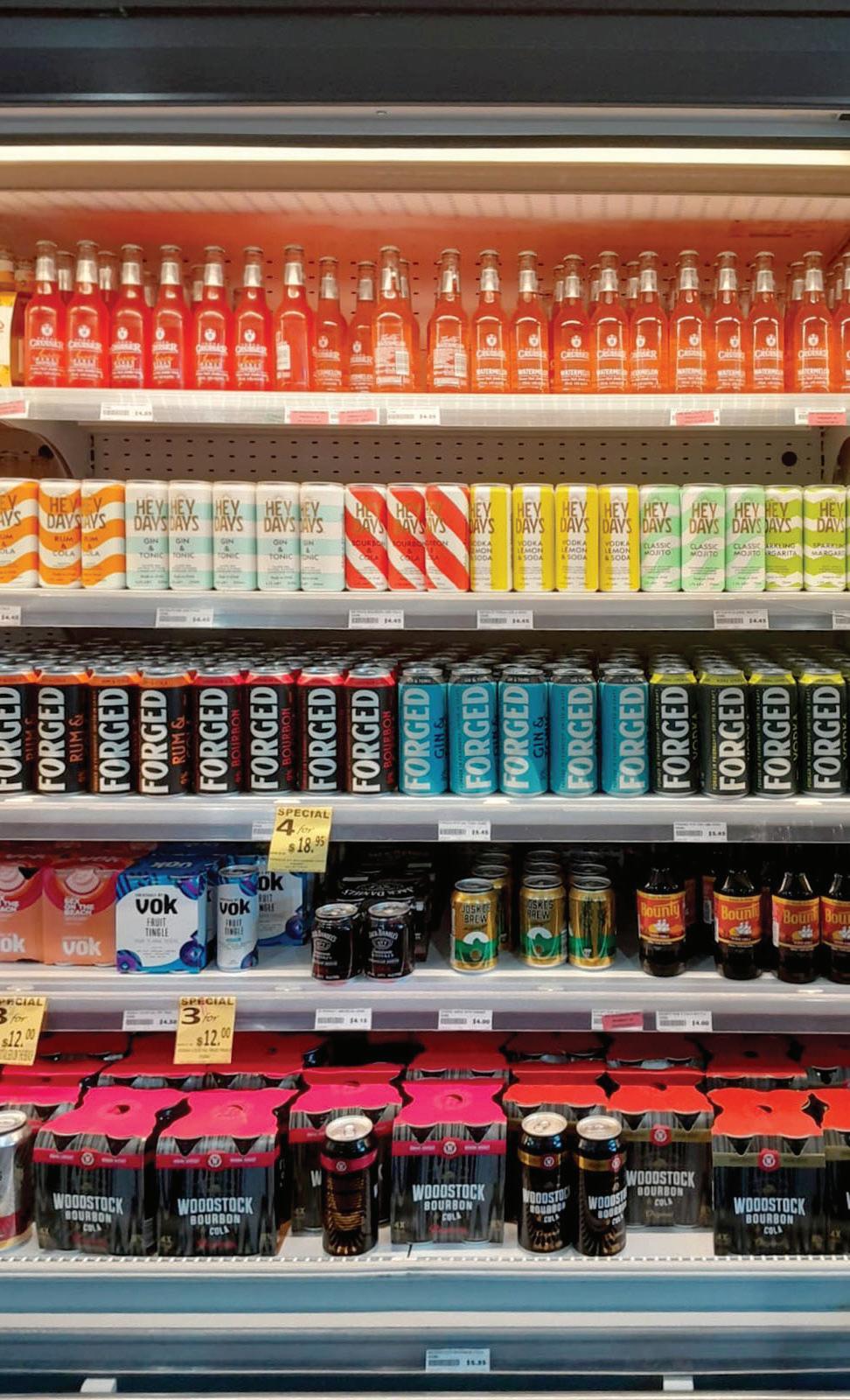








The battle for shelf space in New Zealand supermarkets has always been fierce, but the tools to win it are evolving rapidly. While image recognition technology for retail auditing isn't new, what's happening now represents a fundamental shift in how suppliers can engage with retailers, particularly in the complex Foodstuffs ecosystem.
Ten years ago, when Insightful. Mobi first ventured into visual shelf scanning through thirdparty partnerships; the technology was promising, but cumbersome. Training models required thousands of images per SKU, and deployment could take weeks. Today, using proprietary in-house developed visual recognition models leveraging the latest AI advances, that same process takes just 48 hours with minimal product images required.
This speed matters enormously in the fastmoving grocery sector, where new products launch weekly and packaging changes constantly. But the real breakthrough isn't just technical; it's strategic.

The Foodstuffs Challenge
Despite Foodstuffs' recent shift to head office-only ranging for new products, individual store owners still maintain significant autonomy over their planograms. Walk into five different Pak'nSave stores, and you'll likely see five different shelf layouts for the same category. This creates a massive challenge for suppliers: key SKUs can be completely absent from the aisle in some stores, putting both the retailer and supplier at a disadvantage.
One launch customer of Insightful.Mobi's latest platform discovered exactly this problem. Their field reps were spending 15 minutes per store manually auditing shelves, only to find wildly inconsistent execution
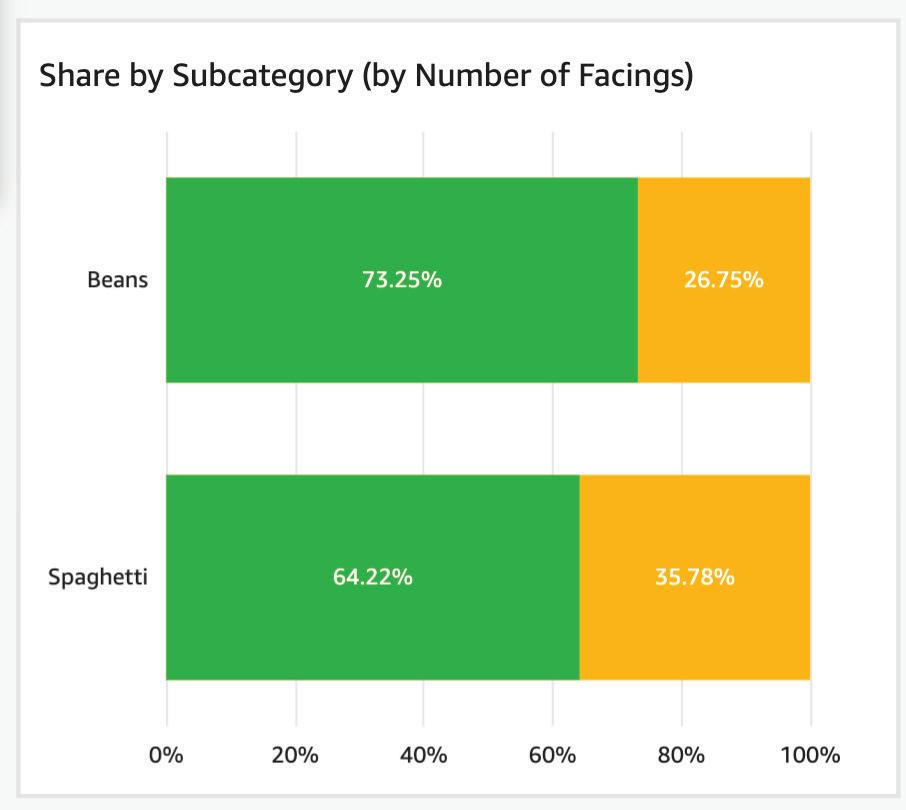
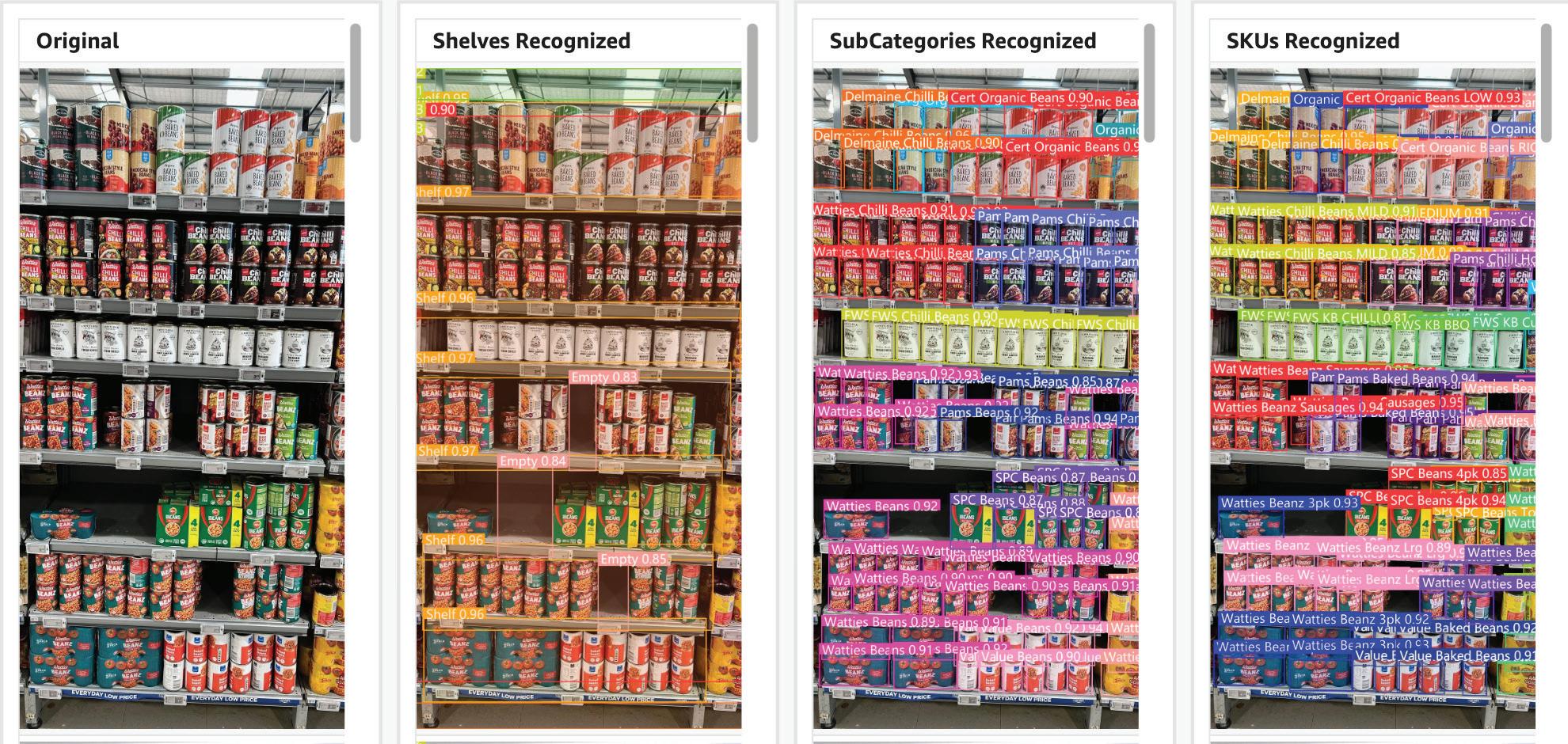
across the Foodstuffs network. High-velocity products were out of stock, planogram compliance sat at just 65 percent, and facing counts bore little resemblance to what head office had agreed.
Armed with iPads running Insightful. Mobi's platform, those same reps now capture shelf images in under a minute. The AI instantly identifies not just what's there, but what's missing, calculating both physical share of shelf and precise facing counts. More importantly, it tracks these metrics over time, building a picture of persistent compliance issues versus one-off problems.
The results speak volumes. Within three months, the launch customer achieved 96 percent on-shelf availability (up from 82 percent), 92 percent planogram compliance (up from 65 percent), and an 8 percent sales uplift in trial stores. Time spent on manual audits dropped by 93 percent, freeing reps to focus on actually fixing problems rather than just documenting them.
Where this technology becomes truly powerful is in its integration with DunnHumby and Quantium data. Suddenly, an out-of-stock isn't just an empty shelf; it's a quantifiable loss of high-value shoppers who specifically seek that product. A compliance issue isn't just untidy; it's costing the store measurable basket value from disappointed customers.
This fusion of shelf reality with shopper science transforms conversations between suppliers and store owners. Instead of vague complaints about execution, suppliers can
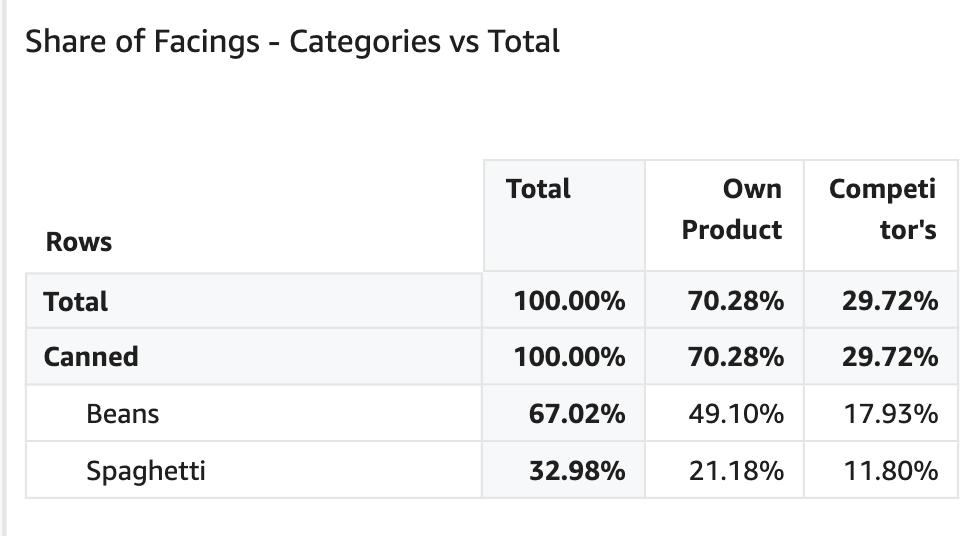
present concrete business cases: "This SKU's 20 percent out-of-stock rate last week cost your store an estimated NZD 2,000, and those shoppers have 30 percent larger baskets than average."
For suppliers aspiring to category captain status, this capability is invaluable. They're no longer just monitoring their own products but can provide retailers with objective, data-driven insights about the entire category's performance. They become the single source of truth, helping retailers navigate the gap between planned and actual shelf execution.
In New Zealand's concentrated grocery market, where supplier-retailer relationships often feel adversarial, this positions
progressive suppliers as indispensable partners rather than mere vendors. They're not asking for better shelf space; they're showing exactly how to grow the entire category.
The technology has matured. The data ecosystems are in place. For suppliers ready to move beyond clipboards and gut feel, the tools to master the final metre of retail have never been more accessible or more powerful.






Crafted as the ultimate 3 pm slump saviour, Ārepa’s new Spiced Orange flavour is a zesty neuro-nostalgic pick-me-up to support clarity and keep you energised, without caffeine or sugar crashes.
Formulated by worldrenowned neuroscientists and backed by clinical research, this 300ml sparkling 97 percent sugar-free, low-calorie drink contains 200mg of American Ginseng, 200mg L-Theanine and Vitamins B5 & B6.
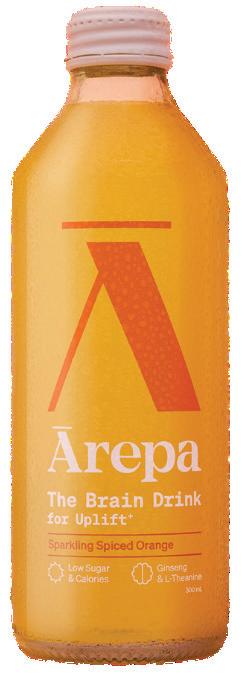
Spiced Orange brings a warming, citrusy twist to the Uplift family. Available exclusively at Farro and New World/Foodstuffs.
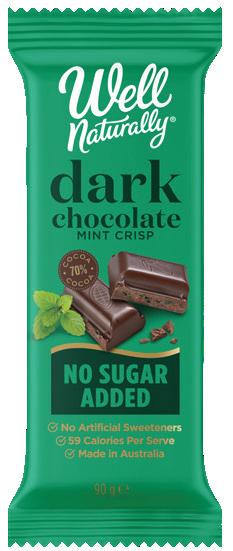




Alliance Trading
Sweet tooths rejoice - grape is officially back, and there’s only one place to get your fix.
Well Naturally Grape Flavour Nibs are the only grape liquoricestyle snack on shelves right now, and they’re worth the wait.
With 50% less sugar than regular jelly lollies, these juicy, bite-sized nibs deliver nostalgic flavour without the guilt. Made from plant-based ingredients, with no artificial colours or flavours, they’re the ultimate modern twist on a classic sweet.
Each 150g pack serves up six portions of purple perfection, only

88 calories per serve and packed with dietary fibre. Proudly made in Australia and 100% palm oil free.
Grape lovers, your moment has arrived.
For orders, contact your local Alliance Marketing Territory Manager or Account Manager Nick Cleaver (021 986 769) on email: ncleaver@alliancemarketing.co.nz
Arepa
Newly crafted with magnesium in direct response to customer demand, this Lemon Yuzu & Vanilla flavour expands Ārepa’s Calm & Clarity range with a refreshing and elevated new option.
Designed to help you unwind, de-stress and take a mindful pause, the 300ml sparkling drink offers a smooth, lightly citrus profile. What makes this release truly innovative is the advanced functional formulation. For

the first time in an Ārepa Brain Drink, it blends 138mg of elemental Magnesium, supporting a healthy nervous system, muscle relaxation, reduced fatigue, and psychological balance, plus 200mg of L-Theanine per serve. Available exclusively at Farro and New World/Foodstuffs.
Alliance Trading
Well Naturally’s beloved 90g Milk Chocolate has a fresh new look - bold, modern, and designed to highlight what matters most to health-conscious chocolate lovers.
The updated packaging is easier to spot and proudly displays key benefits: “No Added Sugar,” “No Artificial Flavours or Colours,” and “100% Real Chocolate.”
Smooth, creamy, and melt-in-your-mouth, this milk chocolate contains 80% less sugar than regular milk chocolate and is naturally sweetened with erythritol and stevia.
Made in Australia with quality ingredients, including 34% cocoa solids, each 90g block offers three 15g servingsjust 65 calories and 1.6g of naturally derived sugar per serve. It’s the ideal guilt-free treat for those who want indulgence without compromise. Same smooth taste. Smarter packaging. For orders, contact your local Alliance Marketing Territory Manager or Account Manager Nick Cleaver (021 986 769) on email: ncleaver@alliancemarketing.co.nz

Sorbent
Sorbent is bringing fresh style to shelves this season with the launch of its limited edition Winter 2025 packaging designs, inspired by the latest interior design trends to look great in any room of the house. Available in Sorbent Silky White boxes of 224 and 90 tissues, these eye-catching designs offer a premium
look to complement the brand’s trusted softness and strength.
Sorbent Silky White 224s continue to lead the category as New Zealand Grocery’s #1 selling facial tissue since 2020.* Check out the new designs instore now.
*Circana TKA, unit sales, years 2020 until MAT 03/08/25.

Rockit™ apple
Share the joy with every bite. Rockit has gone big with its miniature apples and launched a new Small Family Pack into global markets to meet strong consumer demand for everyday sharing occasions.
Just like the iconic Rockit Daily Pack, the Small Family Pack features a resealable lid keeping each Rockit™ apple in peak, ready-
to-eat condition, and a grab-andgo handle made for sharing during all of life’s little moments.
Rockit’s new Small Family Pack is now available in stores across Greater China, South-East Asia, the Middle East and New Zealand.
The perfect snack for every moment - at home, on the go, or in the lunchbox.
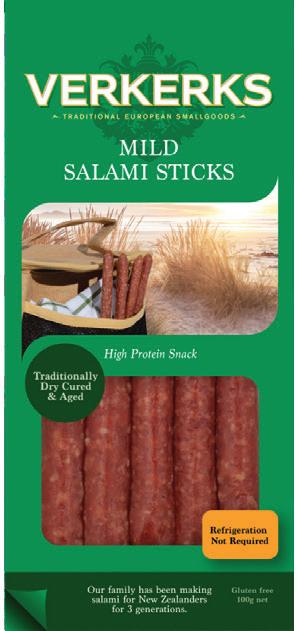


Verkerks
New Zealand’s appetite for convenient, nutritious snacks is booming. Verkerks are excited to launch our new Ambient Salami Sticks range. These shelf-stable (refrigeration not required) salami sticks are packed with 28g of protein per 100g, perfect for on-the-go snacking, multi-day tramps, long road trips or getting protein into the lunchbox.
Crafted with authentic, traditionally dry-cured and aged recipes, they come in three delicious flavours: Mild, Peppered and Garlic. Fuel your day by grabbing Verkerks Ambient Salami Sticks from the Meat Snacks aisle at your local supermarket.
*Only available at South Island New World’s & Pak’nSave’s





Navpreet Kaur Sandhu and Gurjant Singh Sandhu are the new franchisees of Night ‘n Day Taradale Road, bringing fresh energy and dedication to a brand well-known across New Zealand for convenience, consistency, and excellent customer service.
They were drawn to Night ‘n Day’s strong reputation and proven business model, which combines nationwide support with a modern retail approach. The variety of products, ranging from fresh food to groceries, offers a broad appeal that creates multiple revenue streams, a crucial factor for new business owners.
“The support from the Night ‘n Day team has been exceptional,” said the Sandhus.
“Training, systems setup, and ongoing operations have been areas where we’ve felt confident, knowing we are part of a wellestablished brand.”
While there has been a learning curve, the experience so far has been both
exciting and rewarding, with plenty of growth on the horizon.
Team culture is a priority for the Sandhus. They have created an environment founded on mutual respect, open communication, and a shared commitment to delivering exceptional customer service. Continuous learning is encouraged, with regular training designed to develop skills and maintain high standards.
“We lead by example, being hands-on and approachable, always available to support the team.”
Fresh and ready-to-go food offerings stand out in their store, with customers especially enjoying the hot food, barista coffee, and desserts. Presentation, freshness, and speedy
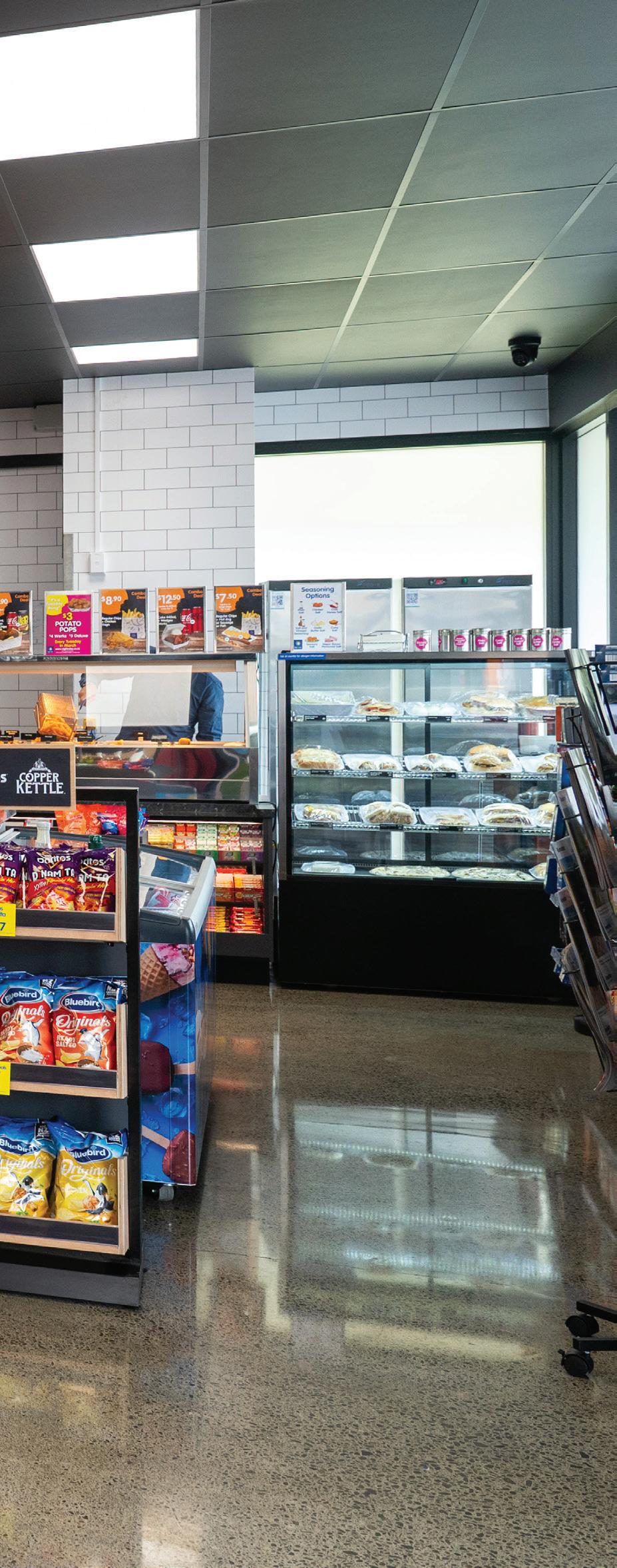

We take pride in being a friendly, reliable, and convenient stop for the neighbourhood, whether people are grabbing lunch, essentials, or a treat.
service have been key to winning the local community’s approval.
Personalising the store to suit local needs has also been important, keeping shelves well-stocked, maintaining cleanliness, and nurturing the popular Milkbar section.

“We take pride in being a friendly, reliable, and convenient stop for the neighbourhood, whether people are grabbing lunch, essentials, or a treat.”
Being part of the Night ‘n Day family has been a rewarding journey, though not without its challenges. The first few months have presented a steep learning curve, encompassing everything from dayto-day operations to team building and customer engagement.
The Sandhus value the support from Night ‘n Day’s head office, which has helped keep them on track and confident in their decisions.
“One of the best parts has been becoming part of the local community and the joy of seeing familiar faces return regularly.”
Their pride in representing Night ‘n Day is evident as they look ahead to continued growth and improvement.
Nicky Gibbs, Business Manager, offered her insight into the rebuild process. The
project began in November 2023 with architectural designs and engineering consultations, moving from concept to complete building plans.
Construction officially started in July 2024 and was completed by early December 2024, a tight schedule achieved through teamwork and dedication.
“A-Grade Construction led the main build and supported the internal fit-out,” said Gibbs.
“Max, Phil, and the team worked late nights and weekends to keep us on schedule.”
Morgan Projects managed day-today operations smoothly, while Evolve Electrical and Karlsson Plumbing ensured all electrical and plumbing needs were met with long hours of work. Their combined efforts resulted in a fantastic space ready to serve customers.
The Taradale location itself carries significance. Originally home to Night ‘n Day before a devastating fire in June 2023, the site has remained a favourite with customers. The longstanding partnership with Gull further cemented the decision to rebuild here.
“It was always our intention to bring Night ‘n Day back to Napier.” n




Reckitt is expanding its over-the-counter analgesics range with the launch of Nurofen Zavance Mini Liquid Capsules –the brand’s smallest liquid capsule to date.
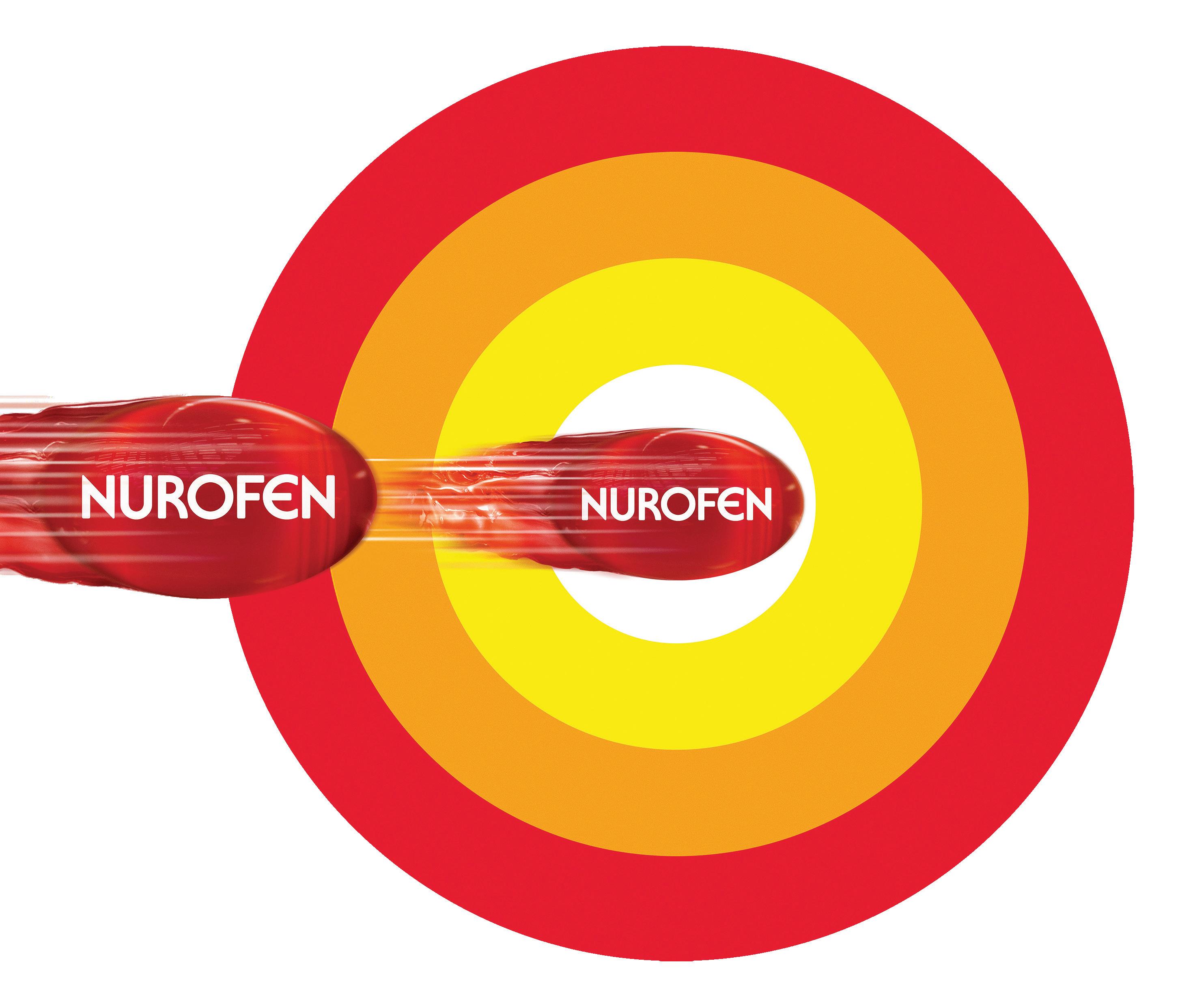


The new format responds to a common consumer concern: difficulty swallowing pain relief products. Recent research shows that 57% of consumers under 30 struggle to swallow pain relief products, and 36% prefer the smallest tablet or capsule available.
At 20% smaller than standard Nurofen Zavance Liquid Capsules, the new mini format offers the same effective pain relief as Nurofen Zavance Liquid Capsules in a more compact size. It is designed to support those who find it challenging to swallow larger capsules.
“We know that ease of use is a key driver of purchase decisions in the pain relief category,” says Dan Amza, Head of Category, Trade Strategy & Activation at Reckitt. “With Nurofen Zavance Mini Liquid Capsules, we’re supporting a clear consumer need while giving retailers a compelling opportunity to grow the category. The smaller liquid capsule size, combined with portability, makes it an easy recommendation for shoppers seeking fast, effective pain relief.”
This launch strengthens Nurofen’s fast relief portfolio, broadening the range of formats available to consumers. While Nurofen Zavance Tablets and Caplets are
absorbed up to twice as fast as standard Nurofen, and Nurofen Quickzorb delivers rapid relief in a tablet format, Nurofen Zavance Liquid Capsules are known for “unleashing the speed of liquid” – using a liquid form of ibuprofen in a soft gelatin shell that dissolves quickly in the stomach.
The Mini Liquid Capsules bring that same effectiveness as Nurofen Zavance Liquid Capsules in a smaller size. Ideal for consumers who value both fast relief and convenience, the new smaller format offers effective relief from a wide range of pain conditions – including pain associated with cold and flu symptoms, headaches and migraines, period pain, back and joint pain, and dental pain.
Another key advantage is that over-thecounter ibuprofen can be taken without food – a benefit for people on the go.
As the health and wellness category continues to grow across supermarkets and pharmacies, this launch presents a strategic growth opportunity for retailers. With consumer-driven innovation, trusted efficacy, and wide therapeutic relevance, this product is a high-potential addition to the analgesics aisle.
Available in 8s and 16s pack sizes in supermarkets, and 32s and 64s in pharmacies, the capsules cater to a range
The Mini Liquid Capsules bring that same effectiveness as Nurofen Zavance Liquid Capsules in a smaller size. Ideal for consumers who value both fast relief and convenience, the new smaller format offers effective relief from a wide range of pain conditions,
of needs and price points. The launch will be supported by a comprehensive retail program including in-store visibility, staff education, and targeted marketing to drive awareness and trial.
With strong consumer appeal and a format designed for ease and effectiveness, Nurofen Zavance Mini Liquid Capsules are set to become a valuable addition to the everyday pain relief aisle.
For the temporary relief from pain and inflammation. Always read the label and follow the directions for use. Incorrect use could be harmful. Do not use if you have a stomach ulcer. If symptoms persist see your healthcare professional. Reckitt, Auckland. TAPS NP23149






The world of sausages has undergone a flavourful revolution, with the market witnessing a blend of tradition and innovation. As consumers seek new experiences and culinary adventures, the sausage market has redefined the way consumers savour this timeless delight.
Anew report, Savouring Innovation: Trends Transforming the Sausages Market, highlighted that key drivers of innovation within the sausage industry included the rising demand for convenient food options as well as the global emphasis on health and wellness trends.
Sausage products that are pre-cooked, prepackaged and heat-and-eat are designed to meet the needs of consumers who are looking for instant and hassle-free meal alternatives that do not sacrifice flavour. This trend is in line with the lifestyle of current customers, who are constantly on the move.
“Consumers today have less time to cook and want a rapid cooking process, and the products stocked are reflecting this,” said Marise Richards, Office Manager, Christchurch Vegan Society.
In terms of trends, producers have been experimenting with global flavours, infusing sausages with spices, herbs, and flavours from diverse cuisines. Whether it's a chorizo with Asian spices or a bratwurst with Mediterranean herbs, this trend has enticed taste buds and expanded the traditional sausage palate.
“Consumer demand for sausages in New Zealand has changed notably in recent years, with shoppers seeking greater choice and quality,” said Retail Meat New Zealand spokesperson.
“While traditional favourites remain popular, there is increasing interest in artisanal-style products that showcase premium cuts, bold flavours, and innovative ingredients.”
Manufacturers have been focusing on using high-quality, natural ingredients, reducing additives, and offering sausages with lower fat and sodium content. In response to the growing emphasis on health and wellness, a notable trend is the rise of health-conscious sausage options with clean labelling.
According to the Retail Meat New Zealand spokesperson, industry initiatives such as the Dunninghams Great New Zealand Sausage Competition, which features 13 categories from traditional to gourmet and alternative options, have helped drive this evolution by encouraging butchers and producers to continually raise the bar.
“The result is a broader and more exciting





Continued from pg. 23
sausage range now available to Kiwi consumers.”
They also mentioned that seasonality played a key role in the sausage category, with barbecues being an essential part of Kiwi summers. The Great New Zealand Sausage Competition is well-timed to reflect this, with awards announced in late October ahead of Labour Weekend and the traditional start of the barbecue season.
At the same time, Jade Jones, Marketing Manager at Dunninghams, added that there has been a shift in sausage consumption, with consumers enjoying it beyond summer BBQs, especially with the rise in gourmet, natural ingredients, as well as gluten-free options.
With regards to sustainability, the Retail Meat New Zealand spokesperson highlighted that the approach to animal welfare and traceability in sausage production depended on the meat used.
They said that in the case of beef and lamb, New Zealand has clear advantages as most animals are free range and pastureraised, with the temperate climate allowing them to roam outdoors year-round.
“The sector is internationally recognised for its low environmental impact, with research showing the carbon footprint of New Zealand beef and lamb is about half the global average. Since 1990, gross greenhouse gas emissions have fallen by more than 32 percent, with further offsets achieved through carbon sequestration on sheep and beef farms.”
However, innovations in food technology have continued and led to the creation of sausages made from ingredients like soy, peas, and mushrooms, offering a savoury and sustainable choice for vegetarian and
Innovations in food technology have led to the creation of sausages made from ingredients like soy, peas, and mushrooms, offering a savoury and sustainable choice for vegetarian and flexitarian consumers.
flexitarian consumers.
“Vegan sausages are increasingly popular. When I went vegan in the 2008 era in Invercargill, options were slender. Fast forward to 2025, where vegan cafes can be found in all major cities, and many provincial areas too, like Murchison, or Ashburton,” said Jordan Wyatt, member of Christchurch Vegan Society.
“One factor drawing greater market share is simply awareness of what farmed animals go through. As I became aware of vegan options, plant-based sausages, I became a regular consumer.”
According to FMI’s Plant-Based Sausages Market Outlook from 2025 to 2035, plantbased pork sausages are projected to hold the largest plant-based sausages market share, due to their ability to mimic the taste and texture of pork sausages closely made using conventional methods.
At the same time, plant-based beef sausage production has been focused on mimicking the texture and taste of traditional beef sausage using ingredients such as pea protein and beet juice for colour and juiciness. Rising consumption of plantbased beef substitutes at fast-food chains and in supermarkets has also aggravated
demand for these items. Still, Marise Richards, Office Manager, Christchurch Vegan Society, mentioned that there was also a lack of reliability in the availability of products on the shelf.
“I was very sad to see Sundfed Meats stop production and supply to supermarkets. For many, this was a New Zealand company product that was gluten-free and cooked well. I now have to buy more overseas brands to fill in this ‘gap’.”
Richards added that tofu had become hard to source in New Zealand lately and that supermarkets have been dropping vegan products and bringing in more processed flavour-type products, in particular drinks and sauces.
By source, plant-based sausages made from soy are expected to hold the largest share of the plant-based sausages market by 2035. Soy protein has been a mainstay in the plant-based food space as it is rich in protein, has all the essential amino acids and is functional with good texture and mouthfeel in meat substitutes.
As the market continues to grow, further development of the sausage market to meet the evolving needs of global consumers will drive growth. n
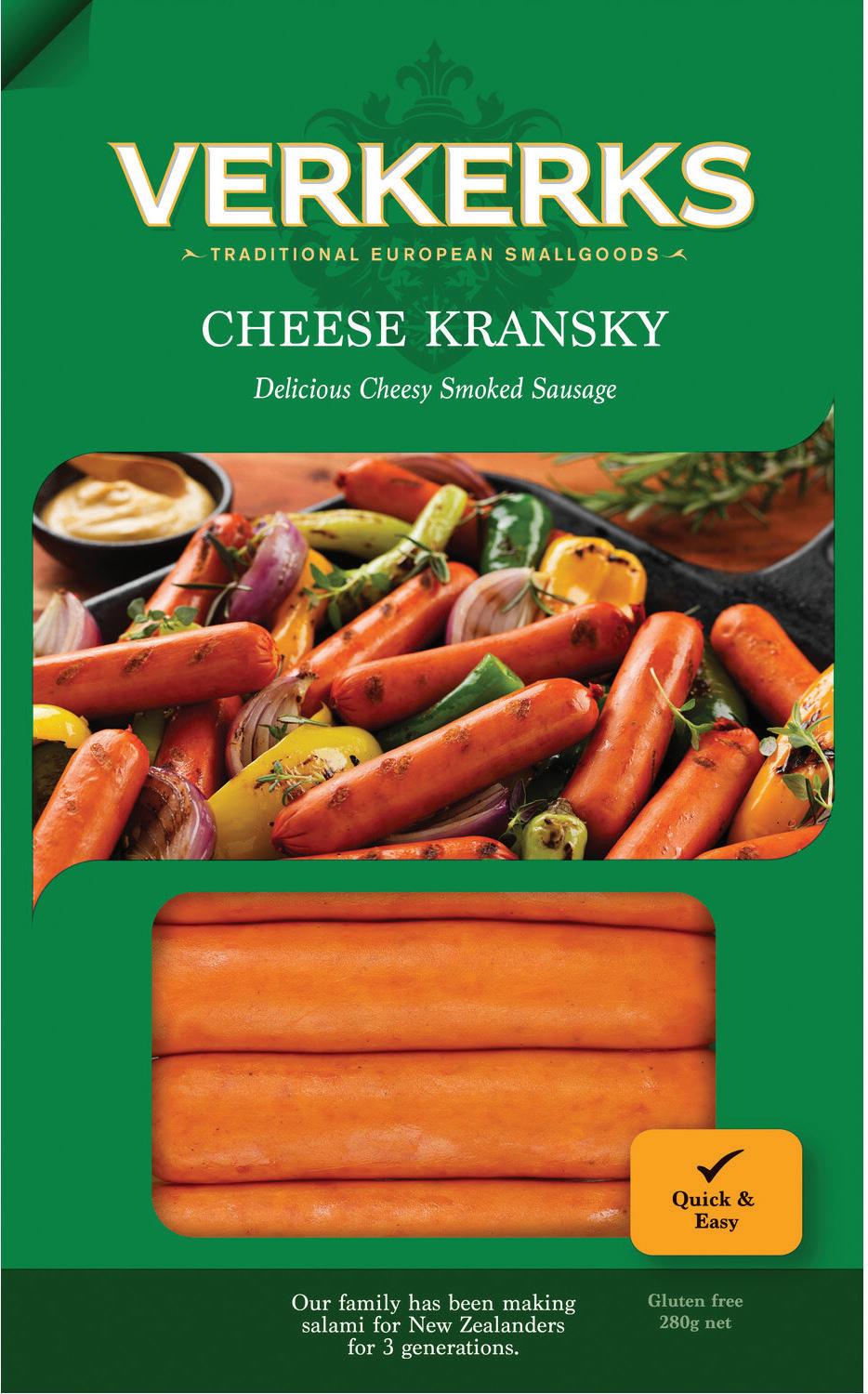
Get ready for BBQ season as warmer weather arrives. Verkerks Cheese Kransky 280g are delicious and versatile, with a great smoky cheese flavour. Our Kransky’s are gluten-free, and perfect for grilling on the BBQ, or make a wonderful addition to a pasta bake.
Whether you’re firing up the grill or creating a comforting family meal, Verkerks delivers great-tasting Kransky’s for the family to enjoy. For three generations, Verkerks has been making salami and small goods for New Zealanders, blending traditional European craftsmanship with local tastes.
Available at supermarkets nationwide, grab Verkerks Cheese Kransky 280g from your local store and elevate your summer feasts.
For more information, visit https://www.verkerks.co.nz/

Beard Brothers premium precooked beef & chicken sausages are made from beef and real chicken, that’s right, as much real beef and chicken as we can pack into a sausage, with the least amount of processing possible to really get the texture and flavour to stand on its own.
We add some key seasoning to complement the meat. It’s the meat we want you to taste, old-school as. These bangers are made with natural hog casings for the best natural flavour, which allows flavours and textures to shine.
With no fillers, no added MSG, no Gluten, and only the best quality minimal seasonings, these oldschool, precooked bangers are the real deal.
For more information, visit www.beardbrothers.co.nz/
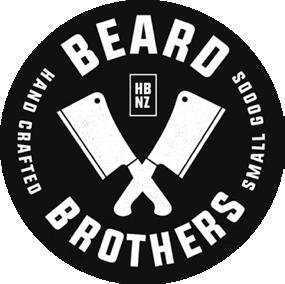






Dunninghams aim to empower butchers and processors to delight shoppers, bringing fresh thinking to a Kiwi staple.
New flavours are developed through market research, culinary trend tracking, and feedback from butchers. Recipes are trialled in-house for texture, flavour, and balance, then tested with customers before launch.
Popular recent releases include Smokey Jalapeño GF, Smokey Bacon & Maple GF, and Spanish Chorizo GF, reflecting demand for bold yet familiar flavours inspired by casual dining.
At the same time, Dunninghams has balanced local New Zealand classics like Old English and Lamb Mint with on-trend flavours and products like Rubs used with low and slow BBQ cooking.
Jade Jones, Marketing Manager at Dunninghams, said that there has been a shift in sausage consumption, with consumers enjoying it beyond summer BBQs, especially with the rise in gourmet, natural ingredients, as well as gluten-free options.
“Seasonal launches are often limited runs,” said Jade Jones, Marketing Manager at Dunninghams.
“We align with Summer BBQs, Easter, or winter, creating staples and small-run, limited production product blends so retailers can test interest before scaling.”
Looking ahead, Jones said growth opportunities were in gourmet global blends, functional health benefits, and convenience formats, low and slow BBQ, ready-to-eat meals, dry rubs, smoked spices, and natural local flavours supported by Dunninghams’ complete supply-chain insight and innovation.
For more information, contact 0800 363 1921 or visit dunninghams.co.nz

Make tonight a Vegie Delight! Vegie Delights offers a tasty range of plant-based products designed for easy, nutritious meals the whole family will love.
With decades of experience in creating delicious meat-free foods, we know it all comes down to what you choose to eat. Our products are high in protein, with added Iron, B12 and Zinc, so you can enjoy the health benefits without compromising on flavour.
From quick weekday dinners to crowd-pleasing party favourites, our plant-based Hot Dogs deliver 18.8g of protein per serve and taste
amazing in a classic hot dog bun or transformed into sausage rolls.
Look for Vegie Delights in the chilled section of your local supermarket and make every meal a plant-based delight!
For more information, contact us on 0800 100 257, or visit https://vegiedelights.co.nz/



NEW FLAVOURS ARE DEVELOPED THROUGH MARKET RESEARCH, CULINARY TREND TRACKING, AND FEEDBACK FROM BUTCHERS.

Recipes are trialled in-house for texture, flavour, and balance, then tested with customers before launch. Popular recent releases include Smokey Jalapeño GF, Smokey Bacon & Maple GF, and Spanish Chorizo GF, reflecting demand for bold yet familiar flavours inspired by casual dining. We balance NZ classics like Old English and Lamb Mint with global profiles such as Mediterranean
herbs and South American spices. Seasonal launches align with BBQs, Easter, or winter, often as limited runs. Trends show more gourmet, natural, gluten-free sausages eaten beyond summer BBQs. Growth opportunities lie in gourmet global blends, functional health benefits, and convenience formats, supported by our full supply-chain insight and innovation.



The Australian Laundry Detergent Market was valued at USD 1.03 billion in 2024, and is expected to reach USD 1.35 billion by 2030, rising at a CAGR of 4.67 percent.
Growth has been driven by increased consumer focus on hygiene, sustainability, and convenience. Environmentally conscious consumers are increasingly opting for eco-friendly, plant-based, and biodegradable products, fueling demand for green alternatives.
The market has also evolved with the introduction of concentrated liquid detergents, pods, and hypoallergenic formulas that cater to specific skin sensitivities.
A shift toward premium and specialised products - such as fragrance-free or dermatologically approved variants - reflects rising expectations for both performance and safety.
At the same time, evolving laundry habits, particularly among younger and urban populations, are influencing product format preferences and driving innovation in the detergent category.
Heightened hygiene awareness, particularly following the COVID-19 pandemic, has become a major catalyst for growth in the Australian laundry detergent market. Consumers are prioritising cleanliness and fabric care, increasing the demand for products that offer deep cleaning and antibacterial protection.
This trend is particularly strong in households with children, elderly members, or individuals with sensitive skin, where the preference leans toward gentle, dermatologically tested formulas. Labels
highlighting properties such as "suitable for sensitive skin" or "antibacterial" are gaining consumer trust. The overall shift toward health-focused product choices is reinforcing the need for effective yet safe laundry solutions across all demographics.
The Australian laundry detergent market is highly competitive, with major global players, leading to continuous price wars, promotional offers, and the proliferation of private-label products from retailers like Woolworths and Coles.
Many consumers remain cost-conscious, especially in light of inflationary pressures, leading them to prioritise affordability over brand loyalty or eco-credentials. This puts pressure on manufacturers to offer innovation without significant cost increases, posing a challenge to the widespread adoption of premium or sustainable alternatives in a price-sensitive market.
A notable trend in the Australian laundry detergent market has been the growing shift from powder to liquid detergents and premeasured pods. These formats are perceived as more convenient, user-friendly, and compatible with modern washing machines, particularly high-efficiency front-loaders. Pods, in particular, are gaining traction for their ease of use, precise dosing, and reduced mess. These attributes resonate with time-pressed consumers and families looking for a streamlined laundry routine.
Additionally, the sleek packaging and concentrated formulations of pods often align with premium positioning, further enhancing their appeal among younger and urban consumers seeking efficiency without sacrificing performance.






Probiotics are changing the cleaning aisle, with formulations that go beyond surface shine, offering deeper, longer cleaning.
Unilever’s investment in probiotic technology for cleaning has seen the launch of probiotic variants for several of its brands: Wipol in Indonesia, Vim in India and Sunlight in Vietnam.
With the launch of the probiotic-powered Home Care range, Hindustan Unilever (HUL) has taken a definitive step towards redefining household cleaning.
Take Vim’s UltraPro Floor Cleaner, for example, a powerful, probiotic-infused solution that not only removes dirt and grime effectively but also ensures that surfaces remain clean for extended periods. The revolutionary formula, backed by
science, has been developed to deliver effective and long-lasting cleaning solutions for consumers.
Vim leveraged Unilever’s cutting-edge, UltraPro technology with probiotics to transform home cleaning. Its floor cleaner integrates these 100 percent natural, ‘friendly’ bacteria safely and reliably into its formula to prevent a buildup of dirt, making cleaning easier and delightfully convenient.
In addition to probiotics, Vim UltraPro also harnessed the benefits of Surface Modification technology. Upon use, this enables the formation of a dirt-repelling layer, giving consumers a spotless, shiny floor.
Vim UltraPro effectively and efficiently
Cif’s new versatile multi-purpose spray was specifically formulated to provide a longer-lasting clean on surfaces ranging from home electronics and worktops to sofas, soft toys and pet beds, long after its application.


removes all types of stains, ranging from food, cosmetics and rust, to footprints, garden soil, limescale, engine oil, and many more. Its versatility renders it a suitable cleaning solution that can be used across the entire home.
And while superior cleaning is one of its key benefits, this floor cleaner also releases soothing natural fragrances that elevate the essence of living spaces. Crafted with essential oils, VIM UltraPro Floor Cleaner is available in variants such as Sparkling Lemon, French Lavender with Sage, and Refreshing Lemongrass with Salt.
In India, the household cleaners’ market has experienced significant growth, driven by the need for more effective cleaning solutions. In keeping with this need, HUL has continued to lead with innovative offerings that blend sustainable packaging,
science, and consumer-centric design.
At the same time, in the UK and Europe, the New Cif Infinite Clean spray has used pioneering bioscience technology and probiotics to transform home cleaning.
Cif Infinite Clean, a new all-in-one spray, uses cutting-edge microbiome technology and probiotics to keep surfaces clean long after application naturally.
In a survey of home care insights, 70 percent of cleaner users said they “would like products to be longer lasting so I didn’t have to clean so often”.
Cif’s new versatile multi-purpose spray was specifically formulated to provide a longerlasting clean on surfaces ranging from home electronics and worktops to sofas, soft toys and pet beds, long after its application.
It also uses a unique ‘continuous mist technology’ trigger system that delivers
a superior cleaning experience across all surfaces. This makes the most of the probiotic bacteria’s ability to live on hard and soft surfaces for up to three days, providing consumers with a versatile, multi-purpose cleaner. They can also get into crevices, making hard-to-reach surfaces far cleaner, too.
“We’re challenging traditional cleaning norms and how people think about cleaning their homes by creating a disruptive cleaning product that harnesses the potency of nature’s probiotics, not just to clean our homes but also to provide a longer-lasting clean,” said Eduardo Campanella, Business Group President of Unilever Home Care.
With the market for probiotics currently worth EUR 70.12 billion and increasing consumer trends for cleaning products with natural ingredients, the global market for probiotics cleaners is expected to grow. n




Walk into a supermarket and grab any product off the shelf. Turn it around and you’ll see the same thing every time: a label bursting with information. Ingredients, nutrition tables, allergy warnings, recycling logos - all squeezed into whatever space is left on the pack. It’s useful, but it’s crowded. And sometimes, it’s hard to find the details that matter to “you” the most.
Now picture this instead: you scan a small code with your phone and instantly see everything you need to know, from allergens to expiry dates, sustainability credentials to recycling instructions, all clear, simple, and always up to date. But that same QR still goes ‘beep’ at the checkout.
This is digital labelling - and it is not just an idea for the future - it is already underway in New Zealand.
What is digital labelling?

Digital labelling uses technology to provide product information in a way that complements the physical label. Instead of cramming every piece of information onto packaging, a product can carry a digital access point, most often a scannable code like a GS1 QR code - that links consumers, retailers, and regulators to up-to-date, detailed product information.
Think of it as the next chapter in labelling: a world where labels are not just printed but live, dynamic, and accessible to anyone with a smartphone or scanner.
Why digital labelling matters
The shift isn’t just about being techsavvy - it’s about solving real problems for consumers, brand owners, and retailers:
• For consumers: Digital labelling means more transparency. Shoppers can scan and instantly see allergen information, expiry dates, recipe ideas, recycling instructions, sustainability credentials - virtually anything. It makes product information more accessible, especially for those with low vision or language barriers.
• For brand owners: Packaging design will become simpler and cleaner. No need to overload labels with compliance fine print - that can live digitally. Product information can also be updated in real time, reducing admin burdens and costly reprints. Information that changes more frequently can be taken off pack and provided digitally.
• For retailers: Faster, smarter supply chains. Digital labelling can link directly to stock, logistics, and product recall systems, making it easier to trace, replenish or withdraw/recall items. When needed this can now be done at the batch or lot level far more efficiently than today.
Globally, the benefits are being recognised. Markets like the European Union, China, and South Korea are already modernising their regulations to enable digital labelling. Locally, the benefits of digital labelling are being explored.
How digital labelling works
Unlike traditional GS1 barcodes that only carry a number, digital labels utilise the QR code and can store a rich array of information. The combination of QR codes with new globally adopted GS1 standards means they can “beep” at the checkout just like regular barcodes while being scannable by consumers with their smartphones. It's important to remember QR codes without the GS1 Standard will not beep at the checkout, and GS1 New Zealand can assist you with this if required.
Retailers like Woolworths New Zealand are already trialing in store, and the transition is underway across the food and grocery sector. Globally, GS1 - the not-forprofit standards organisation best known for the barcode - has set 2027 as the target year for retail businesses to be ready to scan digital labels at point of sale.
Why now?
The timing couldn’t be better for digital labelling to be rolling out in New Zealand. Product recalls can be more precisely managed at the batch level rather than the whole SKU reducing waste, increasingly shoppers want more transparency, export markets are demanding new compliance requirements, and packaging is under pressure to do more with less.
What’s next for New Zealand?
Rolling out digital labelling in NZ is a journey but momentum is building. GS1 New Zealand and major retailers are already working with industry to test, pilot, and scale digital labelling initiatives. The government’s review of product labelling - due to conclude in late 2025 - presents a golden opportunity to set the rules of the game for the future of labelling in New Zealand.
How to get started
For businesses, the first step is simple: explore piloting digital labels. Start with one product line and see how a digital label can add business value and consumer value. GS1 New Zealand is here to help - we’ve supported thousands of Kiwi businesses with barcoding for decades, and we’re leading the transition to digital labelling. If you’re ready to pilot or just curious about what this means for your business, then get in touch.
The future of labelling isn’t just on the pack - it’s in the palm of your hand.
For more information contact GS1 New Zealand. 0800 10 23 56 | www.gs1nz.org

Start implementing next generation QR codes with GS1
Make your existing barcodes and marketing QR codes work harder for you!
GS1 QR Codes will transform the way Kiwi organisations do business. Unlike standard ‘QR codes’, GS1 QR Codes ‘beep’ at point of sale like a traditional barcode while delivering personalised brand experiences with a simple scan using your smartphone.
Working with retailers, product manufacturers and brand owners GS1 New Zealand is aiming for all retail point-of-sale systems in New Zealand to be able to scan GS1 QR Codes by the end of 2027.
DISCOVER MORE
Book a FREE consultation with GS1 NZ.
• 30-minute overview of GS1 QR codes
• Practical next steps for your business
• FREE GS1 QR code verification on your first product.
GET STARTED
Book a Starter Workshop to plan a pilot.
• Identify benefits and opportunities
• Lay the groundwork for your pilot
• Receive a high-level roadmap for your business.
Failing to comply with the requirements of the Australia and New Zealand Food Standards Code (Code) and the Fair Trading Act 1986 (FTA ) can attract the attention of regulatory bodies, like the Ministry for Primary Industries and the Commerce Commission.

These bodies have wide-ranging powers, from requiring product recalls and sending warning letters to carrying out prosecutions. This is a situation any business wants to avoid, not only for the stress and potential loss of income involved, but also for the possible reputational damage.
Key legal requirements that food and beverage businesses in New Zealand must consider when creating a product labelling panel are set out in the Code.
Labels must also be part of, or attached
to, the package, easy to read and in English. It is also important that food and beverage businesses comply with the FTA regarding labels on their products.
This means that all labels and claims must not contain information that is misleading regarding the food or beverage product, and any claims made about the product must be substantiated, which means the claims must be supported by evidence, such as a scientific study. Note that the Code also contains special rules relating to health claims made about food.


The Weights and Measures Act 1987 is also relevant for stating the correct weight, quantity, or volume of food or beverage using the metric system's weights and measures. This relates to the label only; there is other legislation, such as the Food Act 2014, which helps ensure that food sold in New Zealand is safe and suitable to eat.
The Food Standards Authority for Australia and New Zealand (FSANZ) has recently proposed a new definition of what constitutes genetically modified food. This new definition, if adopted, stipulates that food is considered genetically modified if it contains foreign DNA in the final product.
This means that if a food has been geneedited, but contains no “novel DNA,” then it will no longer need to be labelled as genetically modified. The final decision on whether to adopt this definition is expected within the next few weeks.
“The most common mistakes we see are that labels lack the required level of detail and that claims made or implied on the packaging aren’t substantiated with reputable evidence. It usually comes down to finding a balance between meeting legal obligations regarding labelling and the aesthetic of the packaging, so that the food or beverage is appealing to consumers,” said Kathryn Wallace, Practice Leader, at Legal Vision.
Although each aspect of food labelling is relatively detailed and complex, the key points Wallace highlighted were:
Two types of health claims can be madegeneral-level and high-level. Food must meet specific nutrition requirements to carry a health claim. General health claims can be made based on a pre-approved food-health relationship as outlined in the Code, or self-substantiated with scientific evidence per the Code's requirements.
High-level health claims can only be made using a pre-approved food-health claim in the Code.
The nutrition information panel must contain the following information:
• Serving size for the food/beverage.
• Quantity per 100g/100ml of each nutrient
• Energy/kjs of the food/beverage
• The amount of each of the proteins, fats, carbohydrates, sugars, fibre, and salt in the product.
• Required allergen names must be used on a label. For example, if the product contains nuts, the type of nut must be specified.
• Allergens must be in bold font in the ingredients list, and there must also be a “contains” statement listing the allergens in bold.
Wallace’s advice to emerging businesses was to do everything by the book and ensure compliance with all requirements.
“This means you won’t be subject to recalls based on labelling (which is seen often in the Ministry for Primary Industries food recalls list, where allergens have not been declared on the label as required by the rules) and therefore damage to reputation,” added Wallace.
“This means you start from day one as a brand that shows it knows what it is doing and is across the requirements. This establishes you as a trusted label/brand. Whilst taste and nutrition are important, people often buy products from brands they trust.”




Barcodes have played a significant role in improving efficiency for FMCG over the past 50 years. Most retailers will not stock products that are not barcoded, as their systems are largely automated. Barcodes are essential for stock control and pricing.

Using the correct format and dimensions is crucial, especially for the large FMCG retailers. Each product variation ( size, colour and flavour) needs its own barcode number so retailers know precisely how many of each product they have in stock.
“We know how busy small food manufacturers are, so we keep things simple, fast and affordable. Clients can order and receive their barcodes in five minutes via our automated website ordering system,” said Moya Cutts, Barcodes Limited.
“Barcode terminology can be confusing. Some formats are used in different regions, i.e. UPC is more common in North America, whereas the rest of the world uses the EAN format. GTIN is just a newer term for barcode. It refers to the barcode number or Global Trade Item Number (GTIN).”
In New Zealand, there are only two food
retailers that have particular requirements requiring barcodes only from GS1, Foodstuffs and Costco.
"This anti-competitive behaviour results in higher costs for New Zealand food manufacturers and consumers," said Cutts.
Cutts also mentioned common mistakes startups make when it comes to barcodes. These include poor quality printing, poor positioning on the packaging, and underestimating the number of barcodes they need. For instance, not buying enough barcodes. We recommend clients buy in bulk to get cheaper rates. Then they can keep spare barcodes on hand for future products.
Her advice was that since barcodes are crucial for the supply chain, allow time and space to ensure their accuracy. Cutts added that some clients have their products copied after listing their products on major
international platforms, so patenting is worthwhile if applicable; however, this may not be such an issue for food products.
Getting ‘Made in New Zealand’ or ‘Product of New Zealand' on products is also valuable for export. As barcodes do not identify the origin of the product, it can be worthwhile getting the Fern Mark accreditation.
Many small businesses have also become concerned about the change to QR codes. Cutts reassured that this change is gradual (2027 onwards) and that they can still use the same GTIN.
“The format will change from linear barcodes to 2D digital link QR codes. Some European countries and Australian food distributors have already been using 2D Digital link QR codes, so New Zealand food businesses should start researching the move to QR codes.” n
Labelling requirements in the Australia New Zealand Food Standards Code (the Code) are designed to protect public health and safety, help consumers make informed choices, and prevent misleading and deceptive conduct.


Chapter 1 of the Code includes general labelling standards that apply to all foods, with specific requirements depending on the context, such as food for retail sale or catering. Chapter 2 includes additional labelling and information requirements that are specific to certain foods. More information is available here - Labelling | Food Standards Australia New Zealand.
“While we set the standards in the Code, we do not enforce them. This is the responsibility of the New Zealand Ministry for Primary Industries (MPI), Australian state and territory food regulatory agencies, and the Department of Agriculture, Fisheries and Forestry at the Australian border, under the Imported Food Inspection Scheme,” said a FSANZ spokesperson. Cathy McArdle B.Tech (Food Tech),
NZCS (Chem), Food Labelling Consultant and Managing Director of McFoodies Ltd, said that startups and small businesses often do not realise there are strict rules in Australia and New Zealand about what ingredients can be added to food and drinks, and that these are often different to other countries.
There are also particular and detailed rules about the format for compliance content, such as nutrition information panels, ingredient listings, allergen statements, net quantity statements or country of origin declarations.
“We have some complicated rules to navigate when determining which standard applies if wanting to include a specific ingredient, or if making a claim, or even if using a particular product name. It's easy to get it wrong and have the expense of fixing it later,” said McArdle.
“When preparing ingredient listings, make sure you look for all hidden ingredients that need to be declared. Saying that, you can ignore processing aids (like oil used on raisins to prevent sticking in production) as long as they are not allergens and include the percentage after any ingredients highlighted in graphics or words on the pack.”
She added that mislabelling allergens can be life-threatening; therefore, it was essential to include them all. With recent changes to legislation in this area, they also need to be declared in multiple places, including with the slightly confusing rule that the (allergen) summary statements must be 'directly next to', but also 'distinctly separated from' the statement of ingredients.
For small businesses trying to balance creative branding with meeting strict compliance requirements, McArdle’s advice was to be creative with the brand and product images, colours, and font types, but when a technical member asks for bolding or a space or a particular font size, listen to them.
“They are trying to save a whole lot of drama if the packaging is printed and a competitor, auditor, retailer, or regulatory enforcement agency (including at the border) picks up an issue, a few months after you started selling thousands of units of the product.” n





A recent Coeliac New Zealand member survey confirmed that 68 percent of respondents actively choose products that are Crossed Grain Logo accredited when they shop for gluten-free products.
The Crossed Grain symbol is nationally and internationally recognised by those who follow a gluten-free diet. The logo gives consumers confidence and is a quick reference point when shopping and faced with uncertainty about the genuine glutenfree status of a product.
Products displaying the logo are subject to accredited laboratory testing and random audit testing and meet the Food Standards of Australia and New Zealand (FSANZ) glutenfree standard of ‘no detectable gluten’.
The Crossed Grain Logo (CGL) symbol
is a certified trademark owned by Coeliac New Zealand for the certification of products produced and licensed in New Zealand and sold in the territories of New Zealand and Australia.
Manufacturers who use the logo programme have been licensed to use the logo on certified product packaging and marketing material. The use of the CGL is operated via a licence agreement, renewable every year. The licence fee varies according to the total glutenfree gross annual sales turnover of the certified products you wish to license.
Dana Alexander, Sales and Marketing

Manager, Coeliac New Zealand, mentioned that startups face several hurdles when navigating gluten-free labelling compliance in New Zealand.
“There is still a knowledge gap among startups and small food producers when it comes to compliance with allergen declaration requirements, but it is getting better.”
The FSANZ code has one of the strictest definitions globally, prohibiting even trace amounts of gluten and banning ingredients like oats or processed gluten-containing cereals – but there are exclusions.
Every ingredient, including additives and processing aids, must be verified as glutenfree, but supplier documentation is not always adequate, and there’s a constant risk of cross-contamination. “May contain” statements aren’t permitted on gluten-free products, and misleading claims can lead

to complaints or recalls.
While independent lab testing isn’t mandatory for gluten-free products, accreditation like the CGL offers a recognised standard that elevates your product but adds cost. With a highly informed coeliac community, one compliance breach can cause lasting brand damage.
Alexander said common packaging errors included misusing the “gluten-free” claim, contradictory allergen statements, missing or incorrect allergen declarations under PEAL rules, vague ingredient naming that hides gluten sources, unsubstantiated claims of suitability or certification, and combining gluten-free claims with unauthorised health benefits.
FSANZ approved a new Plain English Allergen Labelling (PEAL) standard in 2021 with a three-year transition. Packaging produced from 25 February 2024 must comply to the new rules, while pre-existing labels may be sold until 25 February 2026.
The gluten-free market is growing - and so is consumer awareness. Coeliac NZ’s Crossed Grain Logo isn’t just a mark of
transparency. Licensing with the CGL shows your brand is committed to safety and integrity - qualities that resonate with consumers and retailers alike.
• Download MPI’s plain-English allergen labelling guidebook and checklist to help you navigate ingredient declarations, as the deadline for compliance has now passed.
• Learn about the Crossed Grain Logo accreditation programme from Coeliac New Zealand at coeliac.org.nz. This globally recognised certification mark assures people with coeliac disease and those on a strict gluten-free diet that a product is safe and meets strict gluten-free standards. The logo is only granted after a thorough review of the product, including ingredient integrity and checking that product testing meets FSANZ standards of ‘nil detected.’
• Coeliac New Zealand also provides gluten-free food safety training, covering best practices for risk reduction, compliance requirements, and building staff confidence in gluten-free handling and communication.
• For routine gluten testing, use AsureQuality or other accredited laboratories. CGL licensees receive an
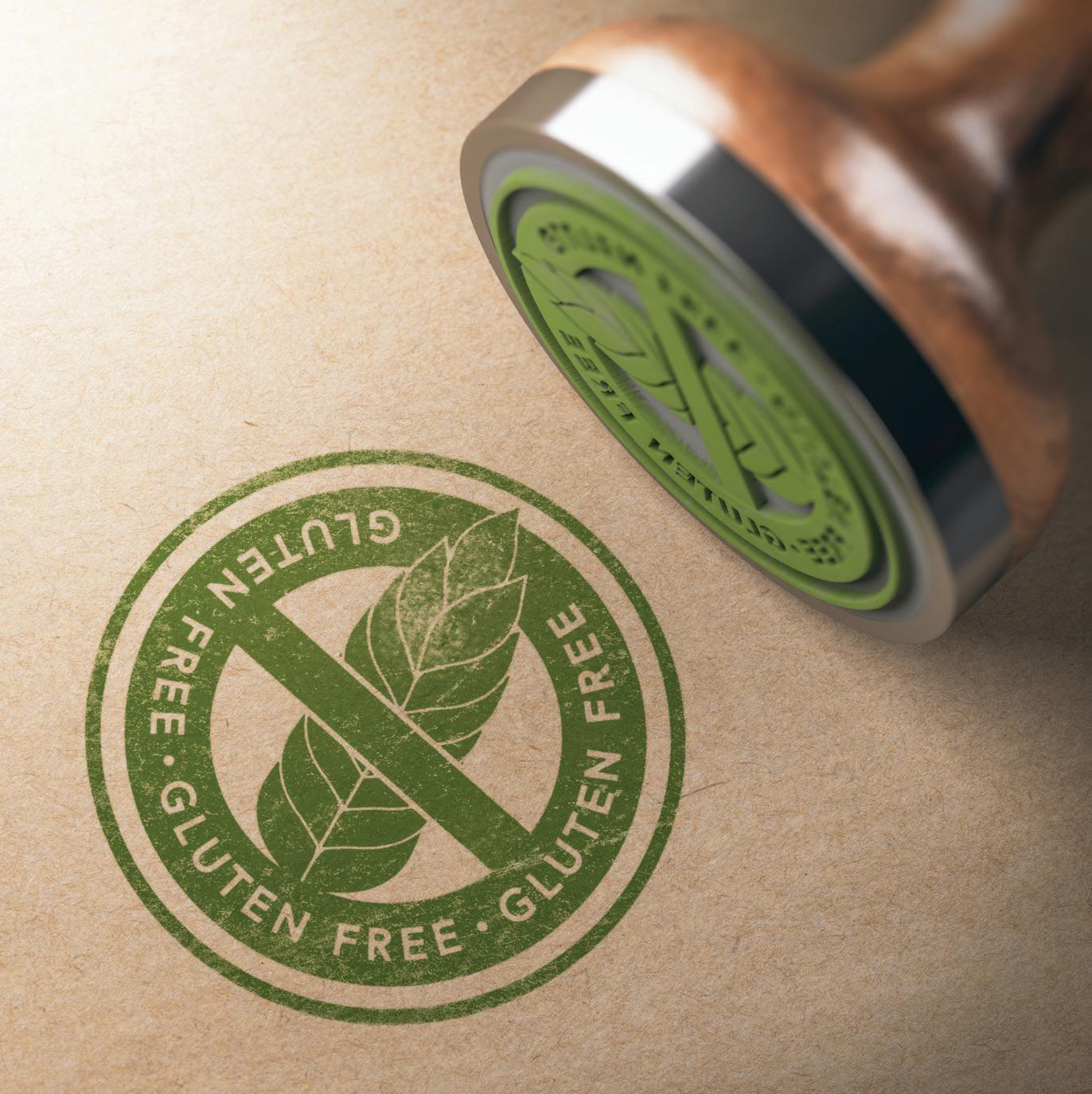




New Zealand’s Homegrown Juice Company has quite the presence in our supermarket fridges and shelves thanks to a wide range of juices, fruit and vege blends, smoothies and shots.
Disappearing off the shelves pretty smartly are products like Lemon Honey Ginger, Immunity, Pro Bio Mango Smoothies, Berry Anti Ox and the 100% Pure OJ - all are popular staples of Kiwi households and all can proudly proclaim “great taste – great health”.
Homegrown Juice Company’s National Sales Manager Russell Holt said the company’s goal is to produce the best tasting, healthiest juices and smoothies possible for New Zealanders. In fulfilling that aim, Homegrown uses a “cold pasteurisation” process that sets them apart and has added a new benchmark in the NZ juice market.
While almost all other juices in NZ are pasteurised using heat, this process is rejected by the Homegrown team who believe it compromises vitamins, minerals and flavour. Instead, they favour a cold pasteurisation process, for which they have earned the trust of many a NZ consumer.
“We use High Pressure Processing (HPP) Cold Pasteurisation to maintain the natural taste and nutritional goodness of our fruit. RAW juice is put under extreme pressure to deactivate naturally occurring bacteria, yeast and moulds with miniscule changes to the vitamins, minerals and flavour,” said Holt Russell.
“In short, Homegrown juice remains committed to producing the freshest tasting, cold-pressed, HPP-protected juice that tastes as close to nature as possible.”
Sales would indicate that taste is pretty good. Homegrown Juice can boast market leadership as the company holds 60 per cent of New Zealand’s chilled juice market. The remaining 40 per cent is made up of the heat-treated (thermal processed) juices mentioned above, including some imported from Australia.
The company is called Homegrown for a reason. In fulfilling its “best tasting, healthiest juices and smoothies possible” motto, The Homegrown Juice Company grows its own oranges and, wherever possible, sources NZ ingredients to control quality and deliver the best, every time.
“Most orange juices in NZ are made from imported orange juice – some of which is even bottled overseas. This goes against our philosophy. We believe you can’t make great-tasting, nutritious juice when it has been shipped halfway around the world.
“So, we did something about it and increased our plantings to the point where we now have the largest plantings of orange orchards in NZ,” he said.
It helps enable the company to declare that its RAW Cold Pasteurised Fruit and Veggie Juices are made from predominantly

local and only some imported ingredients. The orange orchards are located in Gisborne and Hawke's Bay. In fact, it all started in Hawke’s Bay, when the Brownlie family first planted their orange orchard in that sunny fruit bowl of NZ back in 1969. Steve Brownlie continues this legacy under the Homegrown Brand.
It’s not just about oranges, however. The likes of grapefruit, lime, apple, kale and raw fruit smoothies and vege juices are all in the mix, along with treasures like turmeric, with combinations available in 400ml, 1 litre and 1475ml bottles (plus shot sizes of some).

Holt added that while there’s already a wide product range to please, the Homegrown NPD team is always looking for new and innovative healthy products, in line with global trends, to develop for their growing local customer base.
NPD and distribution are both ticking boxes. The company is proud of its robust distribution network that ensures direct delivery of its chilled juices and smoothies. And the full product range reaches retail and foodservice customers on time all year round. How good is all that!
Homegrown Juice Company is a member
of the New Zealand Beverage Council (NZBC). The NZBC is the industry association for New Zealand's nonalcoholic beverage sector. Members are the brand owners, manufacturers, bottlers and suppliers of New Zealand’s juice, carbonated drinks, flavoured-dairy and bottled water brands. Membership is made up of a wide range of companies operating in New Zealand, ranging from large multinational brands, local New Zealand producers, to those companies that provide a wide range of goods and services to the industry. www. nzbeveragecouncil.org.nz





Nourishing, home-made soups are a popular choice as the seasons shift, and Kiwi shoppers are on the lookout for top-quality produce to sauté, simmer, and blend into the perfect bowl.

Highlighting key soup ingredients in store like potatoes, onions, kūmara, carrots, parsnip, broccoli and cauliflower, will not only inspire shoppers to get creative with their soup combinations but also help boost our vegetable intake.
Consider displaying soup vegetables together in your produce department along with eye-catching imagery and recipe suggestions. The 5+ A Day website (www.5aday.co.nz/recipes) currently features 30 great soup recipes which retailers can leverage to help influence purchasing decisions.
People often stick with their tried and true soup favourites, but there are endless flavour combinations to explore – think roasted cauliflower, broccoli and kale soup; pear, kūmara and ginger soup; or roasted parsnip and garlic soup.
Organise a creative ‘soup’ display and surround your hero produce with complementary ingredients such as fresh herbs, dried lentils, coconut milk, spices (cumin, nutmeg, turmeric and chilli flakes are popular), ramen noodles and vegetable
stock. An attractive display where fresh produce is frequently topped up and rotated, will help drive sales and raise consumer awareness about different soup ingredients they could combine.
Many soups require minimal effort. Just throw the ingredients into a slow cooker for a few hours, or simmer gently in a pot for 20 minutes and blend.
Silky smooth soups are a great way to serve up a host of nutritional benefits. People often turn to citrus fruit to boost their immunity, but brassicas like broccoli and cauliflower are in fact a very good source of vitamin C. Eating one cup of broccoli or cauliflower (which is easy to achieve in a soup) will provide more than your recommended daily intake.
Meanwhile, root vegetables like potatoes, kūmara, carrots and parsnips all provide complex carbohydrates to boost energy levels and are a source of dietary fibre. This helps support healthy digestion and bowel movements, and can help keep you feeling fuller for longer.
The 5+ A Day Charitable Trust recommends adults eat at least five servings
Root vegetables like potatoes, kumara, carrots and parsnips all provide complex carbohydrates to boost energy levels and are a source of dietary fibre. This helps support healthy digestion and bowel movements, and can help keep you feeling fuller for longer.
of vegetables and two servings of fruit every day to stay as healthy as possible.
Soups are an ideal way to achieve this –colourful ingredients can easily be combined to deliver a wide range of antioxidants, vitamins and minerals, and create a delicious and hearty meal.
The 5+ A Day website (www.5aday.co.nz) is also a great resource to check what’s in season and find recipes and nutrition information that consumers might find useful.

If you want to enter the New Zealand FMCG market and don’t know where to start. Start here.
Storelink provides winning insights led strategy, national scale, speed to market, NPD acceleration, sales velocity and profit enhancement. Our services range from importing, customer services, order management, key account management, field sales and merchandising. Aside from our incredible team, what makes us different?
• Ability to contribute to, and execute strategy.
• Industry connections and cross category experience.
• A culture of getting things done.
Our partner relationships are constructive, collaborative and transparent. Plug straight into our established importing and logistics networks across both Islands to reduce cost.
Distribution expertise designed for the nuances of NZ's retail environment. Flexible import models that suit your brand - We can shift your brands your way.
Our Storelink360 program informed by StorelinkIQ market insights is designed to build, execute activity and provide fast feedback in real time. We have the national infrastructure, speed, and smarts needed to succeed. Connect with us to find out more.

Engine
New
Storelink is one of New Zealand’s largest full-service retail execution specialists. For over 35 years, we’ve helped ambitious FMCG brands get seen, sold, and scaled — everywhere that matters.
From sales and merchandising to data insights, logistics, and strategy, we move fast, act smart, and get results.







New Zealand snack-sized apple brand, Rockit, has expanded its offerings with its miniature apples and launched a new Small Family Pack into global markets to meet strong consumer demand for everyday sharing occasions.

This formed part of its occasionbased marketing strategy, which included new product categories, such as a Snack Pack for impulse purchases, a Daily Pack for high frequency consumption, Family Packs for sharing moments and Gift Packs for festivals and always-on gifting moments.
Julian Smith, Rockit General Manager Global Marketing, said that the company has always looked for new ways to innovate and satisfy its consumers’ latest needs.
“Creating a pack that locks in the goodness on a big scale took innovation and

ingenuity. During the development, our research team spoke to 12,000 household shoppers to find out what they value most,” said Smith.
Off the back of this, Rockit responded with the Large Family Pack, a unique container designed to deliver its premium quality apples in a quantity that met the needs of busy family consumption occasions, such as weekend sharing moments.
Consumer feedback following the launch of the Large Family Pack indicated that an additional smaller pack would meet the requirements of smaller households or those with limited storage space. The result, aka the Small Family Pack, has proved to be a hit.
The Small Family Pack is a practical bucket-like pack with a resealable lid to lock in freshness and a strong handle for easy transport. The resealable lid keeps each Rockit apple in peak, ready-toeat condition, providing a controlled environment that extends shelf life and minimises food waste. The carry handle means that the Small Family Pack can be enjoyed and shared by consumers during all of life’s little adventures, anytime, anywhere.
Focusing on sharing special moments, Rockit tailored its Small Family Pack campaign with localised activity that resonated with each global audience. This included ‘Buy and Win’ promotions in Singapore and Malaysia, where consumers
can go in the draw to win theme park passes or movie tickets by scanning the QR code on the pack, and a colouring book gift with purchase featuring our cheeky brand character, Rocki, in Vietnam, Indonesia and the Middle East.
Smith mentioned that the Small Family Pack has arrived just in time for the peak Back to School season in the Middle East, where it is the hero product in Rockit’s omnichannel campaign. He added that globally, influencers and KOLs have become an essential part of the digital marketing mix.
“We leverage them both to build awareness and brand love with new audiences, and to drive tangible actions such as traffic to events or competition entries. They help humanise the Rockit brand while creating authentic, engaging content that resonates with customers.”
Additionally, QR codes have become an effective touchpoint for helping bring customers into the Rockit digital ecosystem while providing them with added value. The QR code webpages facilitate communication and serve as a strong platform for integrating promotions.
Over the next two years, Rockit will continue to share its brand story and build out global content targeting consumers looking for healthy snacking choices for their lifestyle occasions.




Yes, I know what you are thinking. New Zealanders will always be able to buy fresh, locally grown vegetables – they just will because they have always been able to…

Antony Heywood Chief Executive Vegetables NZ
But what if increasing production costs and regulation meant it was no longer viable to grow vegetables in key growing areas like Pukekohe, the Horowhenua and Canterbury? So as a result, vegetable growers went out of business and New Zealand had to rely on imports of frozen or canned vegetables.
Or, like butter and cheese, fresh, New Zealand grown vegetables became so expensive that few New Zealanders can afford them. This scenario would have a detrimental effect on people’s health and wellbeing, which would put an even bigger drain on our already stretched beyond capacity health system.
But the answer is simple. In this Government’s reform of resource management legislation, vegetable growing must become a ‘permitted activity’, to use the jargon. This would involve a national approach to vegetable production – instead of a region by region one – as part of a national food strategy, which would ensure New Zealand had food security and New Zealanders continued to have access to healthy food at reasonable prices.
Falling vegetable consumption
As if the challenges of growing were not
enough, New Zealand – like Australia and the rest of the western world – is experiencing falling vegetable consumption, thanks to a range of factors, including the idea that vegetables are expensive.
In season, vegetables are always good value, particularly from a health and nutrition point of view. Vegetables are the only food that you just can’t eat enough of.
Vegetables NZ is part of the drive for New Zealanders to Add One More Vegetable to every meal. We are also closely watching what is underway in Australia.
Over the ditch, growers, government, wholesalers and retailers have all got behind a behaviour change initiative that research shows will result in Australians adding one more serve of vegetables (75g) to their day by 2030. The benefits of this small increase are enormous:
• A$4.7B in total economic benefits
• A$1.4B in healthcare savings
• A$3.3B boost to the vegetable supply chain.
Why can’t New Zealand do something like this, given all the benefits? Good question and one that Vegetables NZ is asking, as it seeks further support for Add One More Vegetable. Watch this space!

New Zealanders enjoy one of the highest per capita avocado consumption rates in the world.
Yet for many shoppers, selecting the perfect avocado can still feel like a gamble. Too firm today, too soft tomorrow, add in the confusion over storage and ripening, and it’s easy to see why some consumers hesitate at the display.
This season, NZ Avocado is investing more than ever in retail support and consumer education to change that. Our goal is simple: help shoppers feel confident choosing, storing, and enjoying avocados, ultimately driving repeat purchases and reducing waste.
International research has shown that clear, well-organised avocado displays significantly improve the shopper experience, leading to increased sales and reduced fruit damage. Trials are now under way to apply these insights in the New Zealand market, working with produce teams to test merchandising approaches that make it easier for customers to find the fruit they want.
This includes trialling displays sorted by ripeness, using clear signage to help shoppers understand which avocados are ready now and which will ripen later. Early results suggest that when shoppers can quickly and confidently choose, they’re more likely to purchase multiple avocados at once and are less likely to squeeze and damage fruit unnecessarily.
the Display
Of course, the journey doesn’t end in-store. Many consumers still aren’t sure how to ripen avocados at home, or how to store them to extend shelf life. This year’s campaign focuses on simple, practical tips:
• Select by colour, not by feel—green for later in the week, purple-black for now.

• Store on the bench to ripen, then move ripe avocados to the fridge to keep them fresh longer.
• Plan ahead by buying a mix of ripeness stages so you always have one ready to eat.
We’re also aiming to inspire increased consumption by showcasing the incredible versatility of avocados. From quick breakfast ideas to vibrant salads and flavourful dips, our recipes are designed to help shoppers see avocados as an everyday essential, not just an occasional treat.
Digital platforms, in-store tastings, and partnerships with key retailers are all part of this integrated approach. Retail staff will also be equipped with fridge magnets and recipe cards to hand out during sampling events—small, helpful takeaways that keep shoppers engaged.
If you’d like help improving your avocado displays, please get in touch with NZ Avocado. We have a range of ripeness guides, in-store collateral, and educational materials available to make it easy for your team to implement best-practice merchandising and engage shoppers with confidence.
While this campaign is focused on the New Zealand domestic market, it’s part of a bigger story. New Zealand avocados are increasingly recognised overseas for their premium quality and sustainable growing practices. By improving the shopper experience at home, we’re also building a stronger foundation for our origin story globally.
Ultimately, our aim is to make avocados an easy, enjoyable choice for every shopper. When buying, storing, and eating avocados feels simple, everyone benefits—the retailer, the grower, and the consumer.








New Zealand businesses looking at overseas expansion have a lot to be excited about. However, there are many important factors to explore before making the move. These include tariffs and the broader tax implications that come from operating in overseas territories.
Below we explore some of the key considerations for business owners and leaders when building their business abroad.
Staying on top of tariffs
While New Zealand often feels relatively isolated, geopolitical issues can still have a significant impact on local businesses. This is highlighted in the May 2025 BDO Business Wellbeing Index, which shows that political factors are among the business performance issues that leaders feel least positive about.
This sentiment is likely exacerbated by tariff announcements from US President Donald Trump, which are having a major impact on the global trade landscape. As the US is New Zealand’s secondlargest export market, these changes carry significant implications – but there are some actions business leaders can take to help mitigate them.
“There are immediate and long-term considerations when responding to these tariffs. Businesses need to look at their supply chains and whether there’s an opportunity to negotiate contracts with suppliers and customers. They should also perform detailed analysis and forecasts to understand how they may be impacted,” said Divya Pahwa, BDO National Retail Sector Leader.
Understanding global tax implications
Tax laws vary significantly around the world. When exploring new markets for expansion, it’s critical to consider the financial and legal obligations that come with operating in these territories.
“In New Zealand it’s relatively easy to set
up a company, but in overseas jurisdictions, it’s not as easy and it can cost a lot more money to get established properly,” said Iain Craig, BDO Tax Partner.
“It’s important to get it right to begin with, because there will be implications if you don’t – including things like capital gains tax and stamp duty on transferring shares. Planning is essential.”
Additionally, an understanding of local and international tax rules is key. This includes New Zealand’s imputation credit and transfer pricing regimes.
Tips for expanding into international markets:
• Explore exemptions and concessions available when exporting overseas, such as duty drawbacks.
• Consider alternative markets less affected by tariffs. This could include Asian and European countries that New Zealand has free trade arrangements with.
• Set up your business to be tax-efficient and compliant from the start to save time and money in the long run.
If you’re considering growing your business overseas, it’s important to get the right support. At BDO, our global network of experts means we can liaise with advisers internationally to assist you in your journey. Our advisers can help to guide you on your international business endeavours and transition smoothly into offshore markets.
Learn more about how we can support your international business needs here.
For guidance on navigating local and international tax legislation, optimising your structure and meeting your compliance obligations, view our tax services page here.


In the heart of Central Otago, New Zealand Cherry Corp (NZCC) is quietly leading a revolution in cherry marketing, one that’s turning a local grower into a global brand.
With a bold shift from traditional supply-push models to consumer-led demand creation, NZCC is setting a new standard for how premium fruit is grown, packed, and sold.
The company’s journey began with the vision of Reece van der Velden, whose leadership laid the foundation for NZCC’s transformation. As General Manager, van der Velden pioneered modern growing techniques and packaging innovations that helped elevate NZCC’s cherries to international acclaim.
His strategic focus on vertical integration, combining orchard management, hightech grading, and state-of-the-art packing, ensured that only the best fruit reached global markets.
“Our goal was always more than just growing amazing cherries,” van der Velden noted in NZCC’s early plans.
“We wanted to grow a world-class
business that could take New Zealand cherries to the world, while supporting our local community and growers”.
Under van der Velden’s guidance, NZCC became known for its meticulous quality control and worldclass cherries. The company’s high-tech packing plant minimised fruit handling, preserving freshness and reducing waste.
NZCC also led the development of the Cherry Rescue Project, a sustainability initiative that repurposed non-supermarket grade fruit into value-added products like cherry concentrate and puree, turning what was once waste and fertiliser into a wastefree product line, rescuing every cherry that is harvested.
But it was the December 2024 appointment of Mark Pay, former GM Global Sales at Rockit Global, that signalled NZCC’s next chapter. Pay brought with him a track record of transforming Rockit™ apples into a global phenomenon, and he’s now applying that same disruptive thinking to cherries.
“Reece built the engine,” said Pay.
“Now we’re tuning it for global acceleration. Our strategy is about creating consumer demand that pulls product through the supply chain, rather than pushing supply into flooded markets.”
Pay’s demand-first philosophy is already reshaping NZCC’s approach. Rather than competing in traditional channels, the company is investing in consumer marketing and brand-building to grow sales from the ground up. A new sales model, set to be unveiled in November ahead of the 2025/26 cherry season, is expected to address long-standing profitability challenges in the cherry industry.
The initiative is designed to offer consumers a unique cherry experience that hasn’t been done before, improving sales timing and enhancing profitability. By bypassing traditional wholesale channels, NZCC aims to build stronger relationships with consumers and offer a more personalised experience.
Digital marketing will play a key role in becoming a household name in key export markets, with a strong focus on organic engagement through social media and influencer partnerships.
NZCC’s transformation is more than just a business story; it’s a blueprint for how local innovation can drive global success. By combining van der Velden’s operational excellence with Pay’s market-building expertise, NZCC is positioning itself as the cherry brand to watch.
As the 2025/26 season approaches, NZCC isn’t just preparing to ship cherries; it’s preparing to reshape the global cherry market.
From a small orchard in Cromwell to premium retailers across Asia, the Middle East, and North America, NZCC is proving that New Zealand ingenuity can thrive on the world stage.







While New Zealand’s food and beverage (F&B) sector has long punched above its weight across Asia Pacific export markets, transitioning from domestic success into developing sustainable offshore export growth markets requires more than a good product and clean-green origin story.

Cameron Gordon Head of Client Growth Incite
Drawing on Incite’s fourteen years of opening and growing Asia Pacific export markets for global food and beverage brands, here’s a practical guide for New Zealand F&B exporters navigating expansion in this region.
Common Challenges: Pricing, Patience & Preparedness
The most frequently encountered hurdle? Launching new export markets takes time, costs money and has a lagging ROI. From appointing a distributor to confirming retail listings and seeing a first PO, the lead time often spans 6 to 9 months or more, depending on the market.
Most export markets across Southeast and North Asia are pay to play markets, meaning significant investment is required
to secure retail listings in the local equivalents of Woolworths, Pak’n Save and New World prior to obtaining any sales. Brands that underestimate this timeline or fail to factor in the required investment can often hurry the process and end up with sub-optimal distribution partnerships and/ or strategies in place.
Premium pricing is another issue.
New Zealand products frequently enter global markets with export pricing above international competitors, placing pressure on retailers and distributors to make the pricing work, especially in price-sensitive Southeast Asian markets. Achieving a viable price position within the category is critical to achieving longer term survival and all parties (brands, distributors and retailers) need to make a viable margin.

Global Demand & High-Momentum Categories
Incite’s 2024 Asia Pacific Distributor Survey confirmed rising demand for health and functional focused F&B products across the region. We continue to see strong interest from distributors and retailers in:
• Non-alcoholic functional beverages
• Natural dairy products
• Plant-based products
• Low-sugar, clean-label products
• Snacking and functional snacking
• Pantry staples
• Frozen food
Distributors are also showing growing attention to everyday value products given the ever increasing cost of living.
Power of Partnership
The right distributor relationship can make or break your offshore success. Distributors do far more than place orders and distribute products —they help register products, navigate local regulations, market and promote the products to drive sales and manage relationships with major retail channels.
Capable distributors expect clear support in return: a viable margin, pricing transparency and listing fee and marketing support.
We recommend having clear and open conversations at an early stage to align on key aspects of the partnership and to achieve agreement on the business plan for the first 1-3 years of business.
Regulatory Readiness:
Don’t Assume Simplicity
While the ASEAN region has been attempting to harmonise regulations in each country for many years, regulations remain anything but uniform. It’s critical for exporters to:
• Understand the documentation and labelling requirements for each market.
• Anticipate local FDA registration lead times (often 3–12 months) in markets including Indonesia, Thailand and the Philippines.

Capable importers and distributors can support brands navigate local regulations, minimising delays and completing processes correctly the first time.
Before approaching Distributors in target export markets, we recommend brands seek to understand:
• The on-shelf competition, the margin value chain and target price positioning.
• Viable distribution channels for their products and the investment required to trade in those channels.
• The expectations that distributors have of the brands they work with, especially with investing to support sales.
Based on the day to day work we do across 12 Asia Pacific markets, it is the emerging markets that are currently showing the most potential for growth.
While mature markets including Singapore, Hong Kong, Japan and South Korea are (and remain) very important export markets for New Zealand F&B products, retailers and distributors are telling us that growth is currently in decline.
Importers and distributors we are talking to in Thailand, the Philippines, Vietnam and Indonesia on the other hand are reporting growth in their market.
The right distributor relationship can make or break your offshore success. Distributors do far more than place orders and distribute products —they help register products, navigate local regulations, market and promote the products to drive sales and manage relationships with major retail channels.




Kiwis might be surprised to see the level of wealth in Korea and the growing spending on premium food and beverage products. With a population of 52 million and GDP per capita (PPP) of USD 65,000, there is an opportunity to continue to expand New Zealand’s strong brand awareness beyond dairy, wine, horticulture and deer velvet.
Trade Commissioner, South Korea
TKorea is now a technology powerhouse, home to fifteen Fortune 500 companies, including Samsung, Hyundai, Kia and LG. Korea is Asia’s fourth-largest economy, larger than Australia, and home to over 1.3 million millionaires. Korean culture is booming with the popularity of K-pop, K-food, K-drama and K-beauty! Korea is becoming a trend setter, influencing young, wealthy consumers across Asia and the world. New Zealand has an opportunity to be part of this story.

opportunity for New Zealand to capture premium consumer’s mind and wallet.
For New Zealand, Korea was the fifthlargest export destination and trading partner in 2024. The Korea-New Zealand Free Trade Agreement was implemented in 2015, and tariffs continue to reduce as well as additional access negotiated. The portfolio of New Zealand businesses selling to Korea has grown since COVID-19. Koreans like doing business with Kiwis –many have visited New Zealand as a student or tourist, and they know we helped them during the Korean War.
New Zealand wine is very popular in Korea with exports growing 71 percent in 2024 to reach NZD 33 million. The Korean consumers are typically female, in their 20’s and 30’s, health conscious, and enjoy the light fruity flavours of Sauvignon Blanc with Asian cuisine. You can now buy New Zealand wine at most convenience stores across Seoul!
this growing health trend and supply new innovative ingredients.
Korean consumers have high disposable income, are health-conscious and value food safety and transparency. Korea does not produce enough food and beverage products it needs so they import from overseas. Metropolitan Seoul has around 26 million consumers and is the core target for New Zealand. Korea consumers have traditionally preferred US imports however, as global structural changes occur, there is a clear
Shott Beverage is an example of kiwi company winning in Korea. Shott entered Korea in 2014 due to the wealth of consumers and high coffee consumption. Shott is successful as they have a team based in Seoul who understand Korean consumer needs and trends, develop products and marketing quickly aligned to consumer needs, and can supply Korean channel partners directly. This approach can be replicated in other businesses.
Korea is the largest consumer of New Zealand deer velvet. Traditional Korean Medicine uses deer velvet as a health supplement to strengthen the body and boost immunity. The health properties of deer velvet were recently recognised by Korea Ministry of Food and Drug Safety as functional food. New Zealand velvet is well recognised in Korea. New Zealand can ride
Based on Korean consumer needs, there are growth opportunities across fresh produce, packaged foods, functional foods, consumer health, beverages, dairy and petfood. Providing health targeting Korea’s ageing population is low hanging fruit. There is an opportunity to dial up storytelling around grassfed, sustainability and unique New Zealand ingredients. There are different sales channels in Korea each suitable for different products and require unique strategies. Ecommerce penetration in Korean is among the highest in the world with over 30 percent of all retail transactions. Coupang has 40 percent market share with over 30 Kiwi companies selling through this. For premium offline experiences, Shinsegae has 13 high end department stores across Korea. Shinsegae is often regarded as an important platform to establish premium brand positioning. Korean influencers and celebrities are critical to building a brand in Korea and can be found on Instagram and YouTube.
Korea offers a wealthy health-conscious consumer that values the characteristics New Zealand food and beverage producers are known for. Korea consumers can afford to buy premium. The opportunity is now, and Kiwi exporters should investigate if its right for them.




The Korean skincare market has been known to be famously saturated, but Vicky Cullinane, co-founder of Lemon & Beaker, saw that as an opportunity rather than a barrier.
“Asaturated market is an educated market. Korean consumers know what excellent skincare looks and feels like and are willing to embrace something new if it’s genuinely exceptional,” said Cullinane.
It was also a natural choice since cofounder, Hannah Williamson, has strong roots in Korea through her personal background and her family’s business, giving the duo invaluable local insight.
Korea offered the ultimate testing ground to prove that clean, science-backed products could stand out, and Lemon & Beaker aim to be at the forefront of clean skincare, showcasing New Zealand’s native ingredients globally.
“Our success in Korea is a powerful validation that we’re on the right path.”
From the start, the co-founders listened closely to their partners on the ground and developed formulations tailored to Korean consumers’ preferences, combining New Zealand ingredients selected for their benefits to evoke the purity and untouched nature of New Zealand.
Korea’s retail environment is unique, with TV home shopping playing a huge role in building credibility. Lemon & Beaker invested in this channel and partnered with a popular Korean host who even visited New Zealand to film the brand story, which built authenticity with consumers.
Product-wise, Lemon & Beaker reformulated with a focus on super-

hydrating ingredients, sensorial textures and softened scent to suit local preferences.
Packaging shifted to a more clinical, results-focused look, prioritising clarity and efficacy claims over elaborate design as Koreans value results backed by data, and bundling offers were key for local shopping habits.
Lemon & Beaker sold out across six live broadcasts on three of Korea’s largest TV home shopping channels, reaching millions of viewers. Cullinane said those results gave the brand not just sales, but credibility and momentum.
Driven by this demand, Lemon & Beaker is now on its way to expanding into Hyundai department stores, Duty Free, and high-end spas, showing just how well the fusion of New Zealand nature and Korean science resonates.
However, one challenge the brand faced was with manuka oil, as local feedback showed the scent was considered too strong and even unpleasant.
“We knew it had a distinctive scent but didn’t think it was so different from tea tree oil, which is very on trend in Korea, that it would cause issues.”
This experience reinforced how crucial it

is to be on the ground, listening directly to consumers.
“Working closely with local partners helped us adapt quickly, from reformulating products to adjusting how we communicate our brand story.”
At the same time, Cullinane said that the market results speak for themselves.
“When you deliver on your promise and truly stand out, Korean consumers are eager for more. The scale of that opportunity is massive, and that’s what makes the market so exciting.”
Cullinane added that the brand has seen strong results not only in Korea but also in the US, with the next focus markets being India, the UK, China, and Japan.
Having learned that success abroad depends on strong local partnerships, the brand has been working with two partners in Japan to support an omnichannel approach in this highly mature and demanding market.
Meanwhile, in India, there’s been a strong enthusiasm for botanical formulations and K-beauty influences, but also rising expectations around performance. Indian consumers want skincare that’s natural and clean, but also science-driven.
“At the heart of it all, we’re on a shared mission: to create the best products possible and proudly showcase the power of New Zealand’s natural resources to the world.”
Both Cullinane and Williamson believe that having people around you who challenge your thinking and offer fresh perspectives is essential to growth.
“I know success in business always comes down to the people you surround yourself with and the team you build. For me, it starts with my incredible business partner, Hannah Williamson. She's a genius when it comes to formulations and an absolute joy to work with.” n







Thailand has become a promising market for New Zealand food and beverage exporters. Thailand’s middle class comprises approximately 20 percent of the population, who are increasingly open to trying imported products. They are typically well-travelled, value premium quality and are willing to spend on new and innovative offerings.
According to Jane (Chatjen) Tantakhom, Country Manager Thailand, health and wellness were key purchasing drivers. Even amid economic uncertainty, Thai retailers reported that this segment has remained strong and continued to grow. Products that promote well-being have proven resilient, as consumers with disposable income prioritise spending on perceived value while cutting back on non-essentials.
New Zealand fresh produce has also been recognised in Thailand for its high-quality, food safety standards, and exceptional taste. Zespri kiwifruit has been widely acknowledged for its high Vitamin C content.
Similarly, New Zealand avocados have been praised for their superior taste and health benefits, often referred to as a “superfood”, and have been commonly featured in cafés and restaurants that offer healthy menu items. New Zealand apples are also popular among Thai consumers for their flavour and texture, with the added advantage of offering the broadest range of varieties.
Tantakhom added that there was also a growing trend in packaged food categories, such as cereals, snacks, condiments, and
chocolate, which were previously slower to take off due to the need for consumer education. This shift reflected a more informed and open-minded Thai consumer base, now more willing to incorporate Western packaged foods into their daily diets.
Introducing New Zealand’s new food products and building brand awareness has required ongoing support and consistency over time among health-conscious Thai consumers. Since 2021, New Zealand’s Made with Care campaign has become one of the most significant annual promotional events for New Zealand food and beverage products in Thailand.
Led by New Zealand Trade and Enterprise (NZTE), the campaign fostered collaboration between New Zealand exporters and Thai retailers, promoting the essence of New Zealand food and beverage –premium, ethical, tasty, safe, and nutritious. The fairs have been pinned on the trade promotion calendars of five leading retailers in Thailand, including Makro, Lotus, Tops, Big C and Gourmet Market.




Continued from pg. 59
Tantakhom stated that New Zealand suppliers needed to understand the differences between modern retail and wholesale channels to effectively reach their target consumers.
Modern retail targets end-consumers, but each retailer serves a distinct segment. Hypermarkets like Makro, Lotus and Big C are ideal for accessing mass consumers, where price sensitivity is key. These outlets are particularly effective for New Zealand fresh produce and dairy, which can compete well on value. Shoppers prioritise value for money and seek the right pack sizes at competitive prices.
Premium supermarkets, such as Tops and Gourmet Market, cater to middleand upper-middle-class consumers and expatriates, who are suited for premium-
positioned packaged foods from New Zealand. Shoppers are drawn to superior quality, exclusive benefits, and freshness. Being the “first of the season,” “air-flown,” or a “new-to-market” product are key selling points in this segment.
Meanwhile, wholesale channels, such as Talaad Thai, focus on B2B customers, particularly for fresh produce, and help reach food service providers and smaller retailers.
In many cases, such as with New Zealand fresh produce, Tantakhom said that a dual-channel strategy may be appropriate as each channel requires tailored marketing strategies and support to ensure success.
While Thai consumers consistently expect high-quality and safe products from New Zealand, promotions, brand storytelling, and in-store experience play a significant role - elements that are central to the Made with Care campaign.
Tantakhom mentioned that a common misconception New Zealand exporters made was assuming Thai consumers were similar to those in China, Vietnam, Malaysia, or Singapore.
“What works in one market often does not translate directly to Thailand without thoughtful localisation and adaptation. Thai consumers have unique preferences and expectations that must be respected and understood.”
She added that there are growth opportunities in cities outside of Bangkok, as the latest Made with Care campaign was launched in Pattaya, which was the secondtop city for imported product sales.
Pattaya’s unique demographic comprises a mix of long-term expats, tourists, and local Thai residents, and store traffic there has even surpassed that of some outlets in Bangkok. Other high-potential second-


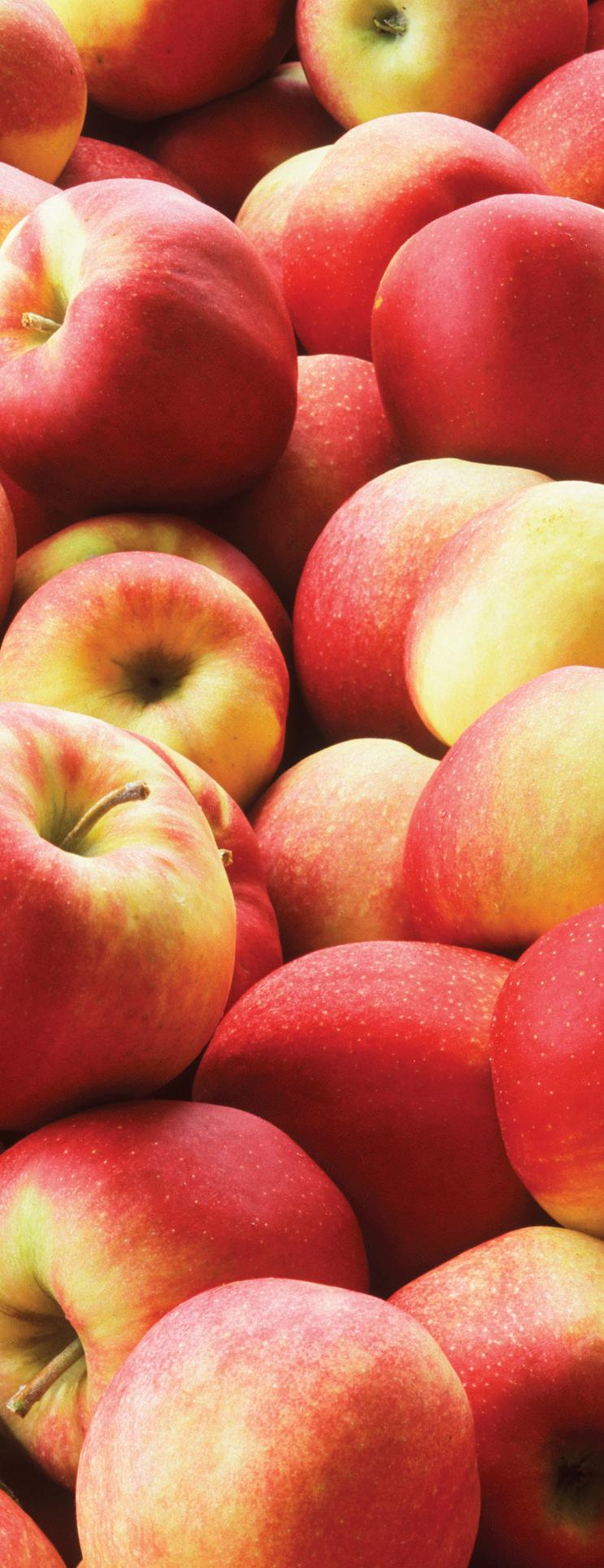
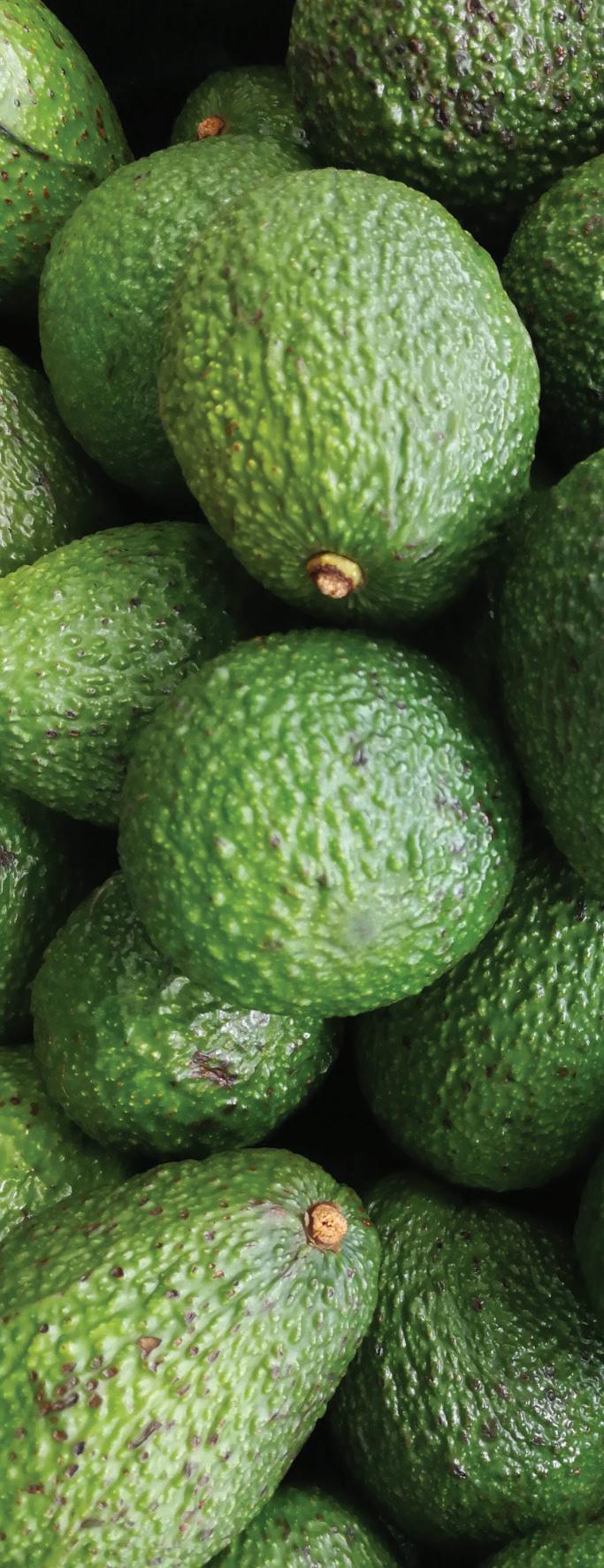

tier cities include Phuket, Chiang Mai and Udon Thani.
Western dietary habits were only recently introduced to Thailand in the past 30 years, meaning that foods like apples, kiwifruit, avocados, persimmons, tea, coffee, dairy, and grass-fed beef are still relatively new to many Thai consumers. Understanding the cultural context and the evolving role of these products in Thai lifestyles is critical.
“These cities have demonstrated strong demand for imported products and will be integral to our expansion strategy. Working with retail partners to raise nationwide awareness of New Zealand products will be key.”
For New Zealand companies considering entering Thailand for the first time, Tantakhom advised that, if possible, visiting Thailand in person would be beneficial to gain firsthand experience and insights into the retail and wholesale markets.
“Western dietary habits were only recently introduced to Thailand in the past 30 years, meaning that foods like apples, kiwifruit, avocados, persimmons, tea, coffee, dairy, and grass-fed beef are still relatively new to many Thai consumers. Understanding the cultural context and the evolving role of these products in Thai lifestyles is critical.”
Brand has become increasingly crucial, as Thai consumers base their purchase decisions more on trust in specific brands, in addition to the country of origin.
With many countries eyeing Thailand’s large and growing middle class, competition has intensified. Brands that build awareness and credibility will outperform those selling undifferentiated commodities. Strong branding will be critical for New Zealand to maintain its competitive edge and grow sustainably in the Thai market.
NZTE is the global team in your corner – so that you don’t have to go through it alone. Reach out to NZTE to receive support in getting your business exportready and accelerating your international growth. Our team of experts can help New Zealand exporters make informed decisions and connect with the right partners and investors in the market.
Additionally, NZTE can connect local businesses and investors with high-value growth opportunities in or from New Zealand. Internationally, NZTE can equip businesses with local market knowledge and connections through its in-market teams or network of private sector advisors.
If you're a Māori business, NZTE has a team with the cultural and commercial competencies to support you.
myNZTE, NZTE’s self-service platform, has free resources for exporters, including the latest export information and templates for addressing common export challenges, such as overcoming market entry barriers and navigating cultural differences. Check out our market guide to understand what you need to know before exporting to Thailand. n





Japan stood out early on as a key market for Me Today because of its deep appreciation for beauty, wellness, and quality.
It’s a region where consumers are highly educated, value efficacy and ingredient transparency, and take a holistic approach to self-care, values that align closely with Me Today’s philosophy.
Brand manager Tia Grant said that there was an opportunity to bring something fresh to the space: a modern, design-led wellness brand from New Zealand that spoke to the inside-out beauty trend in a new and compelling way.
She added that Japan’s global influence in both beauty and lifestyle also made it an ideal launchpad for building wider brand awareness across Asia.
“We try to complement the market. Me Today offers something fresh: a modern wellness brand from New Zealand that blends science-backed supplements with natural skincare and Manuka honey,” said Grant.
“Our design, tone of voice and holistic offering help us stand out. And thanks to our distributor’s local expertise, we’ve been able to tailor our approach to really speak to the Japanese consumer while staying true to who we are.”
Grant mentioned that Japan doesn’t easily just accept global brands, which has been the biggest learning for MeToday. She said that success here meant slowing down, listening more, and adapting.
Japanese consumers tend to be more ritual-based and detail-oriented, placing high value on texture, fragrance, and presentation, which is quite different from the more pragmatic New Zealand shopper.

From product range to packaging format to education style, it’s all about fine-tuning every touchpoint to the Japanese customer while staying true to the brand’s DNA.
Another lesson was that partnerships on the ground are crucial, especially with retail and local experts who deeply understand the consumer journey.
Japanese consumers not only love to test and explore before they commit, but also like convenience. That insight directly shaped MeToday’s launch of exclusive product formats, such as mini Superhoney pots and supplement trial packs, tailored specifically for Japan.
This was a way to introduce the brand through bite-sized moments of discovery, whether it’s a 7-day supplement pack or a beautifully packaged mini honey jar that fits seamlessly into daily rituals.
Smaller formats also play well in Japan’s convenience culture and retail environments, which prize both portability and presentation, leading to Me Today being ranged across Biople, Cosme Kitchen, Natural Lawson and Family Mart.
Grant reiterated that it came down to relationships. New Zealand Trade and Enterprise (NZTE) and its distributor partners have been fundamental.
“They’ve opened doors, helped us pitch effectively, and ensured we’re aligned with the right retailers for our brand positioning.”
Each of those channels offers something different, and Me Today has been able to tailor everything from format to
merchandising to suit each environment while delivering a consistent brand experience.
Sustainability has been another major part of the brand DNA, and Japanese values around quality and care align beautifully with that.
Additionally, Japan has stringent packaging regulations which had to be upheld. MeToday uses recyclable glass for supplements, sugarcane plastic for skincare, and its honey is packed in recyclable PET and low-waste formats for trial packs.
Looking ahead, Grant saw Japan as both a flagship and a launchpad.
“It’s taught us so much, especially around how to build deep consumer trust and meaningful retail partnerships.”
Me Today is also in China and has grown in that market.
“We are always looking at expanding into markets where there’s similar alignment with our premium, wellness-led positioning. But for now, our focus is on deepening our impact in our current markets,” added Grant.
“While Japan is an exciting growth opportunity, our foundation will always be New Zealand. Our focus remains strong on leading in our home market, especially in grocery and pharmacy, where we’re committed to making premium wellness more accessible to everyday shoppers.
We see New Zealand as both our testing ground and our brand heartland, and the insights we gain here continue to shape how we grow globally.” n



Global demand for New Zealand’s food and beverage products has remained strong, though shaped by shifting consumer preferences, trade agreements, and regional conditions.

Clare Wilson
General Manager - International
New Zealand Trade & Enterprise


New Zealand’s food and beverage sector is grounded in care for people, place, and planet. This kaitiakitanga approach is a key differentiator that reinforces our appeal to conscious consumers worldwide.
According to Clare Wilson, General Manager International at New Zealand Trade and Enterprise (NZTE), key markets will continue to open new doors for Kiwi exporters.
The United Kingdom remains a mature and premium-oriented destination, with exports exceeding NZD 1.25 billion annually. The NZ-UK Free Trade Agreement, which removed tariffs on over 97 percent of goods, has sharpened New Zealand’s competitiveness and boosted shelf presence across categories from wine to dairy.
In the United Arab Emirates, demand for New Zealand products has surged to 10-year highs, led by dairy but with fresh opportunities for fruit and meat as the NZUAE Comprehensive Economic Partnership
Agreement took effect this year.
Meanwhile, the United States, New Zealand’s second-largest export market, has continued to present opportunities despite the introduction of a 15 percent tariff, with NZTE working alongside MFAT and other agencies to help exporters navigate the changes.
Wilson noted that success in offshore markets often rests on premium positioning, adaptability, and strong sustainability credentials, qualities that distinguish New Zealand brands on the global stage.
Provenance and clean-label attributes have also resonated particularly well in markets like the UK and UAE, while in China, demand for premium dairy, fruit, and seafood underscores New Zealand’s reputation for quality and food safety.
“New Zealand’s food and beverage sector is grounded in care for people, place, and planet,” said Wilson.
“This kaitiakitanga approach is a key differentiator that reinforces our appeal to conscious consumers worldwide.”
Despite trade tensions and supply chain challenges, NZTE has continued to provide exporters with insights, retail connections, and tariff support through platforms like MyNZTE.
Looking ahead, Wilson saw strong growth potential across the Middle East and Asia, alongside rising opportunities in premium grocery and digital retail channels.
“As global demand evolves, New Zealand businesses are well-placed to deliver what international consumers value most: taste, quality, and sustainability.”




In a suburban Aldi somewhere in Australia, a shopper picks up a tub of butter labelled “NORDPAK” with the word “spreadable” above it. The packaging is silver with a white lid, the font soft and familiar. But it’s not LURPAK. Not quite.



Welcome to the age of the dupes; a world where brand mimicry has moved from the back alleys of counterfeiting into the bright lights of mainstream retail. While imitation may be the sincerest form of flattery, it is also the most commercially perilous.
On 27 May 2025, Mondelez, owner of Oreo, Ritz, Chips Ahoy! and other household names, filed a lawsuit against Aldi in the United States alleging the discount grocer’s private-label products
mimicked its packaging as to “deceive and confuse” consumers. Side-by-side comparisons presented in court show Aldi’s lookalike sandwich biscuits, crackers and snacks, styled in blues, reds and golds, almost indistinguishable from the originals. Mondelez called it a deliberate strategy to trade off its goodwill.
This is not an isolated skirmish. In the UK, cider maker Thatchers succeeded before the Court of Appeal, and it was held that Aldi’s Taurus Cloudy Lemon
Relying solely on word marks is an outdated strategy. For producers, especially those scaling internationally, IP protection can no longer be treated as a legal formality. It must be integrated into brand development, product rollout and export strategy from day one.

Cider packaging intentionally rode on the coattails of Thatchers’ cloudy lemon cider, constituting trademark infringement.
In Australia, Aldi had a setback in December 2024 with the Federal Court ruling that Aldi’s Mamia puff packaging had infringed the copyright of the previous Little Bellies design. In that case, Aldi had used its rival’s packaging as a design “benchmark”.
These cases reveal a deeper issue for global food brands. Trade dress has become the new battleground, and copycats are outpacing brands and the law.
Traditionally, intellectual property (IP) challenges were mostly about outright fakes. Today, the rise of “lookalike” or “dupe” products has created a legal grey zone where packaging echoes the originals without necessarily crossing into trademark infringement.
Aldi and other discount retailers have built entire brand architectures on “just
like” marketing. From chocolate to coffee pods, shelves are dotted with products that evoke, but don’t name, category leaders.
As the Courts have observed, brand owners must show the imitation is likely to mislead or confuse the public — an increasingly high bar in an era where social media is full of side-by-side dupe comparisons precisely because the differences are visible.
Counterfeiting still rampant
Australia and New Zealand, both famed for their clean food production and export credentials, have become prime targets for IP theft.
Manuka honey remains embroiled in international disputes over geographic indication (GI) rights. In the infant formula market, numerous brands have been cloned, diluted and resold, often with reputational fallout.
Counterfeiting carries health risks. Olive oil adulteration, fake wines and dairy mislabelling have prompted some brands to invest in authentication technologies: QRcode traceability, tamper-proof seals and blockchain-backed provenance platforms. Without strong IP registrations in key export markets and customs watch notices in place, the law offers limited comfort.
Relying solely on word marks is an outdated strategy. For producers, especially those scaling internationally, IP protection can no longer be treated as a legal formality. It must be integrated into brand development, product rollout and export strategy from day one.
Here's what a smarter, more holistic IP strategy looks like:
1. Register early and more than just your name. Alongside your brand name and logo, speak to a trade marks expert to see if you should register your packaging layout, colours and label shapes. Consider if design registration is applicable. Register locally and in all commercially significant markets.
2. Monitor the digital shelf. Stay alert to viral dupe content on social platforms. Monitor websites for online reviews and hashtags comparing your product to lower-cost “alternatives”.
3. Act decisively. Don’t assume the law will catch up. Sometimes, a strong public statement or well-timed ceaseand-desist can do more than a lawsuit. If you spot a copycat, seek advice and engage early. Document internal product development timelines to prove ownership and be ready to escalate.
4. Record and enforce at the border. For exporters, enforcement doesn’t end at registration. File customs notices and consider product authentication tools such as QR-based provenance trackers, tamper-evident seals, and serialised packaging codes for high-value items.
In a price-driven global market, your product’s look is just as valuable as its ingredients. Whether your brand stands out or gets copied may depend less on the strength of your product and more on the foresight of your IP.





According to a recent Kantar article, Asia’s FMCG market demonstrated resilience in the first quarter of 2025, achieving solid growth in consumer spending of 2.8 per cent year-over-year, with major categories like food, beverages, and home care products performing especially strongly. Personal care experienced more moderate growth, while dairy saw a decline in value.
In Sri Lanka, as in many South Asian countries, traditional retail formats, such as small grocery shops and wet markets, continue to dominate the grocery sector, with modern supermarkets and organised retail chains capturing a relatively modest share of the market.
Understanding the FMCG Landscape in Sri Lanka’s Retail Sector
In Sri Lanka’s retail sector, the organised retail sector currently accounts for 30–35 percent of FMCG trade in metropolitan areas. However, in semi-urban and rural areas, this share drops to 10–15 percent,
where small grocery stores continue to be the go-to for daily essentials. That said, we’ve witnessed a steady shift over recent years, and mom-and-pop stores are gradually giving way to modern trade formats, primarily stores between 2,000 and 10,000 square feet in size.
The pandemic caused a surge in e-commerce adoption among brick-andmortar retailers, but this has now stabilised at a modest level, contributing low single digits to total revenue. In contrast, Quick Commerce, fueled by fast-paced lifestyles and the need for convenience, is gaining momentum, driven by the growing use of food delivery platforms.
Following the economic turbulence of 2022, Sri Lanka’s economy has begun to stabilise. The FMCG sector has now recorded eight consecutive quarters of volume growth, supported by low singledigit inflation. This has spurred demand across food, beverages, personal care, and home care categories.
Keells’ Customer-First Response to Changing Market Trends
At Keells, we are committed to improving the quality of life for the nation by delivering a world-class shopping experience. But more than that, we believe
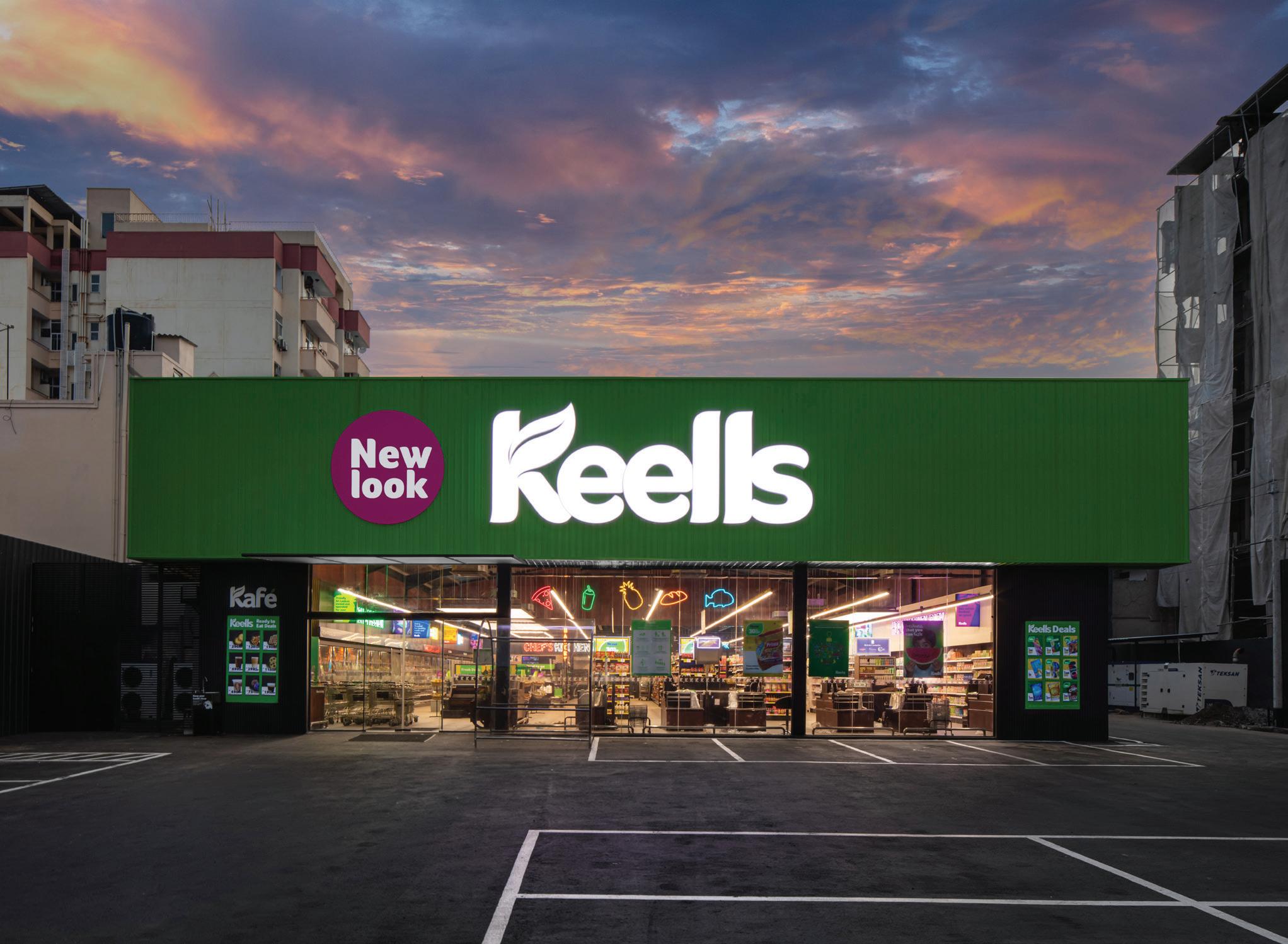

in evolving alongside our customers.
Our transformation began in 2018 with a bold rebranding initiative aimed at redefining what retail could look like for the modern Sri Lankan consumer. This wasn’t just about a new logo or colour palette; it was about recognising our shoppers' aspirations and responding with a more personalised, innovative experience.
We launched a range of exclusive products and an expanded ready-to-eat food range. Today, out of our 139-store footprint, we operate 138 in-store bakeries, 117 juice counters, and 72 prepared food counters, making us one of the largest food operators in the country.



Keells Supermarkets Senior Vice President John Keells Group
Building on this, we introduced our very own Keells Kafé in 2021, offering tea, coffee, milkshakes, ice cream, and waffles. Now available in 13 stores, the café reflects our commitment to creating relaxing in-store experiences. More recently, we’ve rolled out over 65 doughnut counters across our stores, tapping into the rising demand for indulgent and sweet treats.
Another major customer shift we identified in 2018 was the desire to experience international cuisines at home. This inspired the launch of our International Sourcing Division, which brings global flavours into Sri Lankan households by curating ranges that fill key gaps in the local market.
Today, there's a growing appetite for Chinese, Indian, Italian, Middle Eastern, Korean, and Malaysian dishes. Customers are increasingly adventurous, trying to replicate restaurant-style meals at home. As a result, demand has surged for international spices, condiments, sauces, and easy-prep meal kits.
This desire extends to everyday indulgences too. Leading global brands in confectionery, snacks, non-alcoholic beverages, dairy, and frozen foods are gaining popularity among Sri Lankan shoppers.
At Keells, we want to do more than offer products; we want to help create magic at the dinner table by bringing global inspiration within reach.
Globally Connected
Sri Lanka still depends heavily on imports for packaged food and beverage products. Today, only about 40 percent of these are manufactured using entirely local raw materials. Another 30 percent contain a mix of local and imported components, while the remaining 30 percent are fully imported.
As a responsible retailer, we remain deeply committed to supporting local businesses. All our private label packaged goods are 100 percent locally sourced, and we maintain a network of nine collection centres across the island that work directly with farmers to source and supply locally grown fresh produce.
Our ultimate goal is to curate a fulfilling and accessible shopping experience, whether it’s a daily essential or a taste of something new.





How the right partner can support a challenging export journey to Southeast Asia
At Optimo Foods, we start by distilling the core value of a brand, understanding not just what it offers, but why it resonates with consumers in its home market. From there, we assess whether those same needs and values exist in the target Southeast Asian market. Are consumers actively seeking this kind of product? Does the brand’s positioning translate culturally and commercially?
Where localisation is required, we work with our supplier partners to tweak brand messaging, packaging cues, or tailor artwork and promotional messages. Beyond that, we offer on-the-ground support, including in-store sampling, consumer testing, and trade marketing to help brands connect meaningfully with their new audience.
Getting ranged is a huge achievement, but also only the start of the journey
At the head office level, a well-established relationship with buyers often makes for a more successful launch. Finding the right category manager or buyer can also make a difference between getting an advocate for your brand and having a purely transactional relationship.
Once a brand is ready for launch in the export market, we identify the target customer base and work with brand owners to develop the strategy most suited for conveying the brand message to local consumers, be it in the form of shelf wobblers, in-store tastings or a roadshow event with bells and whistles.
In an extremely competitive market like Singapore, on-ground activation is crucial in cutting through all the noise to get the attention of the consumer. Localising brand cues is key to ensuring the message sticks in consumers’ minds.
Take Grove Avocado Oil as an example – in New Zealand, consumers tend to use the oil more for salads and as a drizzling oil. In Southeast Asia, consumers use the oil for high-heat cooking, and mums feed extra virgin avocado oil to babies for nourishment.
Marketing messages and assets need to be tailored accordingly to ensure relevance.
Another example of our work across multiple markets is with Waitrose & Partners, whose brand values - food lovers, not food snobs, extraordinary and everyday, and field to fork - resonate with consumers who value both quality and authenticity.
In Singapore and, more recently, Malaysia, we’ve supported their regional expansion by designing campaigns that emphasise these values in ways that make sense locally.
For instance, in Singapore, where shoppers are discerning but price-conscious, we tailored messaging to highlight the quality and provenance of Waitrose products while positioning them as accessible luxuries. We worked with retailers like Cold Storage and CSFresh to create in-store experiences to convey the story behind each product.
In Malaysia, where the market is still growing in its exposure to UK grocery brands, we adjusted the campaign approach in Bens Independent Grocer (B.I.G.) stores to be more educational, leaning into storytelling around British heritage, trusted sourcing, and consistent quality.
Our goal is always to stay true to the heart of the brand, while ensuring it’s relevant to Southeast Asian consumers so it doesn’t just land on the shelf, but also in their baskets.
A brand is typically ready for international expansion when it is already supplying supermarkets or mass retail channels in its home market and is willing to invest in the resources required for export development. It’s important to keep expectations grounded and aligned with available budgets.
A steep learning curve still awaits - anyone who has successfully mastered international freight management deserves an award for their achievement. I once had a comment made to me that just being able to use the word ‘incoterms’ made that person feel very knowledgeable!


Su-Lyn Wee Founder and Director
Optimo
Foods Pte Ltd
Beachhead Advisor (Singapore)
New Zealand Trade & Enterprise
Protein, gut health and collagen have been trending for many years now; however, the product format tends to differ between markets.
Protein-supplemented breakfast cereals and snack bars are more readily consumed in ANZ, in contrast to Southeast Asia, where shoppers may have access to cheaper sources of meat protein or soy-based protein.
Gut health remains a prevailing trend in all markets, but in Southeast Asia, consumers are more accepting of getting these from supplements than in their daily diets. Conversely, collagen can be found in a wider variety of foods – hotpot soup bases and stews - in Southeast Asia than in ANZ. The plant-based trend is not manifesting in the same product offerings as Australia and New Zealand either. Soy-based protein in the form of tofu and tempeh, as well as
gluten-based foods, have been part of the diet for many generations, even before Impossible and Beyond Meat were conceptualised.
A lack of understanding of consumer lifestyle and drivers of purchasing decisions can create challenges in NPD for Southeast Asia. For example, Manuka Honey in a muesli bar that is seen to be a premium in Southeast Asian markets may not hold the same value for consumers in Australia and New Zealand, where Manuka honey is readily available.
Adapting packaging artwork can also pose a challenge to brand marketers – black and gold might look regal in some markets, but signify death or bad luck in others. Incorporating language translation on a packaging can be a double-edged sword, alienating consumers who mistake the country of origin based on the foreign language.


We are seeing a few trends from APAC that are already shaping consumer expectations and product development that will likely influence the AU/NZ markets in meaningful ways.
1. Sugar and salt reduction
This is no longer a niche health trend but a mainstream expectation. In markets like South Korea and Japan, there’s growing demand for everyday foods that are lower in sugar and sodium without compromising flavour. Reformulation is happening across categories from snacks and beverages to sauces and condiments with a new generation of sweeteners (e.g. allulose, erythritol, monk fruit) and umami-forward ingredients (like seaweed extracts) stepping in to support taste retention.
2. Food sustainability and alternative sourcing
APAC’s rapidly urbanising and climatevulnerable markets are forcing food producers to rethink resource use. In Singapore, for example, the "30 by 30" food resilience goal has triggered innovation in sustainable aquaculture, hydroponics, and circular agriculture. We’re also seeing interest in lowfootprint proteins (like insect- or algae-based ingredients), regenerative farming techniques, and waste-minimising formats.
3. Function-first formats
Consumers in Asia are increasingly seeking convenience that delivers a clear function: gut health, immunity, energy, and focus. We’re seeing APAC brands launch traditional product formats from sparkling teas to liquid and gelatine in a tube infused with ingredients like prebiotics, adaptogens, and nootropics.
4. Cultural crossover flavour trends
Lastly, we’re seeing regional flavour trends like yuzu, mala, pandan, and matcha being increasingly adopted into global mainstream products. As Asia’s culinary vocabulary becomes more globalised, AU/NZ brands can tap into this by introducing authentic, Asian-inspired flavours in familiar formats, including beverages, granolas, sauces to create novelty and drive premiumisation.
An export journey can be fraught with challenges, but to disregard would be to turn away from a potential regional market of 700million consumers in Southeast Asia, or 4.3billion across APAC.


Six Fijian exporters brought a little taste of their Island delicacies to the Auckland Food Show 2025 during the four day event at the Auckland Showgrounds.

The Pasifika Diaspora appreciated the Island touch with a wide variety of products they got to taste and take back with them.
Fiji Kava a Fijian company that manufactures a variety of kava ranging from the traditional kava, ready mix and kava shots was one of the busiest as Aucklanders lined up to try it.
Seini Bolaira a representative for Fiji Kava explained to guests how kava is uprooted and invited many to her “family corner” to experience the Fijian hospitality and Bula culture.
The Fiji Trade Commission to New Zealand in collaboration with Investment Fiji assisted 6 companies respectively, Fiji Kava, Juice Fiji, Fiji Fire, Farmboy Fiji, Food Processors Fiji Ltd and Fiji Sea Salt by providing them an international platform to showcase their products to the New Zealand market.
This trade show was a learning ground for the Fijian Exporters to understand the kiwi consumers and get feedback on their products.
The Director of Farmboy Fiji Kamlesh Prasad stated that such a trade show is a research platform for his brand.
“This event will help me understand the various marketing avenues for my brand and the type of market New Zealand has for my product,” said Mr. Prasad.
Fiji Fire which is becoming a staple brand for consumers in New Zealand is being sold in more than 80 stores and has multiple distributors reaching out to onboard the product for their retail clients.
“This show has been a success for the six exporters and the Trade Commission will continue working with them to create brand awareness for their products,” States Trade Commissioner Daniel Stow.




New Zealand and Australia count on flexible checkout models meeting the expectations of shoppers, employees and retailers alike.
Consumers prefer self-checkout, valuing speed, simplicity and control. This is one key finding from the new IDC survey “The Evolution of Self-Checkout in Australia: Insights from Retailers and Consumers”, which also applies to New Zealand’s retail landscape.
On the other side, consumers not only expect intuitive help when needed and support for diverse payment methods at the self-service checkout, but they also demand better in-store experiences and especially choice when shaping their own shopping journey. The good thing is: Our retailers are well aware of this. That is why we are seeing many of them using hybrid models, allowing implementation of a
customer service model of “all lanes open, all of the time”.
This has been resonating well with consumers, and this also helps to combat other key challenges retailers are currently faced with: Improving in-store process efficiency and increasing workplace attractiveness, as it is becoming harder and harder to attract and retain store staff.
Hybrid checkout models combined with modular and flexible retail technology solutions are the basis for retailers looking for ways to push efficiency and make best use of their staff members, for example, enabling them to focus on consumer service and more valuable tasks in the store than just waiting behind a POS counter for several hours.

Modularity enables retailers to quickly and easily change configurations to suit different consumer journeys and find the optimal checkout experience, ensuring every deployment best suits their individual store’s needs. One example is the revolutionary checkout platform DN Series EASY ONE.
Designed for retail environments where maximum flexibility is required, this highly modular solution can be configured for assisted, semi-assisted or full self-service checkout while offering multiple options for peripherals and mounting. It enables retailers to immediately react to changing requirements and quickly bring more cashiers behind the counter during peak times while running the systems as a full self-service checkout solution in other periods, so the lane can stay open at all times.
Despite the high satisfaction with selfservice technology (95 percent) – another key finding from the survey – retailers are looking for ways to further innovate, prioritising AI-driven engagement, faster payments and enhanced security in their next phase of investment. Especially, AI technology is a game changer for retail, creating win-win-win situations for consumers, employees and retailers alike.
For example, with our advanced AIpowered Vynamic® Smart Vision platform, we are providing retailers with what is probably the most comprehensive toolbox currently available for reducing the common sources of loss and friction at the self-service checkout. With the help of modern Smart Vision technology, the solution analyses customer behaviour and activities in real time. If the system detects a failed scan or incorrect operation, customers receive a message on the self-service checkout display informing them that an item has not been scanned correctly. The scanning process can then be repeated without major interruption to the checkout process.
The employees are only informed if the system displays another error message, so they can provide support to complete the checkout process correctly. Should an employee intervention nevertheless be necessary, short video sequences of the process recognised by the system as an anomaly help them to better assess what situation awaits them at the checkout.

The employees are only informed if the system displays another error message, so they can provide support to complete the checkout process correctly. Should an employee intervention nevertheless be necessary, short video sequences of the process recognised by the system as an anomaly help them to better assess what situation awaits them at the checkout.
In the meantime, we extended our AI platform capabilities to the entire store and are also able to use the smart vision technology to detect slips, trips and falls hazards in the aisles, or even to recognise dangerous situations such as armed robberies. In such a case, no retailer wants their employees and customers to put themselves in much greater danger by pressing alarm buttons or calling the police. Here, for example, our “hands up” solution recognises when hands are raisedone of the most natural reactions in such a situation. A silent alarm and other measures can then be initiated, depending on what has been defined in advance by the retailer. Surely, there’s still a long way to go for retailers in our region to keep up with all the current consumer desires and retail market challenges, and we are still in early stages in terms of AI technology deployments, but I see the right passion and mindset among our retailers in New Zealand and Australia. In many cases, they have been role models for other regions in the world when it comes to customer-centric checkout innovation, and I am pretty sure that they will continue to fulfil this role in the future.







The state of the U.S. confectionery is strong. According to the National Confectioners Association’s 2025 State of Treating report, confectionery sales topped USD 54 billion in 2024, with no slowdown in sight.
Confectionery sales are expected to exceed USD 70 billion by 2029 and as inflationary pressures ease, the fun and unique products that confectionery manufacturers make will be there to continue delighting and inspiring consumers.
American consumers have a unique mindset when they enjoy chocolate and candy that is not present when interacting with other foods. They understand that chocolate and candy are treats, not meal replacements or centre-of-the-plate foods.
People in the U.S. enjoy chocolate and candy two to three times per week, averaging just 40 calories and about one teaspoon of added sugar per day. On top of that, most consumers agree that it is fine to occasionally enjoy a piece of chocolate or candy.
To help consumers choose the right treat for any occasion, chocolate and candy companies are offering more variety in pack sizes and portion options than ever before –all while reminding consumers that candy is a treat and not a center-of-the-plate food.
As a result of industry alignment around Always A Treat, chocolate and candy companies are helping consumers manage their intake of calories and added sugar while still enjoying fun and unique confectionery products.
Accordingly, the big four seasons (Valentine's Day, Easter, Halloween, and the winter holidays) accounted for 65 percent of total chocolate sales in 2024. Top reasons for people to buy chocolate and candy include seeing their favourite treats and brands, gifting, and special occasions.

Candy and snacks designed to enhance special moments were also a major trend at this year’s Sweets & Snacks Expo, where more than 1,000 exhibitors across the candy and snacks categories gathered to showcase the latest innovations.
Speaking of innovation, non-chocolate candy has also exploded in popularity over the last five years. Since 2019, the category has grown by nearly USD five billion – an increase of almost 70 percent.
Non-chocolate candy sales were boosted by the popularity of sour candy and nearly 11 percent of sales came from innovation. This trend is driven by Gen Z and Millennial consumers who report loving exploration of all things sour, flavour mashups, different textures, and flavour experiences. Even in a well-established category, it’s clear that there is ever more room for reinvention, ingenuity, and creativity.





How grocery retailers can drive profits, increase engagement and consolidate customers in 2025/2026
The supermarket and grocery marketplace has recently faced its fair share of ups and downs, challenges and opportunities. We’ve seen supply chain interruptions, shortages, increasing costs, consumer price sensitivities and regulatory scrutiny against the backdrop of global market uncertainty and rapid advancements in digital technologies, particularly concerning AI and automation.
This landscape means the pressure is on grocery and supermarket chains to maintain a solid customer engagement strategy, which includes smart personalisation tactics and loyalty programs.
Setting supermarkets apart with smarter loyalty schemes
As discussed in Eagle Eye’s latest grocers’ ebook, Loyalty Lessons That Will Shape 2025, there are now a number of exemplary grocery and supermarket loyalty programs that have set themselves apart from others. These programs master the fundamentals of loyalty with forward-thinking approaches
and advanced, purposebuilt technology.
The best supermarket and grocery loyalty programs today understand that personalisation is now an engine of bottom-line results. They know that gamification as an end to itself has diminishing returns, but when executed with a purpose, it can be an incredibly valuable and ROI-delivering tool.
The top players also recognise that the impact of any omnichannel loyalty initiative is directly proportionate to the volume of customers that participate in its digital channels. More eyeballs equals more engagement, bigger baskets and bigger media opportunity.
Personalisation in the supermarket sector: getting it right with AI
Personalisation has been an enduring goal for the supermarket sector - and for good reason. It’s a path to delighting customers, encouraging engagement, and driving financial performance.
Personalisation also allows supermarkets to allocate their marketing and promotional spending more efficiently, only presenting discounts on certain items to those customers most likely to be motivated by that discount. This kind of targeting represents a level of precision that mass marketing can’t achieve.
Supermarkets have a unique advantage
here, given the vast amount of data generated by the extensive volume of SKUs in their inventory and the frequency of customer visits. And if they have a loyalty program, they have all the data they need to tailor offers to customers at the individual level.
UK supermarket chain Tesco delivers personalised customer experiences through its massively popular Clubcard program. Tesco’s latest trading statement reports that there are more than 23 million Clubcard households in the UK and that Clubcard sales penetration was 82 percent in the UK and 87 percent in Central Europe. There are


also 16.3 million Tesco app users, with visits to the app increasing year-over-year.
This volume of digitally connected customers allowed Tesco to launch a high performing, high-engagement personalisation initiative driven by gamification: Clubcard Challenges. This program offers customer personalised, goal-oriented challenges over six week campaigns, with points rewards offered for completing challenges like spending £20 on certain line or range of products over the period.
Clubcard Challenges uses AI to create bespoke thresholds for each participant, drawn from insights into that customer’s past purchase history and preferences, which are then analysed and processed by predictive AI algorithms.
The campaign’s performance results are striking. During the final, Christmasthemed Challenges campaign of 2024, 10 million customers received their own personalised set of Clubcard Challenges. Of all customers who visited the Clubcard Challenges site or pages, 76 percent converted into players. Sixty-two percent of all players reached the first reward threshold, becoming winners. Those winners collected over half a billion extra Clubcard points over the campaign period.
During 2024, Tesco’s H1 24/25 overall adjusted operating profit increased 15.6 percent over 2023 to £1.649 billion.
Gamification goes goes global
In a 2023 Euromonitor International survey, almost 70 percent of respondents identified gamification as a top loyalty tactic, tapping into consumers’ appetite for interactive and goal-driven experiences. However when it comes to supermarket chains, gamification needs to make sense and add something to the customer experience. When done right, gamification can add a sense of novelty to the shopping experience, keeping customers engaged and driving incremental sales. The keys to effective gamification strategies are getting (and keeping) customers behaviorally invested and rewarding them with real value.
The Tesco Clubcard Challenges initiative discussed earlier, and a similar program from French grocery retailer Carrefour are excellent examples of this. These gamified challenges ask customers to modify their behavior to earn their reward by exploring a different product category or achieving buying targets rather than simply waiting for their loyalty points to accrue for their anticipated discounts. This active participation deepens engagement, not just with the loyalty program but with the grocery brand itself.
While modern, AI-driven personalisation, gamification and omnichannel engagement are transforming supermarket loyalty globally, these approaches represent somewhat untapped opportunities across global markets. While the true-personalisation sector is still young, supermarket chains that implement such strategies could create a compelling competitive advantage, accelerate profits and drive real, meaningful customer engagement.
Eagle Eye is a leading SaaS and AI technology company enabling retail, travel and hospitality brands to earn the loyalty of their end customers by powering their real-time, omnichannel and personalised consumer marketing activities, at scale.
Eagle Eye AIR is a cloud-based platform, which provides the most flexible and scalable loyalty and promotions capability in the world. More than 850 million personalised offers are executed via the platform every week, and it currently hosts over 500 million loyalty member wallets for businesses all over the world. Eagle Eye is a certified member of the MACH Alliance and is trusted to deliver a secure service at hundreds of thousands of physical POS destinations worldwide, enabling the real-time issuance and redemption of promotional coupons, loyalty offers, gift cards, subscription benefits and more.
The Eagle Eye AIR platform is currently powering loyalty and customer engagement solutions for enterprise businesses all over the world, including Asda, Tesco, Morrisons, Waitrose and John Lewis & Partners, JD Sports, Pret a Manger, Loblaws, Southeastern Grocers, Giant Eagle, and the Woolworths Group. In January 2024, Eagle Eye launched EagleAI, a next-generation data science solution for personalisation, already being used by leading retailers worldwide including Carrefour, Auchan and Pattison Food Group. Web - www.eagleeye.com
About Jonathan Reeve
Jonathan is a seasoned expert in retail, with nearly three decades of global experience that included being on the team that developed the operating model of Tesco.com. After successfully operating his own consulting business for five years and authoring the influential book, "Retail's Last Mile: Why Online Shopping Will Exceed Our Wildest Predictions", Jonathan is now the Vice President for the Asia Pacific region at Eagle Eye, a SaaS technology company transforming marketing through real-time personalised performance marketing.





2025 has proved to be a challenging year for brands in terms of managing sustainability perceptions.
Brand Finance’s latest round of research suggested a slight decrease in the influence of sustainability on consumer choice. Of the 48 industry sectors, 38 experienced a decline in the influence of sustainability from 2024 to 2025. A political ESG backlash, cost-ofliving concerns, or a combination of other factors may drive this.
Over a three-year period, the importance of sustainability increased in the majority of sectors, indicating that sustainability remained a powerful driver of choice in global markets.
Brand Finance research consistently indicated that sustainability played a significantly stronger role in driving choice in the luxury and premium market segments. The three sectors where sustainability plays the greatest role in determining choice are the luxury automotive, champagne, and spirits industries.
There is a similar pattern in cosmetics –sustainability is 50 percent more important as a demand driver in luxury cosmetics than in the broader cosmetics market. A brand’s sustainability commitments may imply a slight cost increase, necessitating a more premium positioning.
Premium-segment consumers also exhibit less price sensitivity, allowing them to prioritise improvements in other attributes, such as sustainability. Lastly, at the premium end of many markets, brands become more than just a guarantee of attributes to the consumer; their products are also a signal of the purchaser’s status, taste, identity, and/or ethics.
Sustainability is often perceived as more salient in consumer decision-making; however,
In the food sector, common themes amongst brands with sustainabilityled positioning include the health and environmental benefits of local ingredients and lower-carbon, plant-based alternatives.
Meal shake brand Huel has the strongest environmental sustainability perceptions in Food among US respondents, and smoothie brands Innocent and Naked drinks stood out in the US and UK research results as well. All of these brands’ marketing links health to environmentally friendly living.
Supermarkets and food retailers with the strongest sustainability perceptions include Trader Joe’s, Whole Foods, Alnatura, Coop, and Biocoop. These brands are likely recognised for showcasing a mix of organic, local, and sustainably produced offerings. For example, Whole Foods runs an annual campaign for products made by womenowned businesses and B Corporations.
Supporting small businesses and local producers not only reduces environmental impact through shorter supply chains but also empowers consumers to align their purchases with their values, reinforcing both environmental and social sustainability.
Personal care brands continue to innovate their packaging, clean ingredients, inclusivity, and body positivity. Dove, La Roche Posay, Yves Rocher, The Body Shop, and L’Occitane are all highly recognised for sustainability across the US, UK, Germany, India, China and France. The Body Shop helped set early standards for sustainability through its advocacy against animal testing and environmental campaigning, principles that newer standouts are building on through innovations like low-waste packaging and clean, ethically sourced ingredients.



Supporting small businesses and local producers not only reduces environmental impact through shorter supply chains but also empowers consumers to align their purchases with their values, reinforcing both environmental and social sustainability.
In Australia, perceptions of sustainability are shaped by both heritage and innovation. Supermarket brand Harris Farm Markets leads on environmental sustainability, emphasising locally sourced and natural products for consumers seeking lowerfootprint options. Premium skincare brand Aesop is recognised for social and governance sustainability, aligned with the brand’s use of clean ingredients and minimalist, refined image.
France is home to many sustainabilityaligned brands, often those with strong environmental narratives or longstanding commitments.
On environmental sustainability, supermarket chain Biocoop meets consumer demand for local, organic food, positioning itself as a more sustainable alternative to conventional supermarkets.
Waste management brand Veolia presents an intuitive environmental message as a recycling leader, communicating its role in circular economy initiatives.
In the personal care space, skincare and cosmetics brands Yves Rocher and La Roche-Posay appeal to socially conscious consumers through clean ingredients and responsible production, while positioning their products as premium.
India's best-perceived brands embody the nation’s value of corporate social responsibility. The conglomerate Tata Group once again stands out as a respected legacy brand with holistic sustainability credentials. Its early employee welfare practices and longstanding philanthropic ethos exemplify a “people first” philosophy that continues today.
Herbal wellness brand Dabur has high perceptions of environmental and social sustainability. Amul, the world’s largest farmer-owned dairy cooperative, promotes regenerative practices across its vast rural network.
In the UK, consumer-facing brands hold strong sustainability perceptions. Supermarket brand Waitrose is perceived as a responsible grocer on both environmental and social categories, prioritising local sourcing and British-made goods. Department store and grocery brand Marks & Spencer (M&S) is similar in its approach, while also maintaining its own seal for healthy and sustainable products.
Smoothie brand Innocent nets strong environmental perceptions, likely due to its circular business model that repurposes “imperfect” fruit to reduce waste.
Luxury wine brand Cheval Blanc has strong environmental sustainability perceptions, likely due to its packaging innovations to reduce material and prioritise recyclability. Huel, a meal-replacement brand, is also recognised for environmental sustainability. The brand communicates sustainability metrics for its ingredient selection, helping consumers make lowerimpact food choices.
Scaling back communication on sustainability in fear of stakeholder criticism, known as greenhushing, has significant drawbacks. Brands that fail to convey their progress on sustainability are leaving money on the table, reducing value for shareholders.





The retail media market is estimated at $2.6 billion in 2024 and is forecast to grow by up to 15 percent in 2025, and retail brands are piling in, with several major retailers launching their own networks in 2025.

But for all the excitement, FMCG brands are grappling with what this new era of media really means. So, how can FMCG brands cut through the hype and build a strategy that drives real returns?
Trust is a major hurdle
While 37 percent of brands plan to increase their retail media investment over the next 12 months, 55 percent are holding
steady, and 8 percent are pulling back. What’s driving the hesitation? Trust.
According to the Arktic Fox & Six Degrees Executive 2025 Digital, Marketing & eComm study, 54 percent of FMCG | CPG brand leaders report low levels of trust in Australian retail media networks. The remaining respondents indicate only moderate trust. Why? Because retailers aren’t consistently delivering. Brands cite a lack of transparency, slow access to data and reporting, under-delivered campaigns, and unclear ROI.
Add to those internal challenges with measurement, and confidence in retail media outcomes starts to wobble. If RMNs want deeper brand investment, they need to earn it. And until trust is earned, many brands will hold back, uncertain about whether retail media is a worthwhile investment.
Whilst trust in the networks isn’t where it needs to be, retail media is enabling brands to position their product effectively at POP, and so brands can’t ignore the retail media opportunity. It is important during this period of growth that brands lean into their network partners and leverage their existing relationships to share challenges and pain
points and engage in co-creation to ensure retailers can better serve their needs over time.
Capability is the elephant in the room
One of the least talked about, but most pressing issues for FMCG brands is addressing the capability gap.
Retail media sits at the intersection of digital, media, shopper marketing and eCommerce. But most FMCG and CPG teams haven’t built out the structures or skillsets needed to effectively maximise return and derive value.
The 2025 Digital, Marketing & eComm study found:
• 96 percent of brands | suppliers are struggling to quantify ROI and uplift
• 44 percent rate their internal retail media capability as low
Why is this? There are a few issues at play here; Retail media can often be managed by sales or shopper marketing teams who may not have the digital expertise or crosschannel knowledge needed to effectively manage integrated campaigns. Retail media is increasingly full funnel, whereas these
teams are traditionally conversion-focused, so knowledge gaps emerge, and everything is measured through a sales lens, even if the activity was top of funnel.
At times ,retail media expertise is often augmented by an agency, but the agency has limited knowledge and understanding of the broader digital shelf strategy, margins, stock and more to be able to effectively make the right decisions to drive growth levers.
Retail media is also an evolving field, and few brands have been exposed to best practice approaches and which brands are doing it well.
Brands are investing hundreds of thousands of dollars in retail media, some even spending in the millions, and yet little investment is being made to build the internal capability and at what cost? That’s why it’s critical for brands to:
• Upskill teams with cross-functional capabilities in omnichannel strategy, digital media buying, measurement, and optimisation
• Invest in specialised external expertise or partnerships to plug capability gaps and build internal knowledge
• Develop better measurement frameworks, including tracking online-to-offline sales (ROBIS), accounting for halo effects, and considering the role of market mix modelling to quantify better returns where performance gaps currently exist.
Without these foundational skills, FMCG and CPG brands will continue to miss out on the full potential of retail media.
Too many networks, too little value
Retailers across grocery, pharmacy, liquor and marketplaces are all launching their own networks. Coles360, Woolworths Cartology, Amazon Ads, Chemist Warehouse, Bunnings - the list is growing. Globally, the average number of RMNs that large brands invest in is now five or more, with 39 percent of Australian brands in the 2025 study now utilising four or more. For brands in health, beauty, baby and personal care categories, that number is often at the higher end due to their products being stocked across multiple retail environments. But with multiple networks come operational headaches. Each RMN has its own media formats, targeting capabilities, measurement dashboards and booking processes. Teams are stretched, juggling various platforms, each with different reporting structures, ad formats, and media requirements.
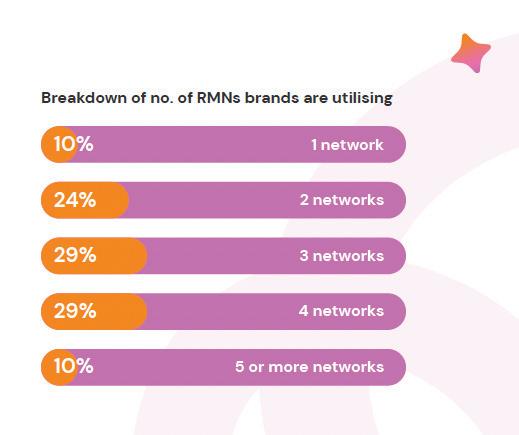
Campaigns across multiple RMNs cannot be easily scaled or compared, and spreading investment too thin across multiple networks can limit their impact. However, going all-in on a single RMN carries its own risks, particularly if retailer priorities shift or media performance doesn’t meet expectations.
FMCG brands need to:
• Strategically prioritise RMNs, investing in the platforms that deliver the best results based on real data.
• Focus on fewer, bigger, better networks, narrowing down where to place their bets and placing 80 percent - 90 percent of their budget with the networks they know work best, whilst leveraging 10 – 20 percent of the budget to continue to test and trial over time.
• Continuously review performance and determine if the right mix of retail media channels is being leveraged to deliver key category, product or portfolio outcomes.
Over time, as more networks enter the market, we anticipate that brands will consolidate their efforts to focus on the platforms that truly move the needle.
How brands will succeed
Retail media is an undeniable growth opportunity for FMCG & CPG brands - but it’s not without its challenges. To succeed, brands must:
• Build trust by partnering transparently with RMNs and demand the same of them
• Address capability gaps by upskilling teams and augmenting with external specialist expertise beyond existing partners
• Refine measurement frameworks to capture the full impact of retail media
• Strategically prioritise networks to avoid spreading resources too thin
• Think long-term and embrace retail media as part of an integrated marketing strategy
With the right approach, FMCG brands can not only cut through the hype but also drive meaningful, long-term success in the retail media boom.
Arktic Fox is an advisory and learning organisation partnering with leaders to better leverage opportunities in Digital & eCommerce to drive successful and sustainable outcomes. Download the 2025 Digital, Marketing & eComm in Focus study here. https://www.arkticfox.io/digitalmarketing-ecomm-in-focus-2025
About Teresa Sperti Teresa Sperti, Founder and Director of Arktic Fox, is a commercial, digital & eCommerce thought leader with 25 years' experience in the industry. Her career has spanned larger corporations, including Coles and Officeworks, including SMEs.





Tackling Imbalance of Bargaining Power: EP aims to strengthen protection against unfair trading practices in the EU.
AIM, the European Brands Association, has welcomed the European Parliament Agriculture Committee’s 44 to one vote in favour of strengthening cross-border enforcement of the Unfair Trading Practices (UTP) Directive.
This overwhelming support has sent a strong and unified signal: fairness in the supply chain must be enforceable across the Single Market. We call for a swift adoption of the position in plenary.
Fast moving consumer goods is Europe’s third-largest manufacturing sector, moving over EUR 276.1 billion worth of goods around the EU internal market each year. Our members depend on a predictable, rules-based Single Market to ensure investment, resilience, and competitive consumer choice.
The committee’s agreed text introduces a rapid alert mechanism to strengthen coordination between national authorities, mandates extra-EU buyers appoint a legally responsible person, and improves on the Commission’s proposal by aligning with the UTP Directive and the Rome I Regulation. Specifically, it confirms that overriding
mandatory provisions (OMPs) adopted by Member States to safeguard public interest, including fair trading rules, must be respected in cross-border cases. This is not a new legal power, but reinforces the existing references in Dir 2019/633, a necessary step to ensure consistency and legal certainty across the EU framework.
Moreover, MEPs have rightly identified how European Retail Alliances (ERAs) exploit gaps in the current legal framework, exacerbating the imbalance in bargaining power between retailers on one side and brand manufacturers and their suppliers, including farmers, on the other. The case for action is compelling. The five largest ERAs alone account for approximately EUR 580 billion in EU retail turnover, giving them a massive economic footprint. Operating transnationally, these alliances often engage in forum shopping, seeking jurisdictions with weaker national implementation of the Directive, and at times circumventing EU law altogether. Their dominance over access to key shelf space across multiple markets enables the systematic permeation of unfair trading practices. This entrenched power imbalance makes effective and coordinated
enforcement not just necessary, but urgent. Looking ahead, the 2026 revision of the Unfair Trading Practices (UTP) Directive must address the persistent fragmentation of existing rules. Today, different levels of protection apply across Member States: 14 offer safeguards irrespective of supplier turnover, and three go further by extending protections to all producers. This regulatory patchwork results in unequal treatment between suppliers competing in the same markets, undermining fairness and distorting competition across the supply chain. A more coherent framework is needed to ensure that all operators, regardless of size or location, benefit from a level playing field and balanced bargaining power in their commercial relationships.
AIM calls on the European Commission to use the upcoming revision to harmonise and simplify the existing ruleset by removing the EUR 350 million supplier turnover threshold, and complementing the current legal base by adding Article 114 TFEU, ensuring full and uniform application for all producers throughout the Single Market, reinforcing support for farmers. n
Food co-ops that belong to National Co+op Grocers (NCG) last year achieved same-store sales growth of 4.7 percent. Compare this with the overall US retail food market of less than three percent for 2024. NCG member co-ops also outperformed traditional retailers in shares of local, organic and fair trade products sales.
In the 2024 Food Co-op Impact Report, NCG credits food co-ops’ community ownership model and commitment to building local supply chains among the factors contributing to their success. The annual report analyses the collective economic, social and environmental impacts and achievements of its community-owned member food co-ops.
Now with 165 food co-ops, NCG continues to work to maximise members’ success, inclusivity and impact, and to grow the cooperative grocery sector in size and scope in an environmentally regenerative manner. Today, more than 1.3 million U.S. residents belong to an NCG food co-op.
Food co-ops are industry leaders when it comes to supporting local farmers and entrepreneurs. The average NCG food co-op purchases from 175 local farms and producers, more than four times as many as similarly sized food retailers report (41 farms on average). Twenty-four percent of the average food co-op’s sales come from local products, compared with just two percent of sales at a conventional grocer.
Food co-ops continue to lead in organic product sales, with NCG reporting that 37 percent of food co-ops’ combined annual USD 2.8 billion sales come from Certified Organic products, compared with 24 percent of sales at other natural grocery retailers, and conventional grocers just three percent (according to 2024 SPINS data).
NCG reports Fair Trade Certified products made up six percent of food co-ops’ total sales, higher than other natural grocery retailers (four percent) and conventional grocers (0.5 percent).
Sales of B Corp Certified products made up nine percent of the average food co-op’s total sales, higher than other natural grocery retailers (six percent) and conventional grocers’ (two percent). B Corp Certification is a label that speaks to a company’s rigorous commitment to social and environmental sustainability. NCG has been a certified B Corp since 2011.
Showing solidarity, food co-ops prioritise products that are produced by other co-ops, such as dairy, chocolate and coffee farmer coops. Cooperatively produced products make
up five percent of food co-ops’ total sales, higher than natural retailers (three percent) and conventional grocers (one percent).
Food co-ops are owned by the people in the community who shop at the co-op and have chosen to make a one-time investment in a lifetime membership (usually a USD 100-200 purchase of stock). The members then elect a board of directors among themselves.
This democratic process and local ownership model mean that food co-ops don’t change their values depending on which way the wind blows. They are rooted in their communities and participate in the international cooperative business movement, a business model driven by democracy.
Local ownership means that stores are responsive to community needs, profits remain in the community and support local economic development. Food co-ops invest in their communities, collectively, food co-ops donated more than USD 9 million to local groups last year, and NCG contributed an additional USD 1 million to organisations working to advance co-ops’ advocacy priorities at regional and national levels. n






Foodservice in U.S. convenience stores continues to set brands apart by offering diverse and exciting menu options. It also drove in-store sales to record levels in 2024, according to newly released data from the National Association of Convenience Stores (NACS).

Foodservice sales, which include prepared food, commissary, and hot, cold, and frozen dispensed beverages, accounted for 27.7 percent of in-store sales and 38.6 percent of in-store gross margin dollars at convenience stores in 2024. Most foodservice sales are from prepared food, and that share has grown over the last five years. In 2024, prepared food accounted for 72.6 percent of foodservice sales.
Foodservice sales have seen remarkable growth over the past 20 years. In 2004, 11.9 percent of in-store sales came from foodservice. Food-forward strategies at

convenience stores are driving trips and enhancing customer experience.
Despite sluggish convenience store sales over the first half of 2024, strong foodservice and merchandise sales over the second half pushed overall sales to a record USD 335.5 billion, a 2.4 percent increase over the year prior and the 22nd consecutive year of record in-store sales.
Convenience stores, which sell an estimated 80 percent of the fuel purchased in the U.S., saw total fuel revenues decrease 5.7 percent to USD 501.9 billion as a result of a 6.5 percent decrease in the average gas price (USD 3.31 in 2024 vs. USD 3.55 in 2023 ). Total gallons sold increased slightly by 0.8 percent. Total convenience store sales, including fuels and in-store items, were USD 837.4 billion in 2024.
Among the top ten in-store merchandise categories (excluding foodservice), all but one saw positive sales and gross profit growth in 2024: cigarettes. Although convenience stores are the preferred channel for nicotine consumers, more operators are increasingly focusing on categories such as foodservice and beverages.
For beverages, convenience stores are the go-to destination. Beverages are a c-store juggernaut and the ultimate grab-andgo product, with more than 80 percent of shoppers consuming their beverage of choice within an hour of purchasing.
Packaged beverages (which excludes beer, wine, and liquor) accounted for 17.9 percent of in-store sales and 21.2 percent of gross profit dollars in 2024. The synergies of key categories are significant as more
than one third (37.4 percent) of customers who purchased packaged beverages also purchased prepared food in the same trip, according to the NACS Convenience Voices program. Foodservice plus packaged beverages accounted for 60.8 percent of instore profit dollars in 2024.
Energy drinks lead packaged beverage sales, representing 27.8 percent of overall category dollars, followed by carbonated soft drinks (26 percent), sports drinks (15 percent) and bottled water (12.4 percent). Iced tea, juices, enhanced water and all other packaged beverages combined for of the remainder of the category sales.
Expenses for convenience stores increased 5.2 percent in 2024; however, the rate of growth slowed for the second consecutive year. Credit and debit card swipe fees increased 0.2 percent in 2024 despite lower gas prices. Most c-store customers used cards for purchases, both inside the store and on the forecourt, with 80.8 percent of total sales in 2024 transacted with cards. This number has grown 7.3 points since 2020.
The U.S. convenience store count is 152,255 stores, a slight decrease of 141 stores (0.1 percent) compared to the 2024 store count, according to the 2025 NACS/NIQ TDLinx Convenience Industry Store Count. The number of convenience stores selling fuel increased 1.5 percent to 121,852 stores.
The convenience store industry’s 2024 performance numbers were released during the NACS State of the Industry Summit, the industry’s premier event for analysing industry performance and trends that could impact the industry in 2025. n




Many kiwi families take a well earned break over the summer, packing the car and heading for the beach or the lakes. Sure, we like to enjoy the same food and produce we’re used to at home and stock up for Christmas and New Year celebrations, but don’t give much thought to how our groceries get there.

We in the FMCG industry know how tough it can be to keep the shelves stocked through the break, with statutory holidays and people on leave, seasonal shutdowns and transport issues making life difficult, let alone if there’s weather-related challenges like storms or droughts in the mix.
Supply chain, or how we move food and grocery product to where it needs to be, is at the heart of our industry and successfully managing the summer’s high demand is a challenge that takes planning and collaboration. 2025/6 will be the seventh year of the ‘Winning in summer, winning together’ programme, a collaborative project between NZ Food & Grocery Council, Foodstuffs North Island, Foodstuffs South Island and Woolworths NZ to get ahead of potential problems, while supporting product availability and a healthy supply chain.
Supply chain leaders say the summer isn’t won at Christmas, but through January when the short weeks come into play, which affects transport, warehousing and production. These can take experience to manage, even though key team members might be on leave, creating a perfect storm of challenges.”
The primary tip is to ‘plan, plan, plan’, creating a shared understanding by ramping up communication not just with your own team, but with trading partners to minimise surprises. Everyone needs to be clear on the measures and Key Performance Indicators being worked to, but equally, allowing for a degree of flexibility is crucial for handling unforeseen circumstances, along with a contingency plan everyone agrees on before summer arrives.
The ‘Winning in summer, winning together’ toolkit is a member exclusive resource that’s successfully helped suppliers of all sizes plan for summer. It’s based on real data and experience built through the last six years of the programme, with insights from suppliers and retailers alike.
The toolkit helps bed in a process for understanding and checking off of the critical issues, while getting clear on who’s responsible and accountable for each step. It works best with collective input and not leaving it to an individual or single department to carry the workload.
This is a key selling period for the FMCG industry and it’s really important to get it right – the summer supply chain toolkit is all about picking up issues early and

Raewyn Bleakley Chief Executive, New Zealand Food & Grocery Council
adjusting accordingly, in your own processes and with your partners. Often it’s the really simple things like shut down times that can cause issues, so being able to check off the key components systematically and get that alignment with retailers is invaluable.
NZFGC members can access the toolkit for free, just let us know if you’re keen to get started.
We trust the toolkit will help make your summer break more relaxing, knowing you’ve done the work beforehand to be ready for all eventualities – and if you’re working through, a sincere thank you for your dedication to keeping summer moving and stock on the shelves!
For more: www.fgc.org.nz/summertoolkit



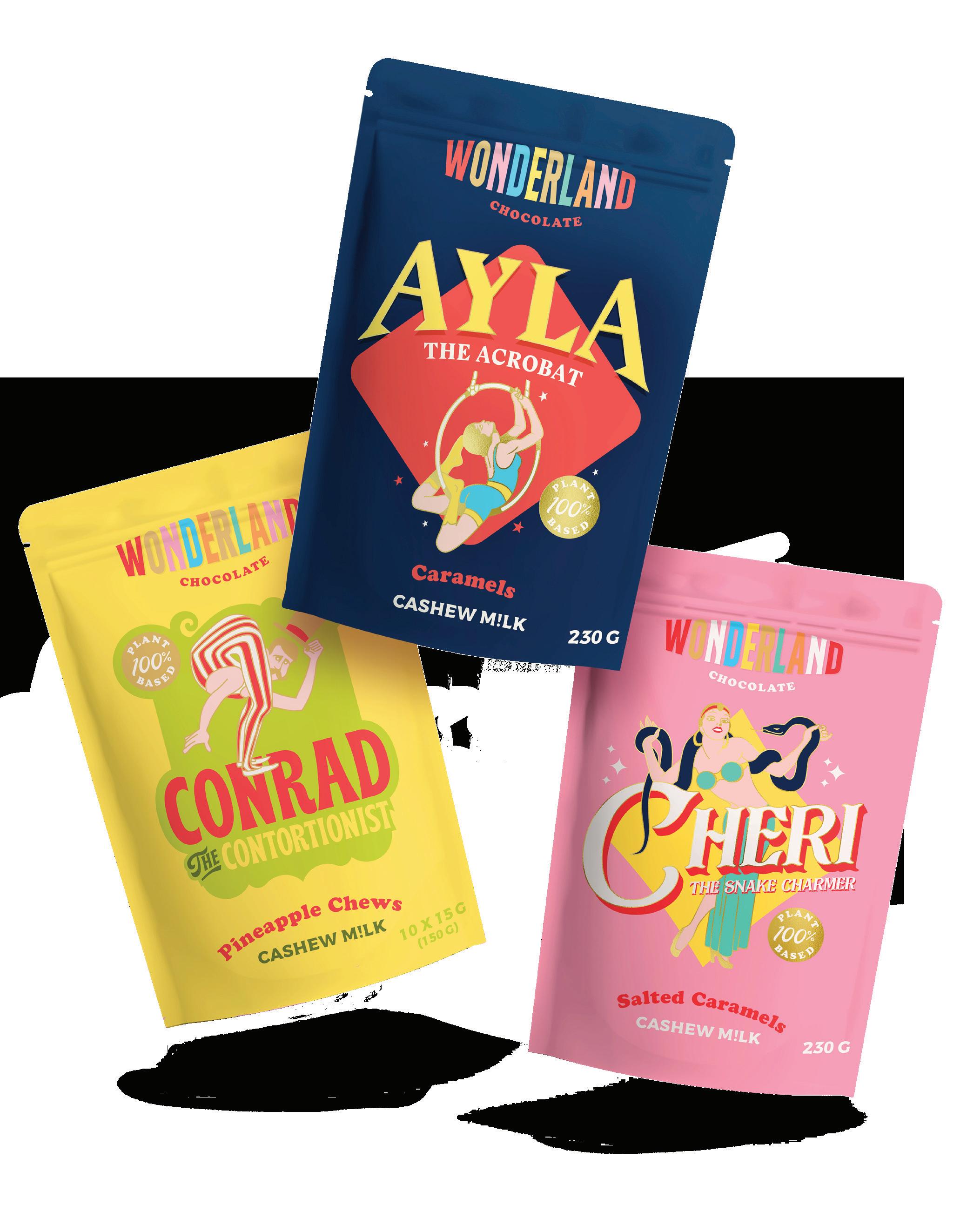
ntroducing delicious 100% plant-based caramels & chews, dairy-free and delicious

In just around five weeks, drinktec 2025 will open its doors. From September 15 to 19, 2025, the world of the beverage and liquid food industry will meet again in Munich. Around 1,100 exhibitors will present cutting-edge solutions and future technologies in eleven halls at the Munich Exhibition Center.
They will once again be dialogue partners for all national and international decision-makers when it comes to investment decisions and the strategic orientation of brands. This exchange will be based on a complete overview of all raw materials, process technologies, filling and packaging technology, logistics, and IT directly at drinktec, where all projects with the experts can be discussed.
With a comprehensive range of products covering the entire value chain of beverage and liquid food production, visitors to drinktec will gain inspiration for the future orientation of their product portfolios and learn about the latest trends in the industry. With around 70 percent of exhibitors coming from outside Germany, drinktec once again demonstrates its highly
international character – a clear indication of the global significance of this platform within the industry. The largest groups of exhibitors (after Germany) come from Italy, the USA, and China, countries that have been bringing together the widest range of offerings for the industry at several drinktec editions.
New Liquidrome – Hotspot for knowledge transfer and networking
The new “Liquidrome” format provides additional impetus. Under this branding, the trade fair team in Hall C4 is presenting a wide-ranging supporting programme: exhibitor talks, presentations on research projects, and practical insights form the backdrop for strategic decisions in visitors' own market and brand scenarios. In this environment, numerous start-ups will also
be showcasing new solutions and answering critical questions from the audience during start-up pitches.
All offerings in Liquidrome focus on the key topics of “Circularity & Resource Management,” “Data2Value,” and “Lifestyle & Health.” “Here on our large Wave Stage, we have a diverse programme that includes macro trends, AI solutions for practical use, and numerous ideas for resource-efficient production,” emphasizes Markus Kosak, Executive Director of the drinktec Cluster. With several offerings on innovation strategies and insights from the start-up scene, the Deep Dive Lounge in the Liquidrome complements the programme and offers ample space for networking.
"We also see strong potential in the functional beverages sector – for example, beverages with health benefits – which is why we have integrated a health bar into the Liquidrome. There, selected partners offer tastings of innovative beverages. This allows them to provide the industry with ideas on how to potentially tap into the segment of beverages with added benefits," says Markus Kosak. The entire offering at
Liquidrome is free of charge for visitors and available at drinktec | Supporting Programme at the Liquidrome.
Online: Exhibitor and product database and Innovation Guide
By purchasing tickets via online registration, visitors benefit from lower ticket prices and are guaranteed quick access to the exhibition halls even after the trade fair opens. All visitors who want to prepare for their visit to the trade fair in advance can already find all exhibitor offers online in the drinktec| Exhibitor & products database. The information provided in the Official innovation guide of drinktec is particularly exciting. Exhibitors with innovative solutions are listed in this overview and can be viewed by trade fair visitors on their mobile phones when they enter the grounds.
The entire drinktec 2025 site can be accessed via the West, Northwest, North, and East entrances, providing optimal connections to both the subway from downtown Munich and the parking garages and outdoor parking areas. Connections to the airport (arrivals and departures) are available from the North
entrance and the East entrance (departures only). All information on travel planning is available online at drinktec.com/en-US/visit/ travel-stay.
“Market data indicates that positive developments are expected for beverages and liquid foods in many regions,” emphasizes Markus Kosak. “drinktec is definitely the global economic summit and therefore a must-attend event for shaping the future of the industry. Plan your stay now and take advantage of the affordable online booking options. The entire trade fair team at YONTEX looks forward to welcoming all industry players from Germany and abroad to drinktec!”







CCL Label is a global leader in innovative label and packaging solutions. With a worldwide network and state-of-the-art technologies, CCL helps brands present their products in a compelling, safe, and sustainable way. The focus is on customized solutions that combine design, functionality, and environmental responsibility.

ADM unlocks the power of nature to enrich the quality of life. We’re an essential global agricultural supply chain manager and processor, providing food security by connecting local needs with global capabilities. We’re a premier human and animal nutrition provider, offering one of the industry’s broadest portfolios of ingredients and solutions from nature. We’re a trailblazer in health and well-being, with an industry-leading range of products for consumers looking for new ways to live healthier lives. We’re a cutting-edge innovator, guiding the way to a future of new biobased consumer and industrial solutions. And we're leading in business-driven sustainability efforts that support a strong agricultural sector, resilient supply chains, and a vast and growing bioeconomy. Around the globe, our expertise and innovation are meeting critical needs from harvest to home.

FMT s.r.l. is a dynamic company specialising in designing and manufacturing turnkey installations and freestanding machines for food and beverage industry. The high quality, reliability and flexibility of all its equipment makes these machines suitable for a variety of applications. The production range includes complete packaging lines for a wide range of products, including sauces, vegetable preserves, dairy and meat products, fruit juices, edible oils and soft drinks, as well as beer, in any kind of container (glass, PET or metal). Since its foundation in 1997, FMT s.r.l. has been operating according to a policy based on customer satisfaction, with its main concern being the personalisation of machines according to customers' specific requests.

Powered by innovation and creativity, Givaudan Taste & Wellbeing aims to shape the future of beverages by becoming the co-creation partner of choice to its customers. Built on its global leadership position in flavours and taste, the Company goes beyond to create beverage experiences that do good and feel good, for body, mind, and planet. With an expanded portfolio of products across flavours, taste, functional, and nutritional solutions, Givaudan’s passion is to collaborate with customers and partners to develop game-changing innovations in beverages. This is Givaudan. Human by nature. At Drinktec, we invite you to explore the exciting world of beverage innovation efficiency. Consumers are lapping up bold and innovative new beer, soft drinks, and tea flavours. How can you be the first to market with fresh and unique experiences while keeping costs in check? Join us at our booth to share a drink with our experts and discover how our unique ingredients, tools, and expertise can help you innovate faster and smarter.

GDXL Precise Machinery Co., Ltd. is a leading high-tech enterprise specializing in PET packaging solutions. Established in 1993 and headquartered in Foshan, Guangdong, China, GDXL has evolved from a mold manufacturer into a comprehensive PET engineering partner, delivering products and services to over 800 customers in over 70 countries and regions. Product and Service GDXL’s core product portfolio includes preform mold, blow mold, closure mold, hot runner and components.

Oberrecht GmbH is a medium-sized family-owned company in the 2nd generation that has been supplying quality spare parts worldwide since 1991, primarily to the bottling and packaging industries (e.g. beverage, food, cosmetics and glass industry) – in some segments as so-called “hidden champion”. Working closely together with our clients (including bottling companies, machine builders and service teams) ensures that our assortment always meets the needs of the market. With high quality at attractive prices, our JO® products ensure continuous satisfaction. Over the last decades, we have taken root as a strong and reliable partner in the European market and at several world-wide sales locations. Apart from our top location in Germany we are represented in around 30 further countries




ProMach is Processing & Packaging Performance ProMach is a global leader in processing and packaging equipment, partnering with manufacturers across the world to deliver smarter, scalable, and performance-driven production solutions. We support over 100 countries and a wide range of markets—from global CPGs (consumer packaged goods) to emerging brands—by offering a complete portfolio of solutions that power the production lines behind some of the most trusted names in beverage and consumable liquids. ProMach is a family of 55+ product brands that operate across the entire production line and are organized under nine distinct business lines: Systems & Process, Filling, Bottling & Capping, Decorative Labeling, Flexibles & Trays, Handling & Sterilizing, Labeling & Coding, Robotics & End of Line, and Pharma.


The ProMinent Group is a manufacturer of components and systems for metering as well as a reliable solution partner for water treatment. ProMinent offers practical solutions for various industries through innovative products, a distinctive and long-term understanding of processes and strong application orientation. With this, ProMinent supports its customers worldwide in terms of safety, efficiency and environmental protection. The Group is headquartered in Heidelberg, Germany. More than 3,000 employees in about 50 own sales and service companies as well as 11 production sites work hard to provide individual solutions and high-quality services to ProMinent customers in about 100 countries.
Simpler. Faster. Better. Sleeve Seal entered the labeling industry when we recognized the need for simpler, faster, better built labeling equipment. In an era when efficiencies matter most, we deliver labeling solutions to the country’s largest manufacturers who depend upon our robust, easy to operate labelers for efficiencies of >99.5%. Sleeve Seal is focused on repeatable labeling performance, and we partner with the giants of the automation industry to integrate the best technologies required to apply labels time after time to exacting specifications. Our engineering teams are focused on developing intelligent labeling systems while we maintain our “customer service first” attitude.

Sidel is a leading global provider of packaging solutions for beverage, food, home and personal care products in PET, can, glass and other materials. Based on over 175 years of proven experience, we help shape the factory of tomorrow, through advanced systems and services, line engineering, eco-solutions, and other innovations. With over 40,000 machines installed in 170 countries, Sidel has 5,000+ employees worldwide who are passionate about providing equipment and service solutions that fulfil customer needs.

Tyrolon GmbH develops, sells and integrates innovative and universal bottle and container transport systems for glass, PET and cans for end customers and OEMs. The main product focuses are the patented gripper systems tyrolon Star® and tyrolon® Neck and other innovative components along the filling process; Tyrolon Stars® for all bottle/ container shapes and sizes; manufacturer-independent; for initial equipment or for retrofitting and optimizing existing systems; Rinsers, fillers, cappers, labelers, inspectors from almost all manufacturers; Benefits: Elimination of bulky format parts, elimination of changeover times, long service life, high savings potential, increased line efficiency, increased operating efficiency; Tyrolon® Neck: universal neck clamp systems for PET bottle handling in different designs and materials; active grippers, compatible or adaptable for many conventional clamp systems from different manufacturers; Benefits: few individual parts, low maintenance, increased efficiency, best hygiene properties, long service life

SmartSkin delivers advanced manufacturing intelligence through the integration of innovative digital container twins and proprietary software, empowering manufacturers with precise, actionable data to enhance productivity and operational efficiency. By enabling data-driven decision-making, our solutions help manufacturers proactively identify challenges, resolve inefficiencies, and optimize line performance— ultimately conserving valuable time and resources.






Marks & Spencer has partnered with AM Farming, a family-run business based in Crossgar, Co Down
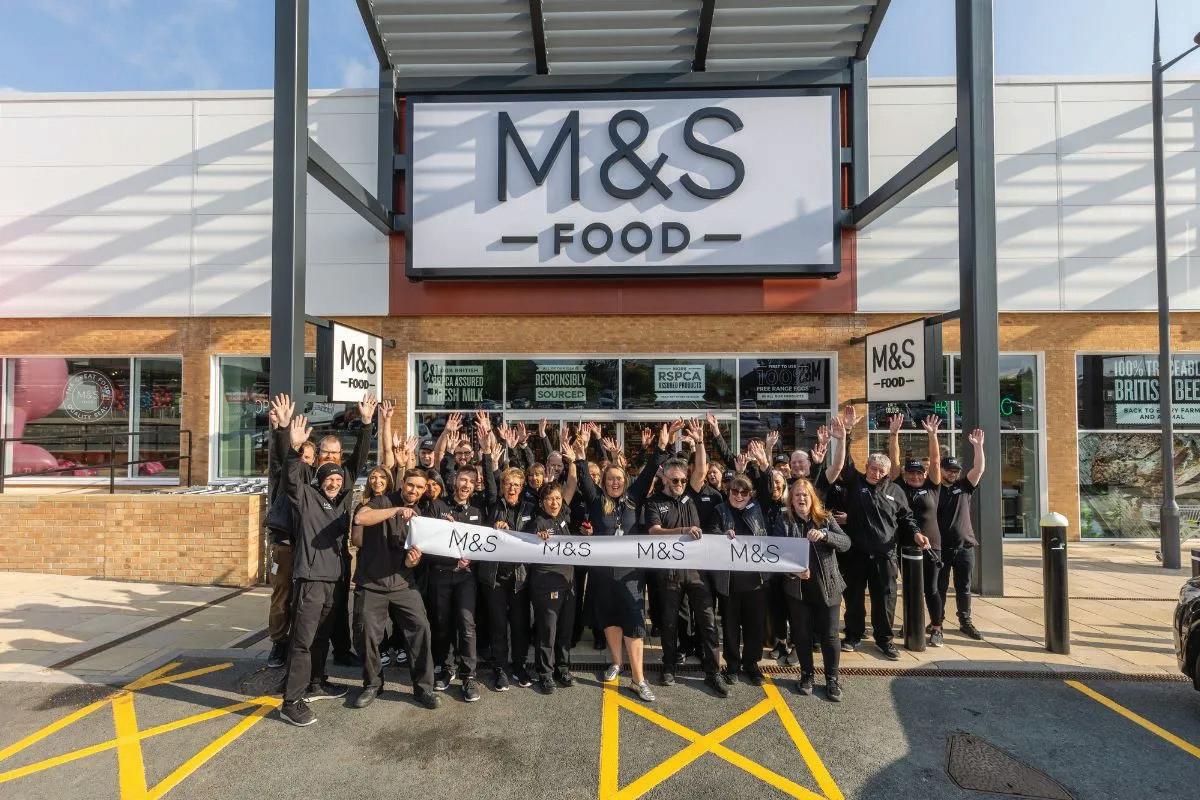
M&S Kingston Park has re-opened as a transformed fresh market-style foodhall, following a two-month closure while work took place.

Carrefour has announced that it has entered into exclusive negotiations with NewPrinces Group regarding the sale of all its operations in Italy.

Lidl GB has become the first discounter to introduce a health marker to its own-label products: Live Well.

The nation’s largest manufacturing industry and a cornerstone of regional employment and economic resilience.

The Upper Coomera Shopping Centre officially opened its doors in the Gold Coast, providing a modern hub for the local community.
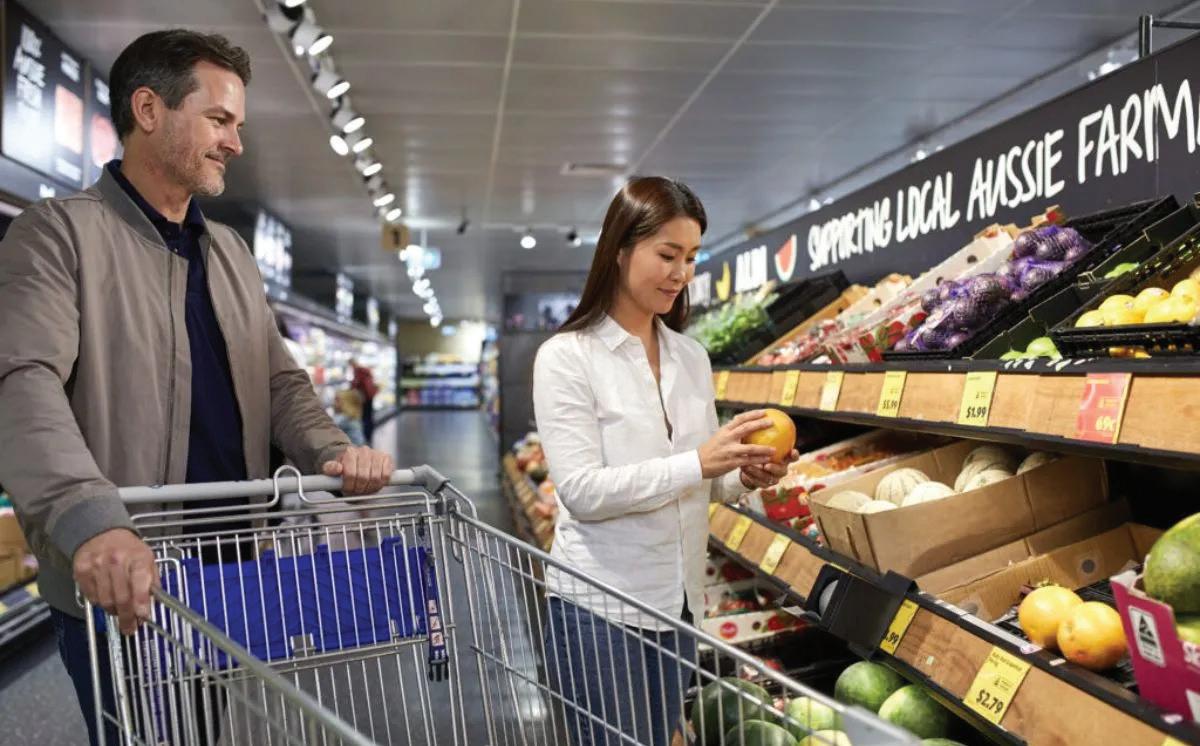
ALDI Australia has been crowned once again Australia’s best-rated supermarket with the highest number of satisfied customers.

After more than 20 years of supporting fair pricing practices in-store, the Supermarket Scanning Code of Practice has officially been retired.





Woolworths
Woolworths has introduced two new celebration cakes designed to bring the "wow" factor of a boutique bakery creation directly to local supermarkets for Aussie families.
These finish-at-home decorated cakes are the latest additions to Woolworths’ dessert range, rolled out in response to growing shopper demand for both value and quality, offering creative celebration solutions for every occasion.

CJ Foods
CJ Foods has accelerated the global expansion of K-food by introducing bibigo K-style chicken to Australia for the first time.
CJ Foods announced the launch of bibigo Korean Style Fried Chicken at Woolworths, Australia’s largest supermarket chain. This marked the debut of bibigo chicken in the country, and the product is produced locally for the Australian market.
The new bibigo Korean Style Fried Chicken is available in two authentic flavours - Sweet & Spicy Sauce and Soy

Honey Sauce, each crafted to deliver a distinct sensory experience. Made from 100% whole chicken breast cuts with a light and crispy batter, the chicken is frozen and easy to prepare at home using an oven or air fryer.
Grill'd
For the first time ever, Grill’d is set to launch a retail range of its delicious, healthy burger patties exclusively at Coles.
Available in-store and online at Coles, the Grill’d range includes three mouthwatering options with the same commitment to flavour, quality and health that you’d expect in-restaurant.
With Coles research finding that over one in two Australians say they have an interest in recreating their restaurant or takeaway dinner in their own kitchen, and a 'familiar taste' is the top driver of meal choice - the new range is designed to help more home cooks easily create their own delicious Grill’d burgers, no chef skills required.

Heinz
HEINZ has teamed up with the world’s largest smoothie brand, Smoothie King, to go all in and settle the debate. Introducing: The HEINZ Tomato Ketchup Smoothie, the first-ever ketchup-based smoothie, which blends real fruits with HEINZ Simply Tomato Ketchup to create a delicious and refreshing summer sip.
Kraft
Kraft Mac & Cheese has served up a slice with its newest limitededition flavour: Pizza.
With bold, savoury notes of garlic and classic Italian spices, Kraft captures the essence of a classic slice in every bite, bringing pizza-y goodness to its signature mac & cheese.
To celebrate the launch, fans in New York City, Chicago, and Detroit, three of the most iconic pizza capitals of the United States, can get Kraft’s newest flavour delivered just like a pizza straight to their doorstep in as little as fifteen minutes in a custom Kraft Mac & Cheese pizza delivery box.
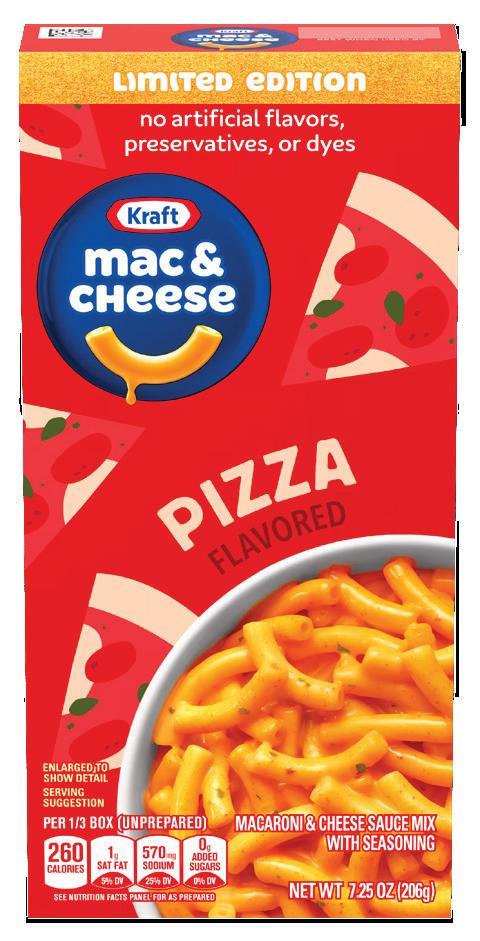



Ottolenghi
Ottolenghi has opened up its freezer with the launch of a brand-new range of ice creams. They've taken three flavours, vanilla, pistachio and coffee, and folded in the sort of combinations that make them smile. Miso caramel with vanilla, sour cherry with pistachio, and cardamom with coffee.
Nestlé
Renowned chocolate brands Aero, Milkybar, and Munchies have joined forces to introduce a delightful array of bakery-inspired treats.
Abrand-new bakery-inspired range from Nestlé Confectionery is set to delight fans across the UK this August. The exciting lineup features Aero Double Choc Brownie Flavour, Milkybar Crispy Cookie, and Munchies Vanilla Cheesecake Flavour, all inspired by beloved baked treats.




Whole Foods Market opened a new 46,711-square-foot store, in Reston, Virginia.
The new location has replaced the longstanding Reston store (11660 Plaza America Drive), which has served the community since 1996. The new store’s product assortment features more than 400 local items from Virginia, Maryland and D.C., each meeting Whole Foods Market’s rigorous quality standards.
“My career with Whole Foods Market began eighteen years ago as a part-time cashier, and I immediately loved the incredible sense of community in the store,” said Habetamu Bula, Store Team Leader at Whole Foods Market.
“This new, larger store will have more seating space for gathering, which I hope will only help deepen the sense of community and connection. My team and I are thrilled to open this beautiful new store and continue serving the wonderful Reston community with the same expertise and service we’ve proudly delivered for the past three decades.”
Features of the relocated Reston store include:
• An array of certified organic, conventional and Sourced for Good produce, plus offerings from more than nine local farms, including peppers and eggplants from Superfood, tomatoes, cucumbers and zucchini from Lancaster Farms and assorted vegetables from Colour Orchids.
• Specialty department dedicated to celebrating cheesemakers and artisan producers. Local items include Firehook Baked Crackers, La Pasta Company and Gotham Greens. The cheese counter is overseen by trained cheesemongers who can offer recommendations for any occasion.
• Curated grocery section filled with exclusive brand favourites and local products, including date-sweetened chocolate from Bon Appesweet and ice cream sandwiches from Nightingale Ice Cream.





This new, larger store will have more seating space for gathering, which I hope will only help deepen the sense of community and connection. My team and I are thrilled to open this beautiful new store and continue serving the wonderful Reston community with the same expertise and service we’ve proudly delivered for the past three decades.
• Full-service seafood counter featuring only sustainable wild-caught or Responsibly Farmed seafood and a large selection of ready-to-cook seafood. Local seafood options include smoked salmon from Ivy City Smokehouse, crabmeat from JM Clayton, crab products from Jimmy’s Famous Seafood, including dip, soups and macaroni and cheese, oysters from Sapidus Farms and finfish from Georges Seafood.
• Full-service meat counter with butchers available to cut steaks and poultry to order. Local options include dry-aged beef, sausage made in-house and grass-fed beef from Grayson Farms.
• Extensive selection of more than 220 craft beers and more than 530 wines. Local brands include The Veil, Aslin Brewing and Potter’s Cider.
• A Prepared Foods department featuring hot food and salad bars, pizza, made-toorder sandwiches and sushi rolled fresh daily from Genji.
• Full-service coffee bar brewing a variety of roasts and serving made-to-order seasonal and everyday tea and coffee beverages.
• Bakery department offering bread baked in-house as well as everyday favourites, such as Whole Foods Market’s Berry Chantilly Cake and brown butter cookies. The department also carries a wide variety of special diet items, including vegan brownies, cakes and chocolate chip cookies,
along with several gluten-free selections. Local offerings include cookies and pies from Whisked by Jenna, vegan cake slices from Sweet and Natural, baklava from Cedar’s and cheesecake from Hiatus.
• Whole Body department with a large assortment of wellness, beauty and lifestyle items. Local products include African black soap from Ayeya, assorted bath bombs from Sunrise Soap Company, deodorant from Stinkbug Naturals and Omega-3 DHA brain booster from Tiny Sprouts.
Opening morning, customers enjoyed complimentary coffee and bites from Cafe Kreyol and Whisked by Jenna. The first 300 customers in line also received a custom tote bag and Secret Saver coupon featuring offers up to USD 100 off.
Additionally, on opening morning, Northern Virginia Food Rescue received a food donation as part of Whole Foods Market’s Nourishing Our Neighborhoods Program.
The nonprofit previously received a van through this initiative, which aims to enhance the operational capabilities of local food rescue organisations, enabling efficient transport of food from surplus locations to areas with the greatest need. Whole Foods Market is also donating to area organisations, Cornerstones and Anna Sudha Community Kitchens.





Amazon has announced that customers can now order fresh groceries with their Same-Day Delivery orders, with plans to expand to over 2,300 across the U.S. by year-end.
This marked one of the most significant grocery expansions for Amazon as the company introduced thousands of perishable food items into its existing logistics network, which is already optimised for speed and efficiency.
Customers will have the option to order produce, dairy, meat, seafood, baked goods, and frozen foods, alongside the millions of items such as everyday household essentials, electronics, fashion, home and garden, and more already available for Same-Day Delivery online.
Customers have been looking to make their budgets stretch further, and that’s why Amazon has focused on offering a wide selection of national and local brands, including organic and natural options, at an incredible value through this new offering. For Prime members, Same-Day Delivery is free for orders over USD 25 in most cities. If an order doesn’t meet the minimum, members can still choose Same-Day Delivery
for a USD 2.99 fee. For customers without a Prime membership, the service is available with a USD 12.99 fee, regardless of order size.
“We’re continuously innovating to make grocery shopping simpler, faster, and more affordable for our customers, especially Prime members,” said Doug Herrington, CEO of Worldwide Amazon Stores.
“By introducing fresh groceries into our Same-Day Delivery service, we’re creating a quick and easy experience for customers. They can order milk alongside electronics; oranges, apples, and potatoes with a mystery novel; and frozen pizza at the same time as tools for their next home improvement project and check out with one cart and have everything delivered to their doorstep within hours.”
When Amazon began to add perishable groceries like bananas, milk, eggs, bread, and ice cream to its Same-Day Delivery service in regions like Phoenix, AZ, Orlando, FL, and Kansas City, MO, customers embraced the convenience.
Many of these shoppers were first-time Amazon grocery customers who now return to shop twice as often with the Same-Day Delivery service compared to those who didn’t purchase fresh food.
Early adoption in these regions showed
the popularity of groceries among Prime members, with strawberries now consistently knocking AirPods out of the top five best sellers of all products sold, while bananas, Honeycrisp apples, limes, and avocados round out the top 10 most popular perishable grocery items in SameDay Delivery carts.
Now, customers in cities like Raleigh, NC, Milwaukee, WI, Tampa, FL, Columbus, OH, and many more can discover this new convenience too.
“After trying this service for occasional items, customers have discovered how much we’ve simplified online grocery shopping,” added Herrington.
Amazon has worked hard to ensure customers can feel confident in the fresh food they’re purchasing online. Its specialised temperature-controlled fulfilment network ensures customers receive fresh, high-quality perishable grocery items, with every item undergoing a sixpoint quality check upon arrival and before leaving for delivery.
Temperature-sensitive products are delivered in insulated bags that are recyclable in most curbside recycling programs, the same used for Amazon Fresh and Whole Foods Market deliveries, to ensure items remain at appropriate temperatures.
Amazon has spent over 25 years setting the standard for selection, speed, and value across millions of products, and it has brought that same commitment to groceries.
Already a go-to destination for grocery shopping for over 150 million Americans, Amazon generated over USD 100 billion in gross sales of groceries and household essentials in 2024, not including sales from Whole Foods Market and Amazon Fresh.
Amazon will continue expanding this capability to additional cities and towns through 2026. n

The role of vending machines has evolved significantly across ANZ in recent years, particularly in relation to convenience and impulse snacking.
Trent Sullivan, Director of Royal Vending, covering New Zealand, Australia, the UK, and worldwide, stated that there is now a stronger focus on the quality and reliability of the machines.
“The smart fridge has shifted the experience, giving customers a more interactive and modern way to shop, and that often translates to stronger sales,” said Sullivan.
Smart fridges have become the clear standout at the moment as they allow for a broader range of products in different shapes and sizes. Customers can see, touch, take, and place back products before making a purchase, which builds trust and makes the whole experience feel more interactive and premium.
These smart fridges have also unlocked locations that are challenging to service with traditional retail methods.
“Offices, gyms, co-working spaces and other high-traffic environments often do not suit a full retail setup. A smart fridge fits in perfectly. It gives brands visibility in places where shelf space is limited or unavailable. It is a flexible, secure and low-risk way to expand reach.”
Sullivan has observed a growing demand for more broad, unique and niche snacking products, which makes vending a more appealing solution for customers. Highprotein snacks and drinks have been performing well, with more interest in low-sugar soft drinks and "better for you" options across the board.
The energy drinks category has grown, especially those with healthier ingredients and slower-release energy. Coffee has also continued to be a strong performer, with more cold brew and premium ready-to-drink options now available in vending machines.
On the labour front, vending has been low-touch and far more efficient. Sullivan said that operating costs stay low and provide complete visibility into what has been sold and when. There is also a massive opportunity
for brands to work directly with vending suppliers to gain access to prime locations, such as airports and shopping centres.
Sullivan added that it all came down to smarter and more cost-effective ways to serve people.
“People want things to be easy and fast. That means the machines need to be reliable, and payments must be seamless, especially with contactless options. Freshness is also critical. If a product looks and tastes fresh, customers are more likely to return. A wellstocked and clean machine says a lot about the brand and the operator behind it.”
Visual presentation is also key. A clean, well-branded machine makes a strong first impression. Product placement within the machine is also crucial, with the range being tailored to the audience.
Looking ahead, Sullivan said the future is in smart fridges with built-in cameras and weight tracking. This technology will create a more interactive and engaging customer experience, leading to stronger brand connections and increased sales.
“Keep a close eye on what the bigger brands are doing or planning. They have the budget to test and find out what works. You do not need to copy them directly, but you can learn from their strategies and adapt those ideas to suit your brand and your audience. Be smart, be creative, and you will stay competitive.” n





Morrisons has opened a new Morrisons Daily store in Castleford, West Yorkshire, to provide a fresh and affordable shopping experience to the local area.
The 4,200 sq ft store is located on the edge of town, near residential communities where over 600 new houses are currently under construction. With more than GBP five million invested in developing the area, it’s the perfect spot for locals to grab the essentials they need and fill their baskets with the products they know and love.
The Morrisons Daily is part of a newly built forecourt designed to support the expansion of the local area by providing everything residents need.
The store is also conveniently located between two motorway junctions on the M62 (J31 and J32), making it ideal for travellers to fill up or charge their cars with the 3,000 kW rapid chargers that are available, or keep themselves fuelled up with food from the grab & go section.
“The opening of this new store couldn’t come at a better time as the area continues to grow and welcome new residents and
businesses. It’s a great example of how our franchise model can bring high-quality retail services and fresh food to expanding communities,” said Victoria Lockie, Head of Wholesale Strategic Projects & Acquisitions at Morrisons.
“We're proud to be partnering with Avon Retail and are confident the store will quickly become a valuable asset to those in the area or passing through.”
Avon Retail are taking on its largest franchise site yet, with its first Morrisons Daily store. By joining the Morrisons franchise network, they aim to offer customers a wide range of supermarketquality products from a brand they trust.
“As long-standing members of this community, we understand how vital it is for local residents to have convenient access to quality, affordable food,” said Yakub Valli, Director of Avon Retail.
“Our partnership with Morrisons allows us to provide just that, and we can’t wait for people to engage with the store’s wide range of products and services.”
Morrisons now has over 700 franchise stores operating in forecourts and local neighbourhoods across the UK. n
Following a transformation of its food hall, M&S at Swindon’s Orbital Shopping Park has opened its brand-new Coffee Shop.
Customers will find a fresh, modern design, with completely new lighting, floor and counter as well as a new menu to enjoy, from freshly cooked breakfast rolls, to toasties, wraps, sausage rolls and sandwiches, alongside beloved cakes and pastries.
The new 140-seater Coffee Shop also has almost twice as many seats, with plenty of choice from banquette seating to high stools with power sockets.
The new Coffee Shop is designed to deliver a simplified, quicker customer experience, with customers able to select their food from
the display area before heading to the counter to check out and order from the drinks menu, featuring barista-made coffees.
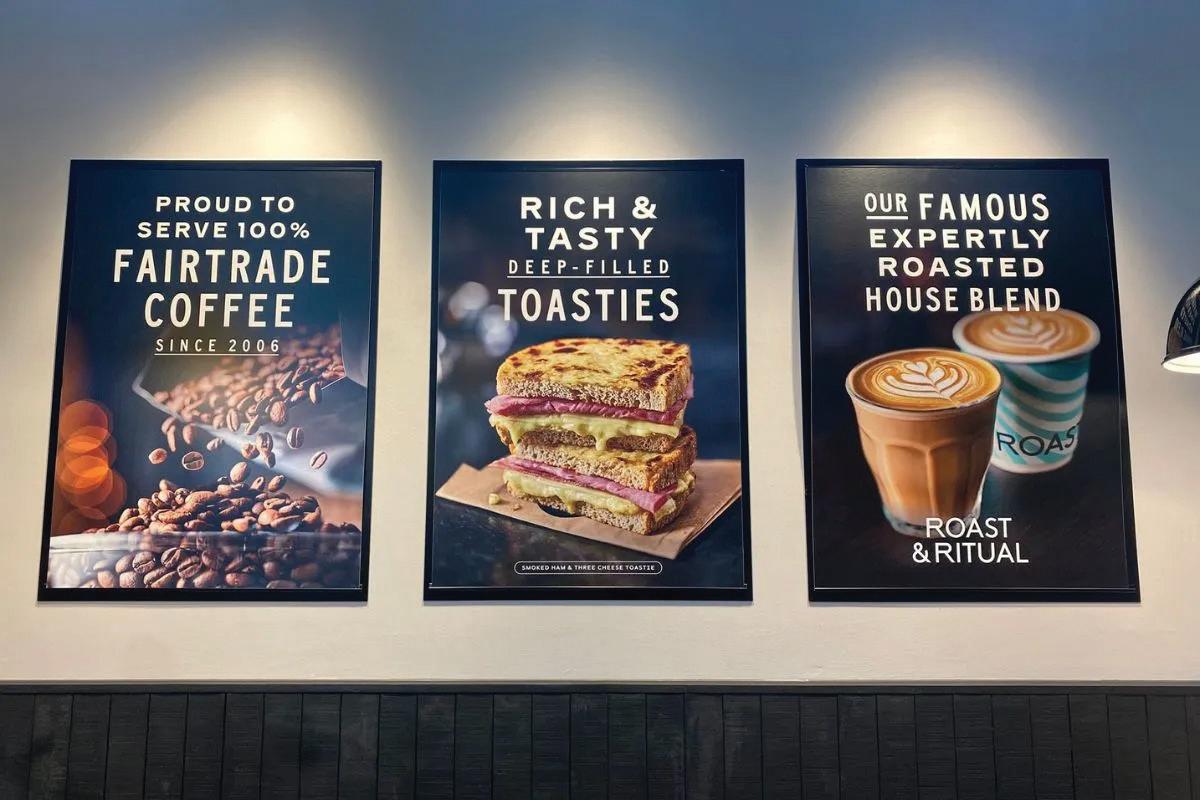
“We have counted down the days to reveal our brand-new Coffee Shop concept. The new, bigger layout means more seating, as well as speedier service, making the Coffee Shop the perfect pit-stop for customers on their shopping trip," said Eloise Alder, Store Manager at M&S Swindon Orbital.
"Must-try new products include our Iced Wild Strawberry Matcha, Big Marks Brioche Roll and our M&S Mini-Bite Showstopper cake."
M&S Swindon is one of 12 stores across the UK this financial year undergoing a renewal to deliver the best shopping experience for customers and store environment for colleagues.
The store’s new, bigger, fresh market-style foodhall features an in-store bakery and a dedicated Flower and Wine shop, while work on its fashion, beauty and home offer continues and is set to be finished soon. n
New World Matamata has just introduced the BotinKit robot chef in-store, allowing it to expand its offerings to a broader range of fresh meal solutions.
“For us, it all comes down to our customers,” said Vikas Satija, Store Manager, New World Matamata.
“It helps us to meet needs with both speed and convenience while maintaining great quality.”
Customers can now enjoy a diverse menu
of fresh, healthy dishes, from Sweet & Sour Pork and Prawn Fried Rice to Mongolian Beef. Satija said that the store currently offers six delicious meals with plans to offer more options in the near future.
He said the dishes are cooked fresh daily using the best quality protein and vegetables, sourced from local suppliers and go through several quality checks before reaching customers.
The response from the community has been fantastic, with customers enjoying the

variety of healthy options, the quality of the meals and the great taste. Many have come in to observe the interesting machine, which has added a fun and engaging element to the shopping experience.
For New World Matamata, the deli has been a busy environment with a high footprint, which is why Satija said efficiency was key. BotinKit’s smart features, such as preloaded recipes, voice reminders, automatic temperature control, seasoning, stir fry, and self-cleaning, have allowed the store team to maximise space while streamlining operations.
“These capabilities ensure every meal is prepared to the same high standard, delivering consistency, quality, and speed for our customers.”
According to Satija, technology like BotinKit will play an essential role in the future of supermarket foodservice; however, it will always complement rather than replace the skills and passion of people.
“It’s another tool that can enhance our capabilities and help meet changing customer needs. Every New World and Pak’NSave is individually owned and operated; each store will review its operations and decide if this type of innovation is the right fit for them.” n




